

16 Top-Rated Tourist Attractions in Honduras
Written by Karen Hastings Updated Sep 26, 2022 We may earn a commission from affiliate links ( )
A diamond in the rough, Honduras, Central America's second-largest country, dazzles visitors with its natural beauty and diverse wildlife. Nature lovers can explore idyllic Caribbean beaches, bird-rich lakes and jungles, and the undeveloped tropical rainforest of the Mosquito Coast, among many other attractions.
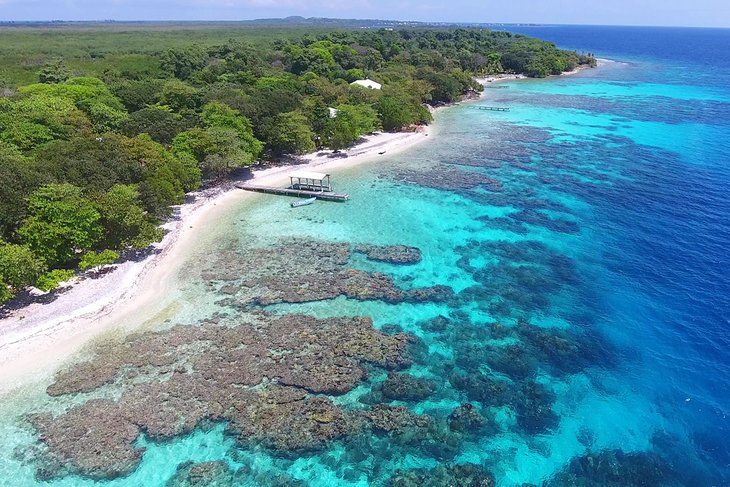
But the country's prized jewels are the beautiful Bay Islands. Ringed by thriving coral reefs – part of the world's second biggest barrier reef , which stretches north to Mexico – these laid-back islands lure many divers, snorkelers, and travelers seeking a relaxed tropical vibe.
Rich in culture, Honduras is also home to the archeological treasures of Copán , one of the finest Maya sites in the world. Other adventures include dolphin encounters, birding tours, rafting trips, and the chance to swim with gentle whale sharks.
Discover a world of wonder in this diverse country, with our list of the top attractions and places to visit in Honduras.
1. Roatán, Bay Islands
2. copán ruins archeological site, 3. utila, bay islands, 4. dolphin encounter, roatán institute for marine sciences, 5. museum of mayan sculpture, copán, 6. la tigra national park, 7. lake yojoa (lago de yojoa), 8. parque nacional jeanette kawas, 9. cayos cochinos, 10. lancetilla botanical gardens, 11. río plátano biosphere reserve, mosquito coast, 12. museum of national identity, tegucigalpa, 13. cusuco national park, 14. carambola botanical gardens & trails, roatán, 15. little french key, bay islands, 16. pico bonito national park.
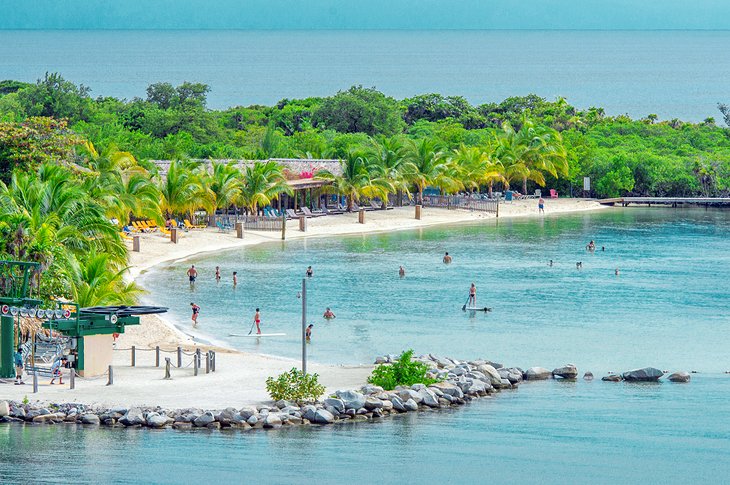
Roatán is the largest and most developed of the Bay Islands. Once a well-kept secret, it is now a cruise ship port and a popular vacation destination – especially for avid divers and snorkelers.
A mountainous backbone undulates through the island's center, and flourishing coral reefs fringe its shores, offering superb opportunities for diving and deep-sea fishing .
Even with the influx of travelers, Roatán's beaches are beautiful. One of the best strands is West Bay Beach. Although packed on cruise ship days, it ticks all the boxes, with clear waters, snorkeling, swaying palms, and plenty of shops and restaurants nearby.
The small community of Sandy Bay is the cultural center of Roatán. Top tourist attractions here include the Roatán Institute of Marine Sciences with its popular dolphin encounters; Roatán Museum ; the Carambola Gardens, a favorite with nature lovers; and the Roatán Marine Park , with excellent snorkeling.
Craving a cute animal encounter? Head to Manawakie Park , where you can cuddle sloths and get up close to capuchin monkeys, as well as soak up a dose of Honduran culture. Gumbalimba Park is another haven for wildlife lovers with sloths and monkeys. You can also pose for a photo with colorful macaws and soar through the jungle on an exhilarating zipline.
Other top things to do in Roatan include visiting the environmentally friendly Blue Harbor Tropical Arboretum and the Butterfly Gardens. Tucked in tropical fruit trees, the garden spotlights butterfly species native to Honduras and the Bay Islands.
French Harbour is Roatán's biggest fishing port and the economic engine of the island. A popular attraction here is Arch's Iguana and Marine Park .
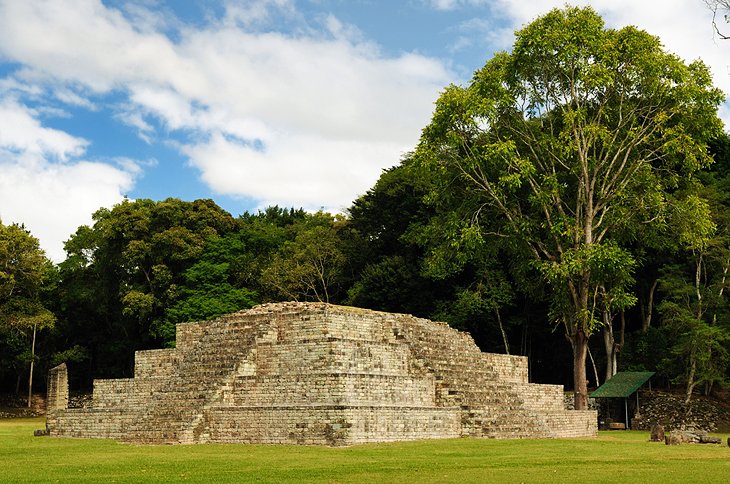
Copán Ruins Archeological Site (Copán Ruinas Sitio Arqueológico) is the most studied Maya city in the world and a UNESCO World Heritage Site . Dating back nearly 2,000 years, the society that lived here was highly stratified, deeply symbolic, and focused on tradition.
You will find plenty to appreciate here. The site is famous for the stelae and altars that are scattered around the immense plaza, most of which were erected during the years 711 and 736. Other highlights include the ball court; the Hieroglyphic Stairway, a unique temple, which holds the longest known Mayan text; and the Acropolis featuring superb carved reliefs of the 16 kings of Copán.
About 1.6 kilometers from the central acropolis, Las Sepulturas archaeological site forms part of the "PAC" (Proyecto Arqueológico Copán) and provides valuable insight into how the Mayan elite lived during the days before the collapse of Copán. While you're exploring the site, keep an eye out for the spectacular scarlet macaws flying among the ruins.
After touring the ruins, don't miss the Museum of Mayan Sculpture , which displays impressive artifacts recovered from the site. Many visitors also like to stroll along the well-signed nature trails , where birds and butterflies dart among the thick foliage.
Not far from Copán, El Puente is a smaller Mayan archaeological site on the Chinamito River with several pyramids that have been partially restored.
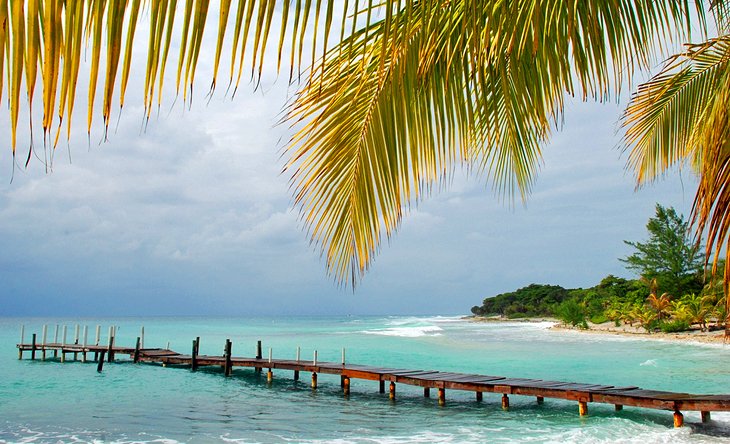
About 32 kilometers from the west coast of Roatán , Utila is the most budget-friendly of the Bay Islands. Backpackers flock to this small, 13-kilometer-long-island, and many visitors come here on affordable dive vacations.
Presiding over an arching bay, Utila Town is the main settlement, where locals compete fiercely over domino games and tourist shops and dive centers dot the streets. Save time to enjoy some fresh seafood and traditional Honduras cuisine at one of the funky waterfront restaurants here.
Besides diving, most visitors bide their time basking on the two slivers of beach, snorkeling in the lagoon, zipping out to a sprinkling of cays off the island's southwest coast, and soaking up the rustic tropical vibe. You can also get up close to some of the island's wildlife at the Iguana Research & Breeding Station .
Dive operators also offer the chance to dive or swim with whale sharks . These gentle giants are frequently spotted in the waters around the island - especially during March to April and August to September.
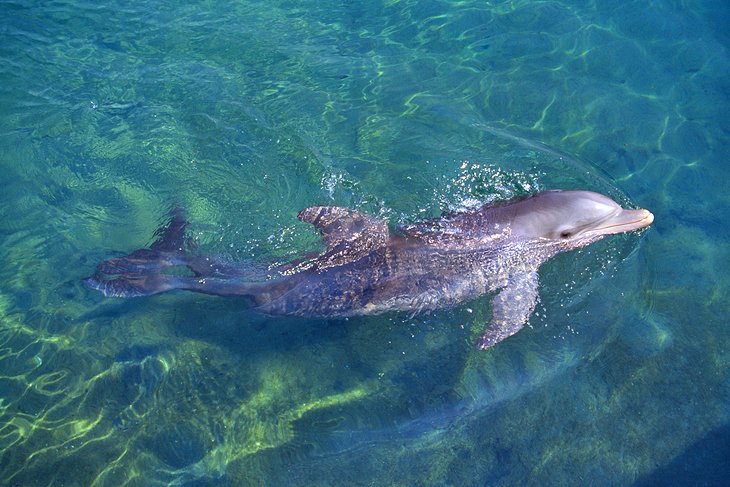
On the northwest coast of Roatán at Anthony's Key Resort , the Roatán Institute of Marine Sciences offers an unforgettable dolphin experience. Best of all, it takes place in a natural lagoon, where the dolphins are free to swim around in a large area like they do in the wild. The center also educates locals and visitors about marine ecology.
Besotted animal lovers can swim and snorkel with the dolphins, play simple games with them, participate in a dolphin specialty course, or enjoy a dolphin dive experience. Budding marine biologists can also sign up for the "Dolphin Trainer for a Day" program and perform their own dolphin show for their proud parents at the end.
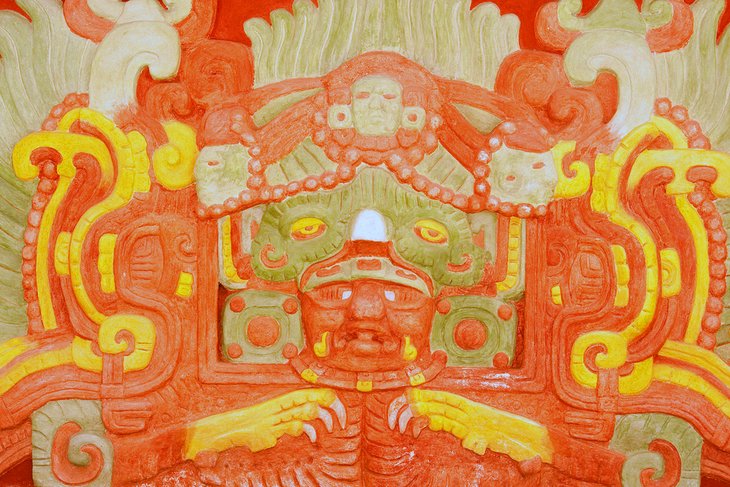
At the Copán Ruins Archeological Site, the superb Museum of Mayan Sculpture is an essential stop on any visit to the ruins. It displays a series of original pieces of sculpture, stelae, and altars recovered from the site.
The museum, which tunnels through a hillside before opening out into a vast sunlit open space, is best visited after touring the ruins to understand where the pieces on display originally belonged.
The collection has a total of over 3,000 pieces of original Maya sculpture and carvings depicting spiritual entities, people, and sacred animals like macaws and bats. There are also several buildings on-site that were rebuilt from the pieces found in the nearby dig site.
Undoubtedly, the masterpiece here is the full-sized replica of the ornate Rosalila Temple , discovered intact under structure 16 in the acropolis.
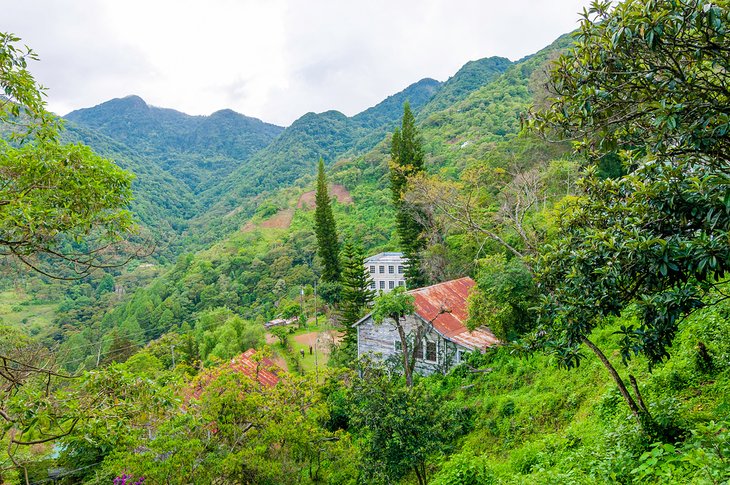
About 20 kilometers from Tegucigalpa, La Tigra National Park (Parque Nacional La Tigra) is one of the most beautiful places to visit in Honduras. Perched at an altitude of 2,270 meters, this unspoiled park preserves a lush cloud forest that is home to ocelots , pumas , and monkeys , although it's rare to see these larger mammals.
This is one of the most visited parks in Honduras and offers a vision of how the area looked long before logging claimed much of the surrounding forests.
The park is also a haven for birds - more than 200 species flit within its borders, including toucans, trogons, and the elusive quetzal. Well-marked hiking trails wind through the thick forest, where bromeliads and orchids flourish.
Stop by the visitor's center at each entrance for maps and park information and to pay the admission fee. Guides can also be arranged here.
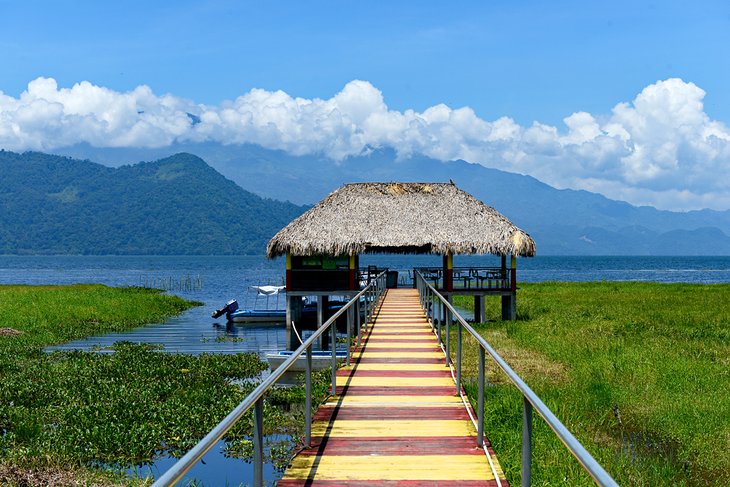
Along the main road between Tegucigalpa and San Pedro Sula, Lago de Yojoa is the largest natural lake in Honduras and a haven for birders . More than 480 species have been spotted here, including whistling ducks, northern jacanas, and crakes.
You can explore this shallow lake from shore, or glide through the reeds in a canoe or kayak. Two mountainous national parks border the lake: Santa Bárbara National Park on the northern shore and Cerro Azul Meambar National Park to the south.
Other popular things to do in the area include hikes to waterfalls, exploring an underground cave system, and tours of coffee plantations and archeological sites.
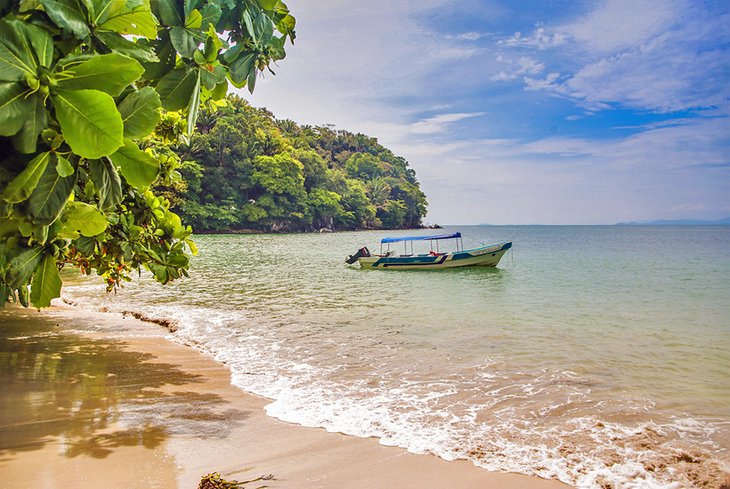
Formerly known as the Punta Sal National Park , this beautiful wilderness area is now named after the environmental activist, Jeanette Kawas, who fought passionately during her life to preserve its rich ecosystems.
The park stretches along a peninsula at the western end of the Bay of Tela and supports diverse habitats, from tropical jungle, mangroves, and wetlands to sparkling beaches and coral reefs.
Wildlife is abundant and includes many rare species. Visitors may encounter dolphins; howler monkeys; and a large variety of tropical birds, including toucans, quetzals, and motmots. The Micos Lagoon has the highest population of birds in the area, with up to 350 different species.
Tour operators run day trips to the park from Tela, which typically include a hike across the peninsula to a pretty beach, swimming, snorkeling, or diving and an optional visit to the traditional Garifuna village of Miami on a picturesque beach and lagoon.
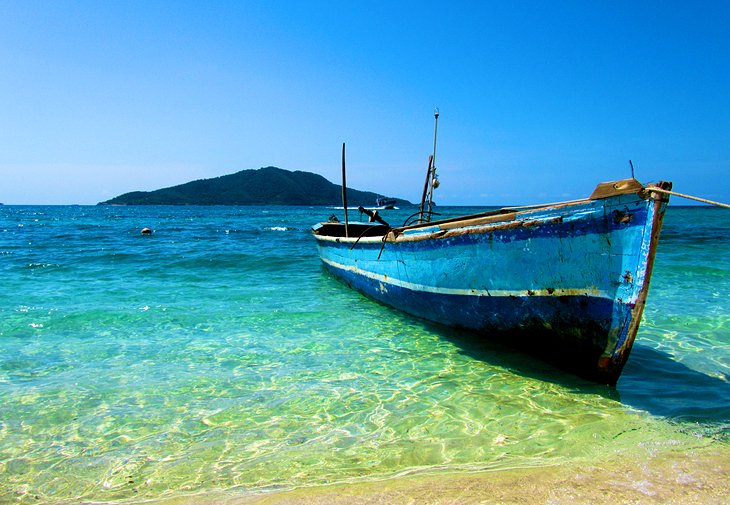
Also known as the Hog Islands, the archipelago of Cayos Cochinos is an undeveloped, quintessential tropical paradise. This group of small, privately-owned islands and cays lies 17 kilometers off the coast near the old banana port of La Ceiba .
The islands and the black coral reefs that surround them are a Marine Biological Reserve and remain pristine due to their remote location and difficult access. A true back-to-nature experience, Cayos Cochinos offer excellent snorkeling, diving, hiking, and bird-watching.
Accommodation options include rustic eco resorts, as well as hammocks or huts at local Garifuna villages . The islands are accessible only by boat from La Ceiba, Roatán, or Utila.
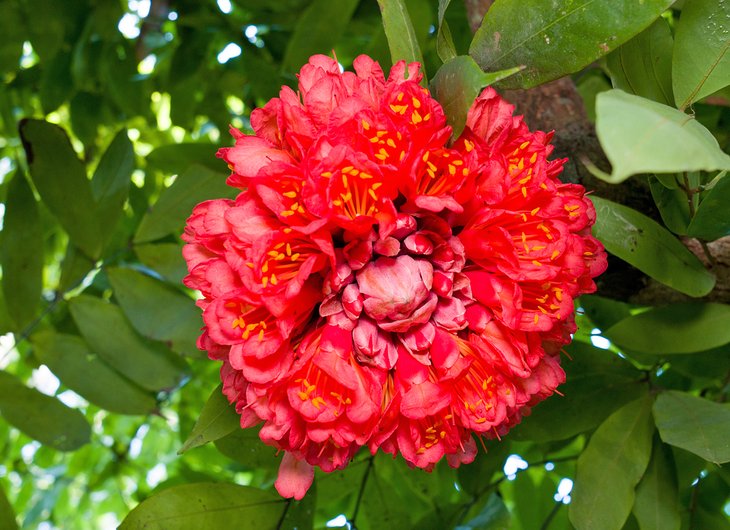
About five kilometers from the city of Tela , Lancetilla Botanical Gardens are the second largest tropical botanical gardens in the world .
In 1926, the United Fruit Company established the gardens as an experimental site to test the economic viability of various fruit and hardwood trees. Today, the magnificent groves of trees from Central America and other tropical regions comprise part of a protected wildlife corridor along the country's north coast.
More than 200 species of tropical birds have also made the garden home due to the abundance of fruit trees. Birders will be rewarded with many sightings as they wander along the well-marked trails through profuse plantings of palms, orchids, and mango trees, among others.
One particularly beautiful path leads through a tunnel of bamboo trees to a swimming hole in the Lancetilla River, a refreshing place for a cool dip after a long, hot walk.
This is a place where it's definitely worth organizing a guided tour, so you can learn interesting facts about all the different trees and plants in the gardens.
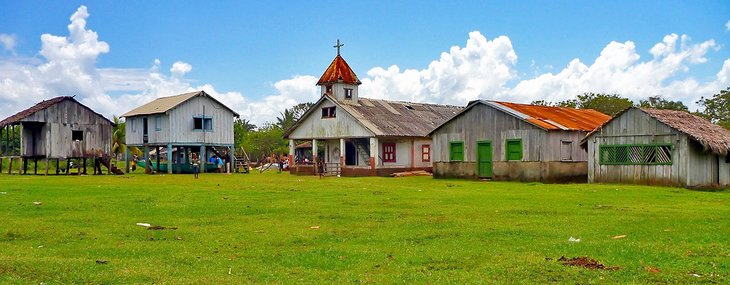
In 2011, UNESCO placed this massive swath of jungle along the remote Mosquito Coast on the World Heritage in Danger list . It is one of the few remaining tropical rainforests in Central America.
The reserve lies in the watershed of the Río Plátano and forms a mosaic of lowland tropical rainforest, coastal lagoons, undisturbed beaches, mangroves, grasslands, and patches of pine savannah.
Steeped in tropical humidity, this important wilderness area harbors a rich diversity of wildlife, including howler monkeys, scarlet macaws, giant leatherback turtles, toucans, and tapirs. Sadly, reports of logging and hunting continue to threaten the reserve's fragile habitats.
Sloping down to the Caribbean Sea, the mountainous landscape is also home to more than 2,000 indigenous people of the Miskito and Pech tribes, as well as the Garífuna, who continue to live their traditional lifestyle. Archaeological sites also lie within its borders.
The best way to explore the Río Plátano Biosphere Reserve is on an organized tour. Experienced guides can take you to the safe places to visit in this remote area of Honduras, away from drug smugglers and illegal loggers who often venture deep into the reserve. Ecotourism companies offer wilderness adventures and rafting trips down the Río Plátano.
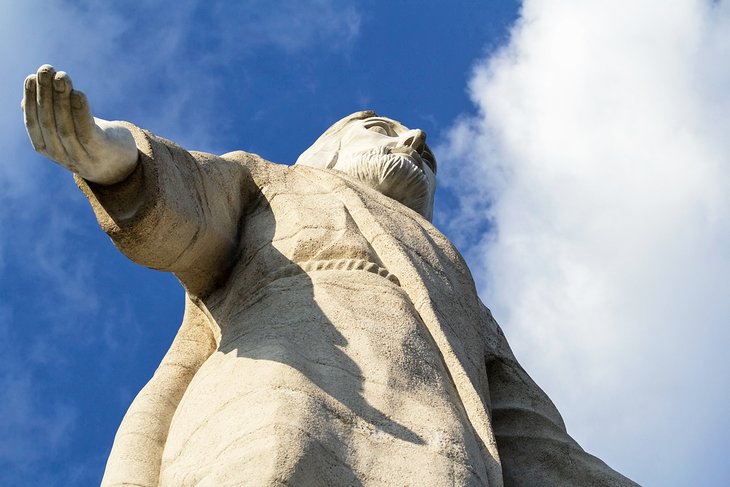
For a dose of Honduras culture and a journey through the country's history, visitors should stop by the excellent Museum of National Identity (Museo para la Identidad Nacional). This is one of the top things to do in Tegucigalpa, the country's capital.
Occupying a beautiful National Heritage building known as Palacio de los Ministerios , the museum also displays an impressive collection of Honduran and international art. Historic exhibits unveil the country's fascinating past, from pre-Hispanic times to the present day.
A highlight here is the virtual tour of the Mayan Acropolis of Copan, which provides a great primer for those who haven't yet visited the attraction and a welcome recap for those who have. Parking is scarce in this central city location, but taxis will take visitors directly to the door.
Another top place to visit in Tegucigalpa is the Parque Naciones Unidas El Picacho . Drive or catch a taxi to the park, which lies about six kilometers outside the city, and hike the trails to one of the city's iconic landmarks: the 20-meter-high statue of El Christo del Picacho , which towers over the capital. Best of all, you can enjoy panoramic views over the city to the mountains beyond.
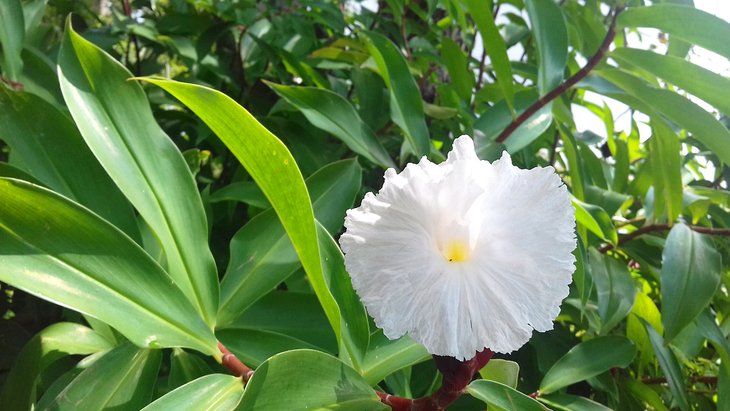
Located in Corinto, just west of San Pedro Sula in the Merendon Mountain Range, Cusuco National Park (Parque Nacional El Cusuco ) is famous for its enigmatic quetzal, one of the loveliest of all tropical birds. Sadly, habitat loss and unsustainable hunting for its beautiful long tail feather have pushed it to the brink of extinction.
The park's exceptional biodiversity also includes threatened species of frogs and salamander, jewel scarab beetles, Baird's tapir, and more than 260 species of birds. The reserve is also home to several species of wild cats, including the ocelot, margay, and jaguar.
The park's frogs are among its most important residents, playing a vital role in controlling the insect population. They also perform other important functions within the ecosystem which, in turn, influences the health of the residents of San Pedro Sula.
Hikers can enjoy some challenging trails here – the park's highest point rises to 2,200 meters above sea level. Local guides can provide access details and share information about the rich flora and fauna.
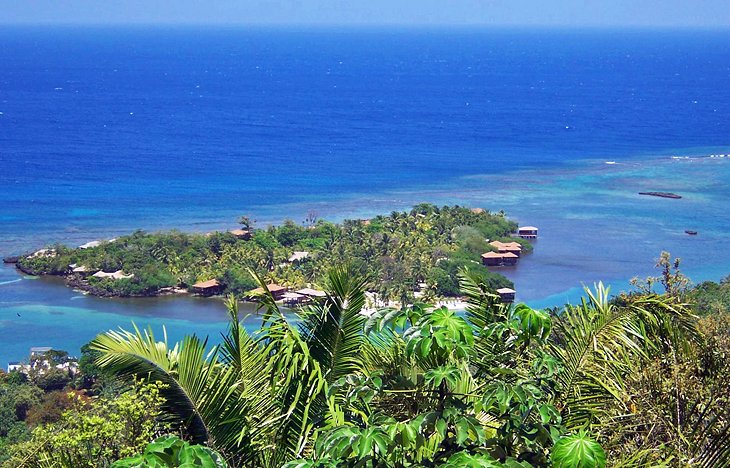
Beautiful Carambola Botanical Gardens & Trails offers a tranquil island nature experience. Trails wind through forests of fruit trees, palms, ferns, orchids, spices, and mahogany.
For breathtaking views, follow the mountain path to the top of the ridge, where a lookout peers out over the azure Caribbean, the adjacent barrier reef, and for those who time it well, dolphins leaping from the water at Anthony's Key Resort.
Along the way, keep an eye out for some of the tropical wildlife. Colorful birds dart throughout the foliage, and you might also spot Roatan Anoli lizards and entertaining parades of leafcutter ants.
Also in the gardens, Iguana Wall is a sheer section of cliff that offers a breeding area for iguanas and parrots.
Official site: http://www.carambolagardens.com/
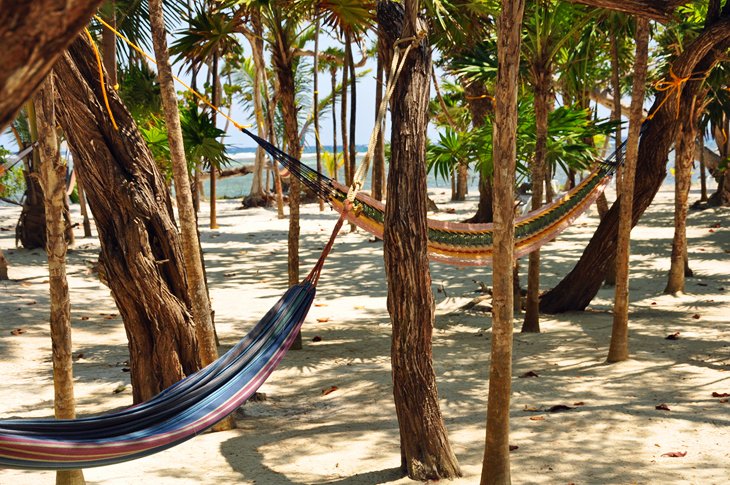
A popular day trip from Roatán , Little French Key is an eco-friendly tropical paradise off the island's south shore. Anyone seeking a tranquil tropical experience in manicured surrounds will enjoy it here. Imagine hammocks slung between coconut palms, sparkling clear waters with fantastic snorkeling, and a pretty white-sand beach with kayaks and chaises loungues.
After a few hours of beach fun, you can dine on fresh seafood at the restaurant or head to the wildlife sanctuary for close-up animal encounters. Sanctuary residents include rescue animals such as monkeys, deer, and toucans.
Feel like some more pampering to go with your beach basking? Sign up for a massage, manicure, or pedicure while you're here.
Official site: http://www.littlefrenchkey.com/
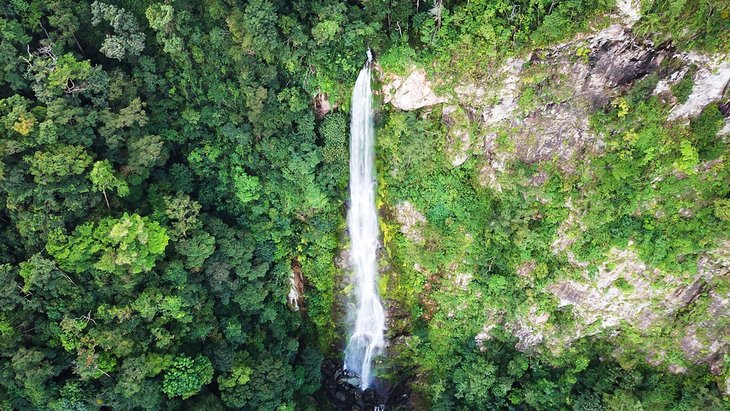
Pico Bonito National Park is a nature lover's paradise and one of the most popular hiking areas in Honduras . Located near the northern coastal city of La Ceiba, the 2,480-meter summit of Pico Bonito is a landmark visible from the Bay Islands.
In addition to the park's lush green rainforests and diverse wildlife, the park is full of dramatic waterfalls , some of which can be viewed from the road.
The park offers a variety of hiking trails, including the moderate one-hour La Roca loop that offers thrilling views from a swing bridge that crosses the Cangrejal River . There are also longer, more challenging trails that visit waterfalls and swimming holes, as well as scenic vistas.
Most of the trailheads are located at the park's visitor center, located only a few kilometers from La Ceiba.

More on Honduras
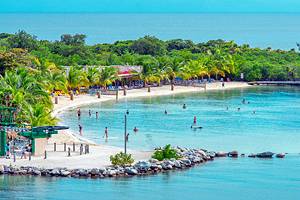

Touropia Travel
Discover the World
17 Top Tourist Attractions in Honduras
By Jamie Gambetta · Last updated on May 7, 2024
Located in Central America, Honduras is a tropical paradise attracting many tourists every year to its gorgeous islands, lush rainforests and picturesque mountains.
With its immediate access to the world’s second largest barrier reef, Honduras presents some of the best diving and snorkeling opportunities in the Caribbean. It also has a collection of biosphere reserves, national parks and marine reserves. All combine to protect and showcase the country’s astounding natural habitats. Add in some easy access and your days lounging by the beach can easily be balanced by epic outdoor adventures.
Not far from these memorable locations are equally splendid coffee plantations. These are surrounded by quaint small towns where indigenous culture runs strong. Elsewhere, old colonial settlements established by conquistadors maintain amazing heritage and architecture.
What’s more, there are many tourist attractions in Honduras like ancient Mayan ruins and festive celebrations. From whitewater rafting to hiking and exotic wildlife viewing, there is no end to fun things to do and adventure here.
17. Pulhapanzak Waterfall
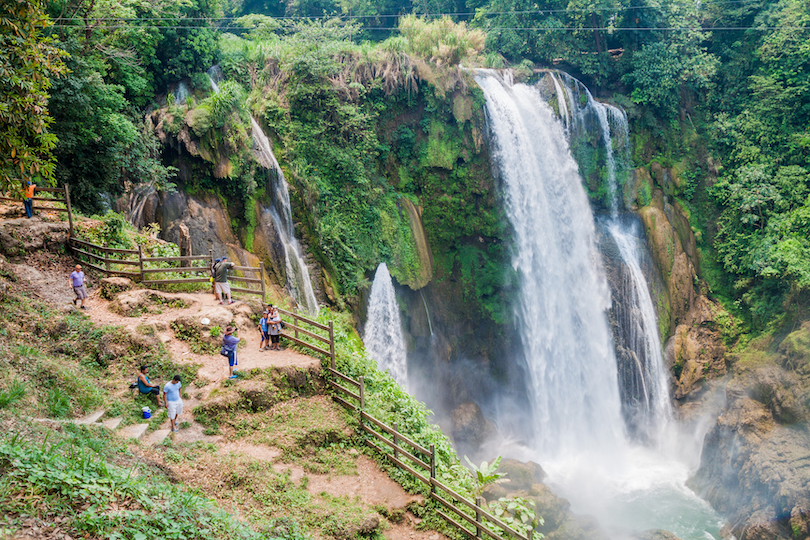
Tumbling over 40 meters, Pulhapanzak Waterfall is the best in Honduras. Seeing the falls is an easy day trip from San Pedro Sula. The falls are surrounded by beautiful rainforest making the trek all the more meritorious.
Although this is one of the best places to visit in Honduras, guides are required for this adventure. The falls are the highlight of a privately run area. The trek to the falls follows an, at times, challenging path but you’re immediately rewarded once they come into view.
The veil-like falls bounce down the rockfall where green vegetation clings for dear life. It’s utterly picturesque and with the additional fun of a swim or zipline, the falls promise to be one of your trip highlights.
16. Guanaja
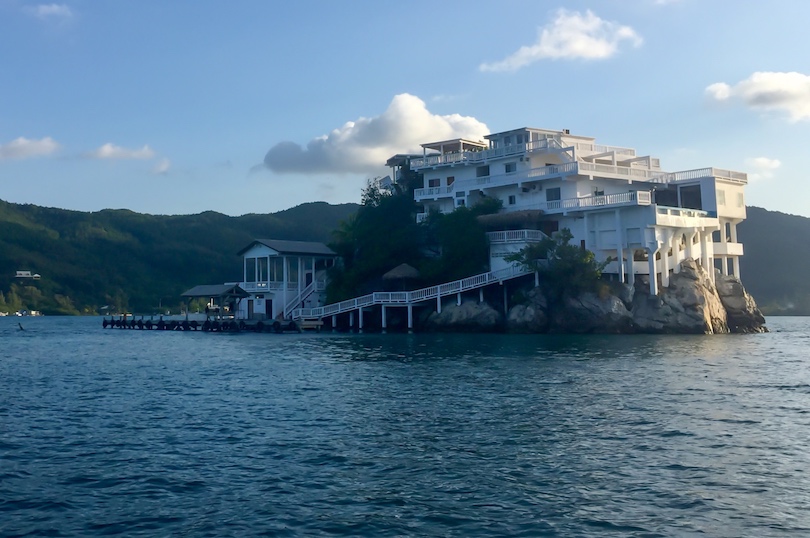
One of the three main isles in the Bay Islands, Guanaja, is an island of rolling hills and pristine shorelines. Roatán is the most popular of the three, making Guanaja a peaceful place waiting to be explored.
The island is enveloped by a wonderful coral reef. This makes spending days by the turquoise sea and snorkeling or diving an easy decision.
Away from the beaches, get among the Caribbean pine that has grown all across the island. The unspoiled terrain and lack of major developments make the island a gem to explore. Hiking trails snake throughout, leading to stories and experiences had by few who come to Honduras.
15. La Tigra National Park
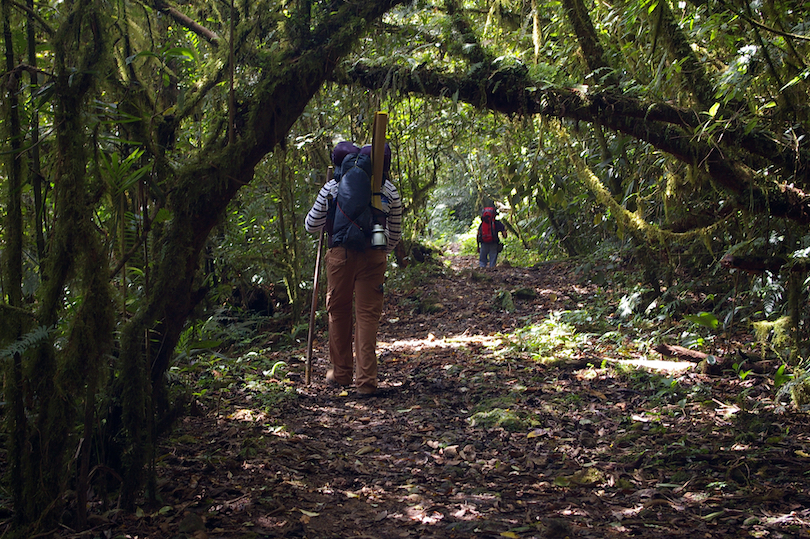
Not far from Tegucigalpa, La Tigra National Park sits high in the Central American Cordillera. It’s the oldest national park in the country and one of the most captivating.
At over 2,000 meters, this unspoiled wilderness is a welcome escape to the warm, lower altitudes. The landscapes fit this change in temperature and you can explore this on one of the many hiking trails.
The main trek is around 6 kilometers and is called the Sendero Principal. It takes you further into the mountains on an intermediate hike. You’ll have the chance to spot local wildlife and the park is renowned for its bird watching. There have been 350 species identified here.
14. Gracias
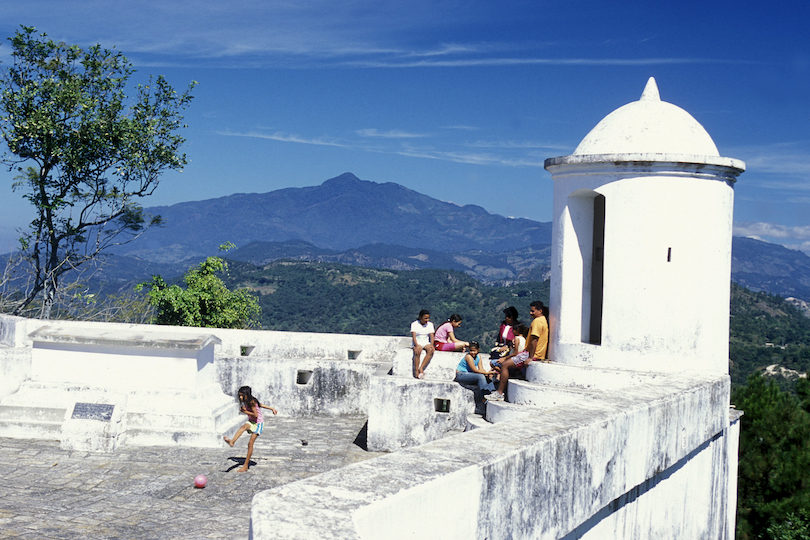
After weeks in the mountains, conquistador Juan de Chavez finally descended back into the valley. When he did this, he discovered flat open land. He was so thankful that he named the area Gracias. Today, it’s one of Honduras’ enduring colonial towns.
Once the capital of all of Central America, Gracias still has significance some 500 years later. This is because of its collection of astounding colonial architecture, the surrounding Lenca villages and close access to national parks.
The original town grid, while redeveloped, has kept the same layout for centuries. This allows you to retrace ancient footsteps as you wander by modern chic cafes and beautiful whitewashed homes on your way to the town’s highlights. This includes Museo Casa Galeano and the El Fuerte de San Cristobal. The latter is a historic fortification.
13. Gumbalimba Park
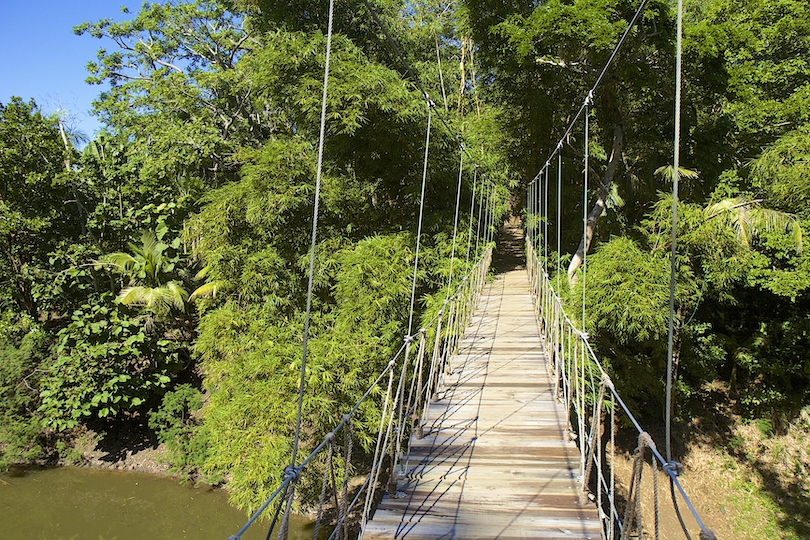
In the Bay Islands, on Roatán, Gumbalimba Park is an untamed world filled with sloths, white-faced monkeys, roaming iguanas and macaws. Since 2003, this private, eco-adventure park has been taking guests on a thrilling journey.
This journey is a mix of animal encounters and eco-tourism. But also a lot of classic fun, including their on-site pool, animal interaction area, a museum, gorgeous gardens and its very own waterfront.
This smorgasbord of activities makes Gumbalimba Park great for traveling families. The museum boasts pre-Columbian artifacts, while from the waterfront you can go for a snorkel and see what lies below. However, the real thrills come from the free roaming animals which meander about the park and could lie behind any corner.
12. Cayos Cochinos
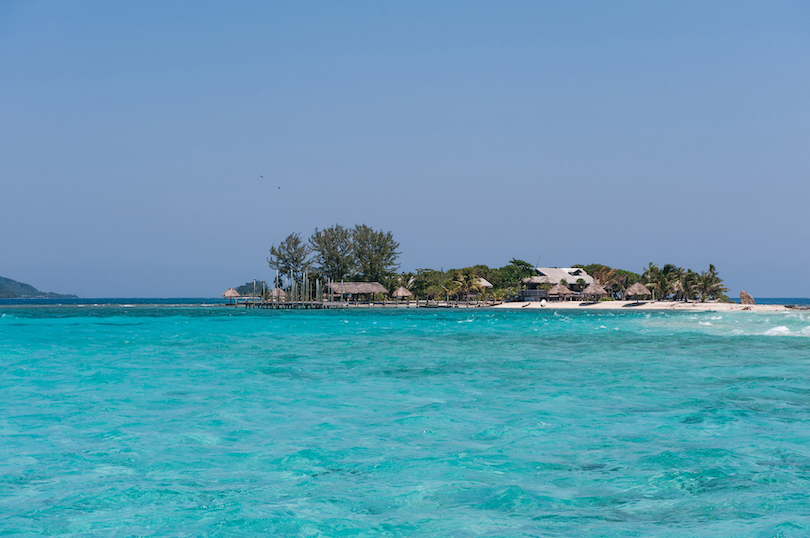
The pure definition of paradise, Cayos Cochinos aka Hog Islands is found 17 kilometers from the port town of La Ceiba. Cayos Cochinos is an 15-island archipelago, with most of them being the size of a teardrop above the turquoise sea.
The two main islands are Cayo Menor and Cayo Grande. You could easily walk from one end to the other. But in some of the smaller atolls, someone with a strong arm could throw a rock from side to side. With such all-encompassing beauty you’ll immediately feel on island time.
Cayos Cochinos is a part of a wider marine preserve that envelopes the archipelago. This is noticeable, especially as you dive into the glorious underwater world.
11. Río Cangrejal
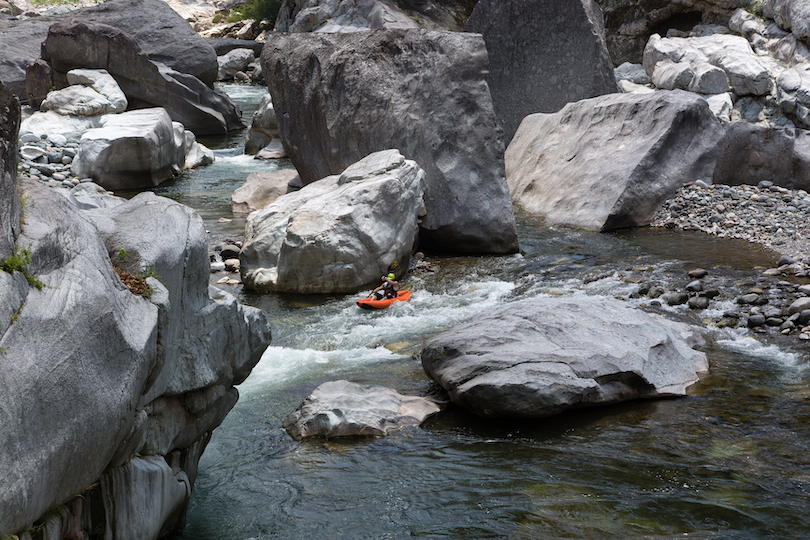
One of the most immersive adventures you can take in Honduras is a trip down the Río Cangrejal. The surging Class III-IV waters welcome you and immediately get your heart racing.
Coursing through northern Honduras over 30 kilometers, the river attracts thrill-seekers from around the world. Most white water rafting adventures will take you out on the water for a couple of hours with the pros ensuring you feel in good hands. The turquoise waters mix in with the splashing white and the fast currents whip you downstream dodging enormous boulders as you go.
For a massive undertaking, adventurous souls can consider the 13-day expedition that guides you through the spectacular Río Plátano Biosphere Reserve.
10. Comayagua Street Carpets
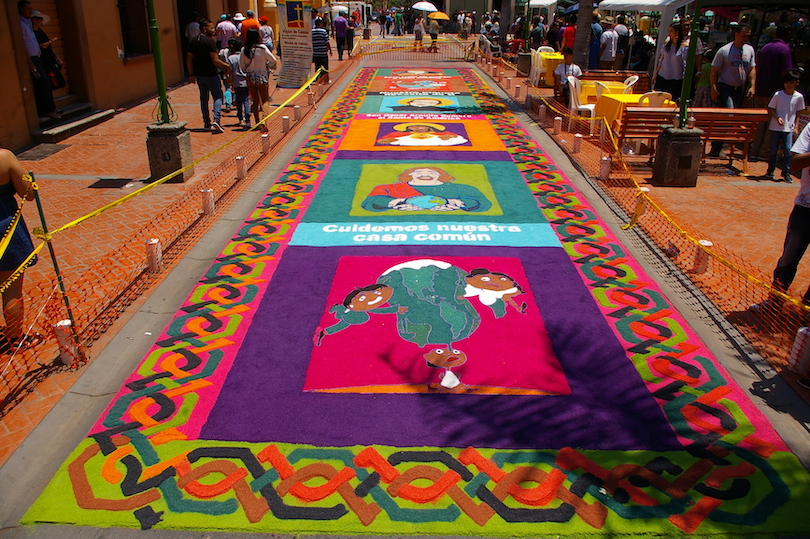
For over 300 years Comayagua was the capital of Honduras. That may have switched to Tegucigalpa, but the city founded by Spanish explorers in 1537 has some of the best colonial architecture in the country.
However, that’s not the main reason why you should visit. The famed Comayagua Street Carpets are found along the city’s main street. Using nothing but colored sawdust and powder, these “carpets” known as Alfombras, depict vivid religious scenes.
Since the sawdust and powder aren’t permanent, these eye-catching works of art disappear in the minutes following a hoard of marching steps. But don’t worry, they’re left on display for nine hours prior.
9. Little French Key
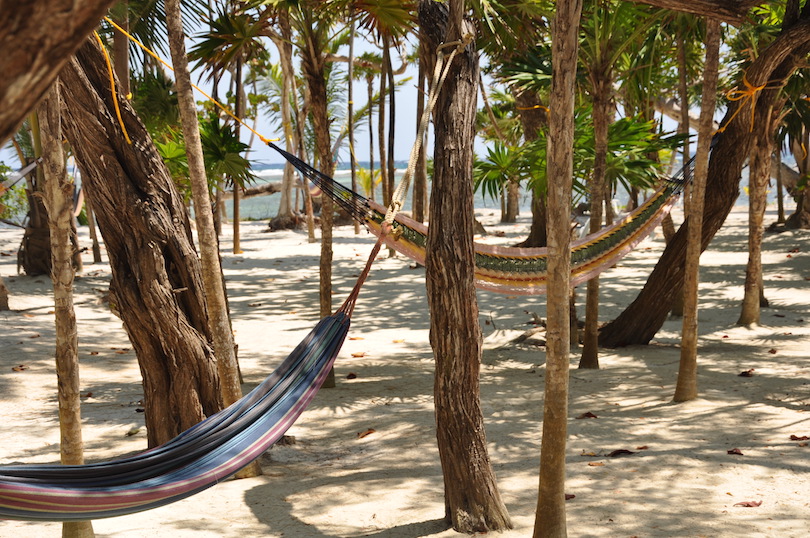
When exploring the Bay Islands, don’t just focus on the three main isles. Little French Key is an easy day trip from Roatán and is a veritable paradise.
The tranquility of Little French Key washes over you like a soothing towel the moment you step on land. Hammocks dance between swaying palms and glass-like water laps the golden sands.
You can bathe by the water on a sun lounge, snorkel and explore or paddle a kayak along the coast. Travelers can even sign up for a beachfront massage.
When you’re ready to head inland, the island’s wildlife sanctuary presents a protected ecosystem featuring toucans, deer and boisterous monkeys.
8. Visit a Coffee Plantation
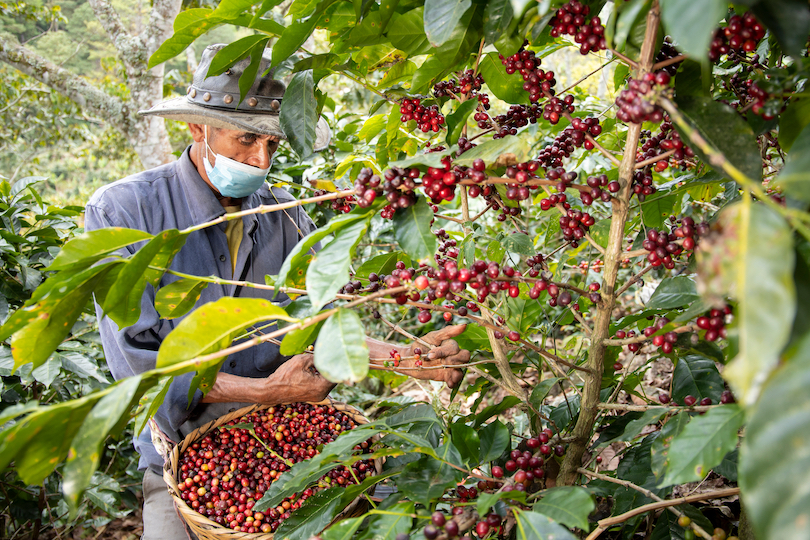
The flavorful arabica coffee of Honduras has steadily developed a reputation over the last couple of decades. There are several coffee regions from Agalta and Copan to El Paraiso and Opalaca. So exploring a coffee plantation is a simple thing to add to your itinerary.
The beautiful part about exploring the plantations is the ability to get up close to the process. Each region has slightly different flavor profiles. Copan is the most renowned, with a subtle chocolate taste. The warm temperatures of El Paraiso lead to sweet flavors.
After exploring your chosen plantation, you’ll revel in the culture and communities that surround them. These provide a unique look into local life.
7. Río Plátano Biosphere Reserve
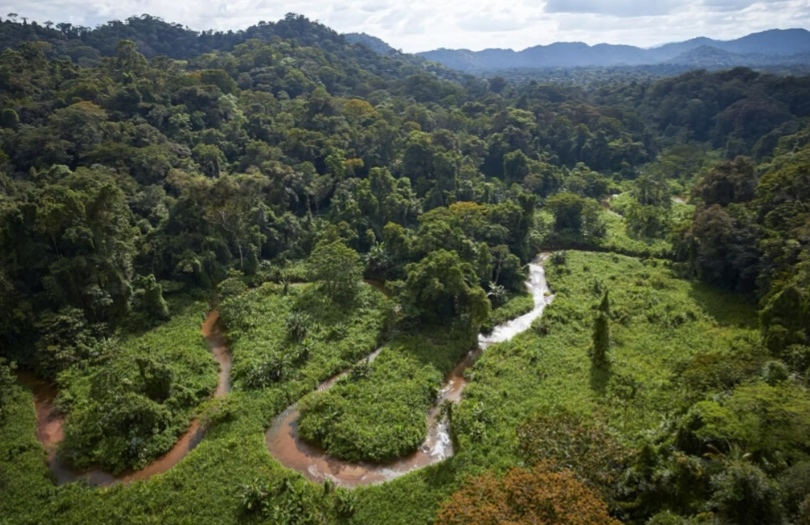
The UNESCO World Heritage Río Plátano Biosphere Reserve features a diverse array of ecosystems and wildlife. Pine-filled savannas are spliced between tropical rainforests and sprawling wetlands. It’s an enormous natural space that only native Pech and Miskito communities have made home.
Like Punta Sal below, exploring here brings you up close to some unforgettable wildlife. Jaguars roam about, the long snout of Baird’s tapirs make an appearance and harpy eagles zoom above. That’s before you head to the wetlands and shoreline where loggerhead and hawksbill turtles can be seen.
But you can expect trekking here to be tricky. Grab yourself a guide so you can spend less time in parts of the park inaccessible after wet season storms and more time exploring.
6. Punta Sal National Park
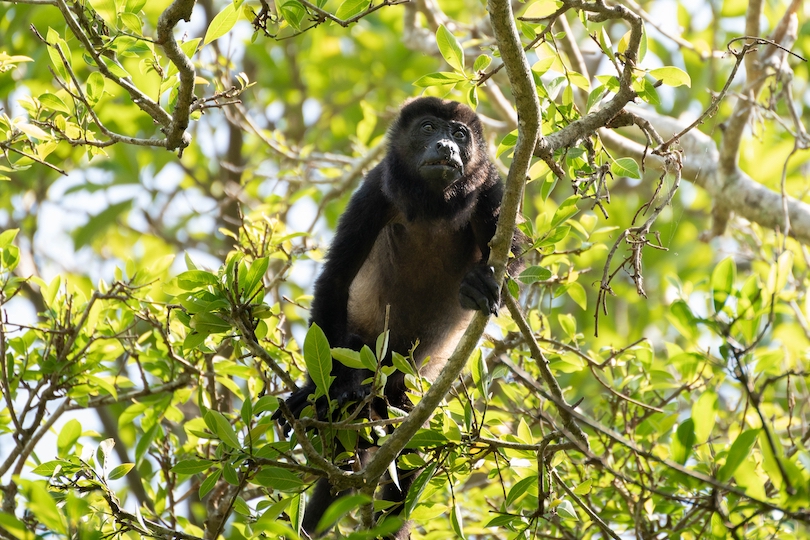
Encompassing a vast lagoon and a gorgeous shoreline, Punta Sal National Park is a natural utopia. Across these two ecosystems lies a breadth of adventures, each as eye-catching as the next.
Along the shoreline are soft golden sands lapped ever calmly by the emerald-hued Caribbean Sea. It’s a scene straight from a postcard. As you turn away from the water, the sea is replaced by rugged outcrops where, if you look closely, you can see monkeys bounding from tree to tree.
From the shore, you can venture into the jungle that has a rich collection of flora and fauna. Jaguars linger in the distance, monkeys make themselves known and the rainforest quickly envelopes you. Soon you’ll reach the lagoon where estuaries and mangroves burst from the water’s edge.
5. Lago de Yojoa
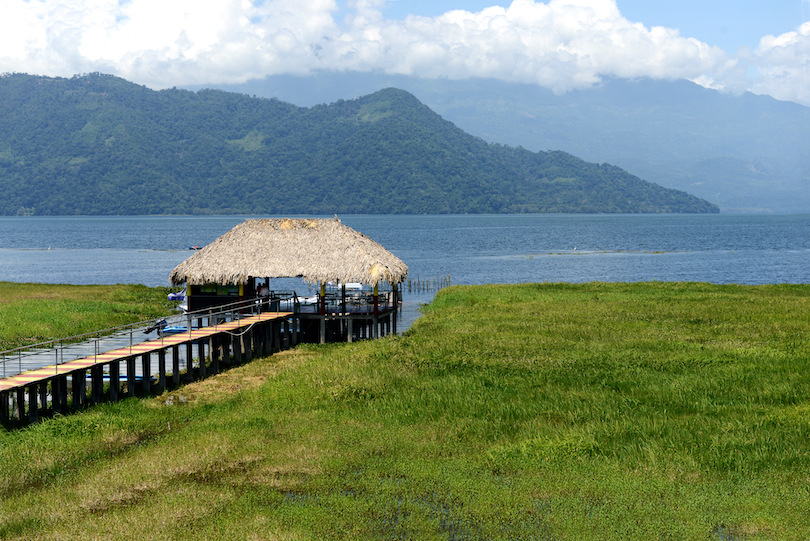
Honduras’ impeccable diving scene and golden shores take the bulk of traveler’s attention. This is good news for those who want to venture further inland. Lago de Yojoa isn’t just the largest lake in Honduras but marks one of Central America’s premier bird-watching destinations.
Every year swarms of native and migrating birds find their way to Lago de Yojoa. In fact, around 400 species have been identified here making use of the lake’s varied habitat. Hiking trails take you around its banks to long-range water and mountain views.
There are several lakeside spots where relaxing hotels can take you for the night. In the morning, wake up early for a kayak session where water sparkles in the early light and all you can hear is the splashing of your paddle and the birds calling out.
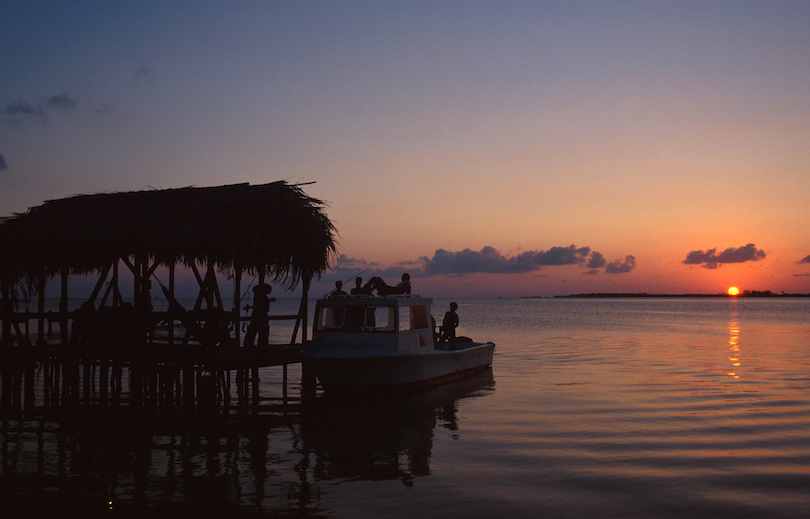
Enveloped in ivory white beaches , Utila is an island from a dream. Small in size (only 13km long), it’s a sparsely touched island that dances between paradise and wilderness.
The former is seen along its shores and from the views of waterfront accommodation. From the sand, you can dive into a vibrant sea where rays, turtles and colorful schools of fish roam. The wilderness is marked by the dense forests that flanked the island’s east and west ends. Only a few dirt roads venture in and untold adventures can be had for those who bravely venture in.
Come nightfall, get ready to experience some of the Bay Islands’ best nightlife. There’s all but one major road on Utila and that’s lined with bars and clubs whose neon shines into the early hours.
3. Copán Ruínas
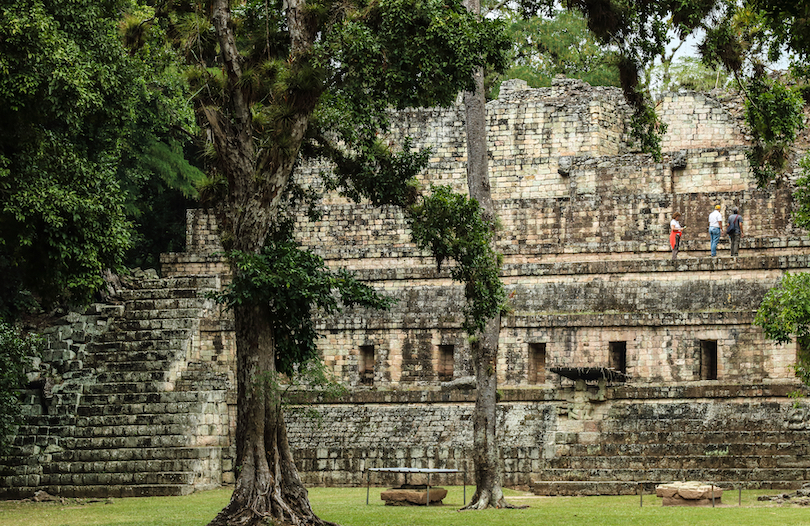
Close to the Honduras- Guatemala border, the Copán Ruínas is a former ceremonial city from the Mayan era. The Copán Ruins can be traced back over 2,400 years.
Copán is a relatively small Mayan site famous for its remarkable series of portrait stelae. The stelae and sculptured decorations of the buildings of Copán are some of the very finest surviving art of ancient Mesoamerica. The city grew into one of the most important Maya sites by the 5th century with more than 20,000 inhabitants but was mysteriously abandoned a few centuries later.
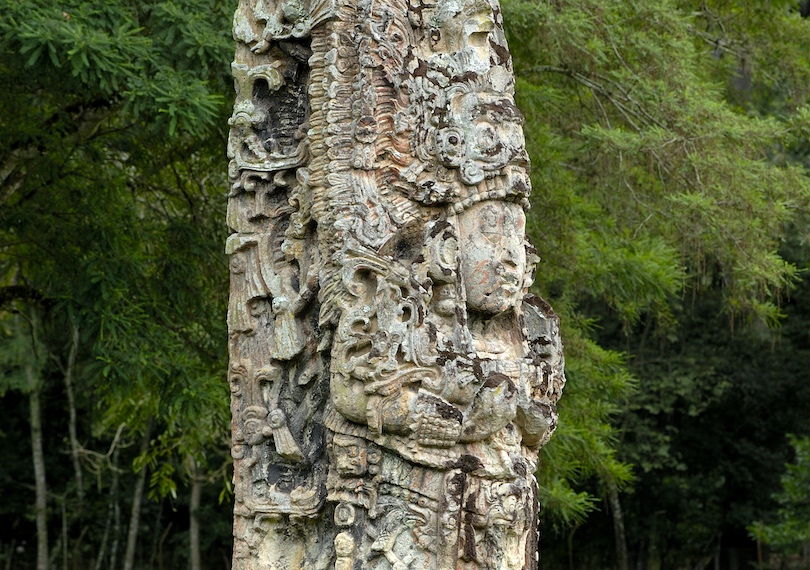
After making your way to modern-day Copán, you’ll find yourself around a kilometer from the ancient site. On arrival, the narrow path guides you through the tight Jaguar and Rosalia tunnels. It’s your first hint of how Mayan engineering works.
The layered construction from the tunnels to the temples reveals incredible Mayan engineering. The first of the main temples is the Temple of Inscriptions. However, across the Great Plaza is another that overshadows it completely. This is the Hieroglyphic Stairway, the center of the ancient city and one that stands strong among the surrounding jungles.
2. West Bay Beach, Roatán
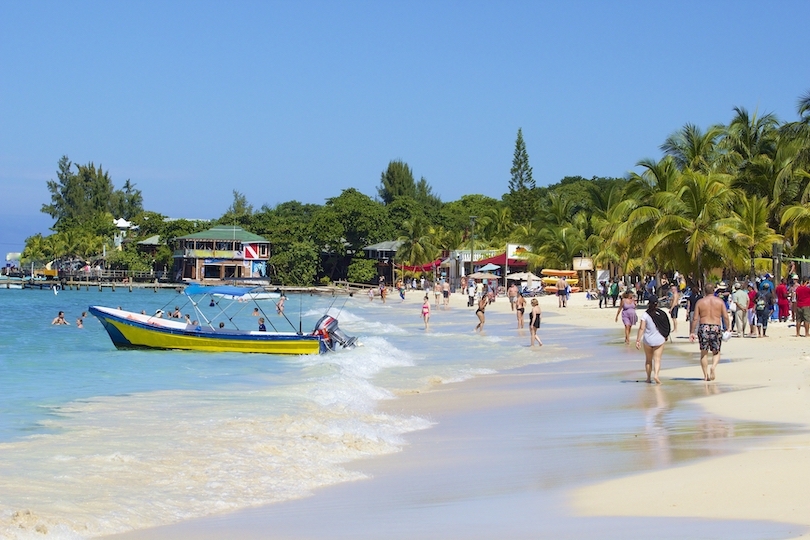
Located on Roatán, West Bay Beach can lay claim to being Honduras’ best stretch of ivory sand. Before you head offshore, you must take in the unspoiled beauty of this beautiful beach.
On the island’s western tip, it remains sheltered from the prevailing winds. This provides pristine sunbathing conditions, or sand castle building for the young-uns. The water also breaks calmly, allowing for relaxing swimming and great clarity for divers.
Diving outfitters dot the shorelines, providing easy access to the natural treasures of the shore. They’re joined by a slew of restaurants and beachfront bars from which you can recoup after a lengthy dive, or stick around for what promises to be a vibrant sunset.
1. Diving Around the Bay Islands
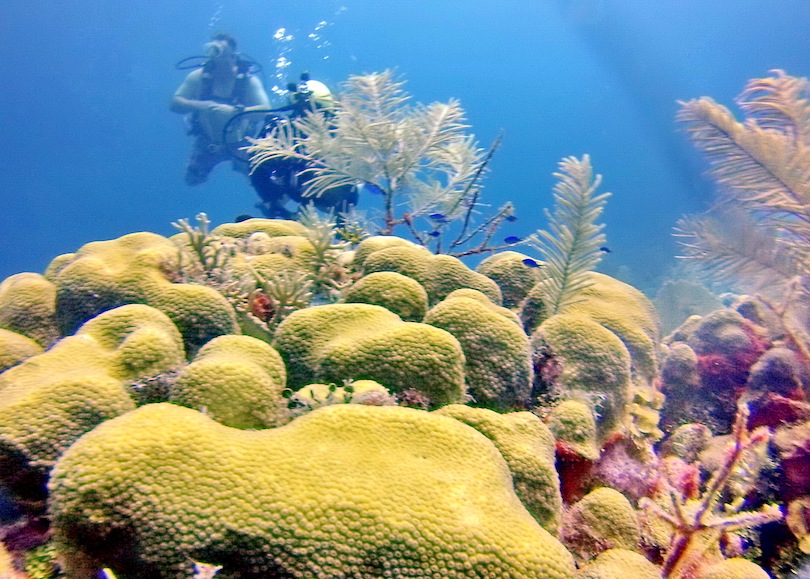
The best way to get to know Honduras is to explore off the mainland and head to the Bay Islands. Honduras boasts some of the world’s best dive and snorkeling sites, the highlight being the underwater world off the shores of Roatán.
It’s here you’ll discover the Roatán Marine Park. These designated protected waters feature spectacular coral and a breadth of tropical sea life. Whether you’re floating on the surface or diving deep, you have the chance to get up close with rays and turtles. There have also been sightings of whale sharks.
But you’ll find amazing diving on the other two Bay Islands destinations. At Utila and Guanaja, you’ll find a backpacker-friendly scene, where many go to achieve their PADI divemasters certificate.
Map of Honduras
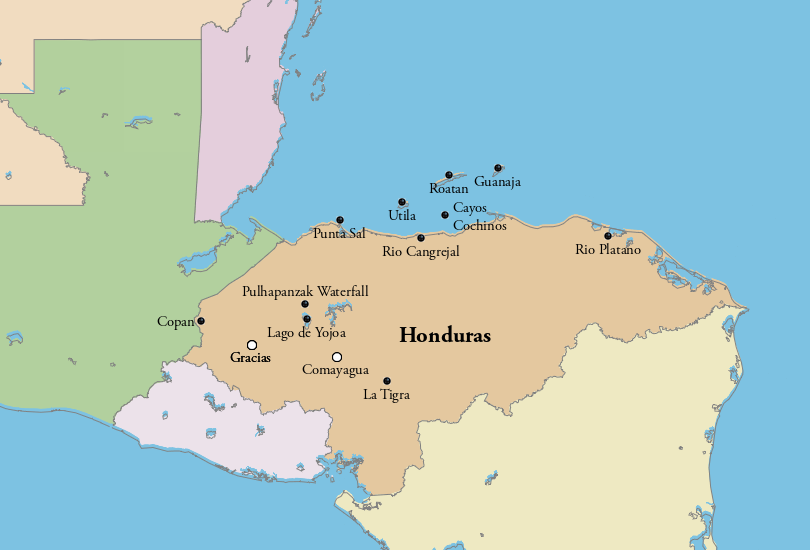
Share this post:
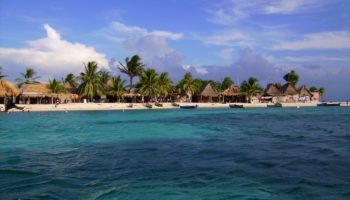
10 Best Beaches in Honduras
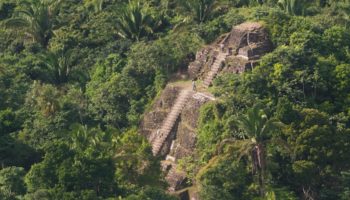
10 Most Beautiful Ancient Mayan Temples
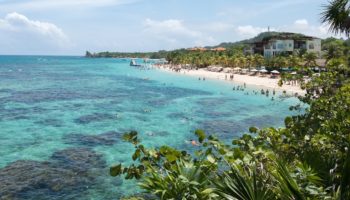
5 Most Beautiful Islands in Honduras
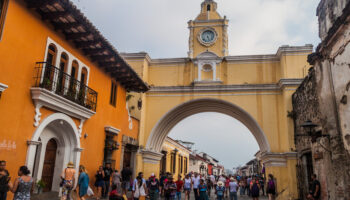
10 Best Places to Visit in Central America
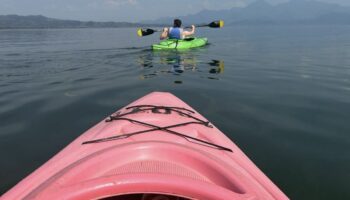
Best Things to Do at Lake Yojoa in Honduras
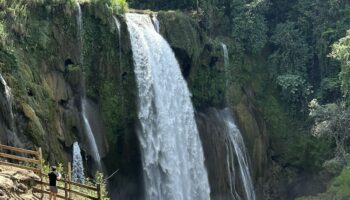
Everything You Should Know about Visiting Pulhapanzak Waterfall
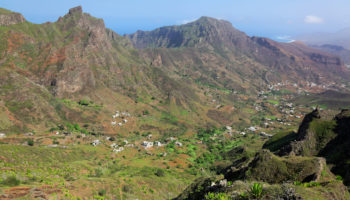
10 Best Cape Verde Islands
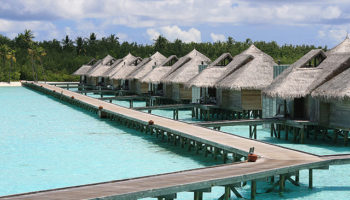
10 Best Luxury Resorts in the Maldives
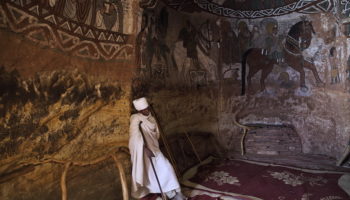
15 Best Things to Do in Ethiopia
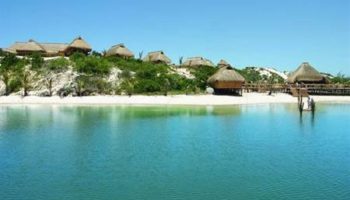
8 Best Mozambique Beach Resorts
Reader interactions.
September 9, 2018 at 5:33 am
I don’t think, that the maya ruins in Mexico are similar to the ones in Guatemala and Honduras. In Mexico the ruins look like “new”. In Comparison to that, if you stroll along the temples of tikal, you can get the feeling , that your are a discoverer on jungle-expedition 🙂
July 2, 2016 at 10:59 am
Copan is incredible. Enjoyed it more than Tikal. Fewer tourists and the detal on the carvings is absolutely amazing. Copan Valley is also filled with many hiking opportunities. It’s a five hour bus ride from Guatemala City.
February 19, 2013 at 6:39 pm
I’m doing a project on Honduras and I never noticed how cool this place really is… I hope to visit it some day. 🙂
February 11, 2013 at 4:10 am
The 3,000 years-old stone structures of Copán look very similar to the Mayan temples of Mexico – I would love to explore these sometime.
Leave a Reply Cancel reply
Your email address will not be published. Required fields are marked *
This site uses Akismet to reduce spam. Learn how your comment data is processed .
24 Best Places To Visit in Honduras in 2024

Planning a trip to Honduras in 2024? Prepare yourself for this tropical paradise and Central America’s second-largest country. Honduras is full of hidden gems like gorgeous pristine islands, ancient ruins, lush rainforests, and picturesque mountains that attract about 2 million tourists annually.
Unfortunately the vast majority only set foot on the gorgeous Caribbean islands in North Honduras, but there are so many more beautiful places to see in Honduras.
All the recommendations, travel tips, things to do and places to visit in Honduras are based on my own experiences extensively traveling in Honduras. On my multiple trips I have seen a fair share about the good, the bad and the ugly which you will all discover in this travel blog.

Please let me inspire you to see a whole different world beyond the Bay Islands. However, when you travel to Honduras don’t skip these pristine tourist destinations either. Honduras has immediate access to the world’s second-largest barrier reef and, therefore, offers one of the best diving and snorkeling experience in the Caribbean.
The beauty of the magnificent landscapes in Honduras and the potential for limitless adventures have proven to be irresistible for the adventure traveler. But it is hard to spread the word about a country that has a pretty unstable image to those that have been fed with negative stories about traveling in Honduras.
Stay connected when traveling to Honduras and get yourself an e-sim card or a local prepaid sim card. Read everything about buying a sim card for Honduras in 2024 in my extensive guide.

More about safety issues in Honduras later. Lets start with this little video about all my recent adventures and latest Honduras travel tips to see with your own eyes how amazing it can be to travel to Honduras.
Now let’s look into all those amazing Honduras tourist attractions.
RELATED: 19 Best Places To Visit in El Salvador !
1. Roatan - Caribbean Island Vibes
No introduction needed Roatan, one of the Bay Islands, is without a doubt among the most beautiful places to visit in Honduras. It is the largest and most developed of all Caribbean islands belonging to Honduras.
This long, slim bay is a popular tourist place and a major port-of-call for cruise ships.
The gradual blossom in tourism is of course attributed to the Bay Island’s pituresque scenery and varied water activities such as diving, snorkeling, and swimming in crystal clear waters. Other places to go in Roatan are the Carambola Gardens and the Roatan Butterfly Garden .
West Bay Beach, one of the best beaches in Roatan, is a beloved place for tourists to stay. The main reason why it gets quite packed is that it ticks all the boxes – has crystal clear waters, swaying palm trees, pristine beaches for Instagram photos and plenty of shops, bars and restaurants. This place offers a complete Caribbean experience. This is the place to get find those laid-back island vibes when traveling to Honduras.
The eastern side of Roatan island is relatively distant and much more unexplored. If you want to get away from the touristy side than this is your best bid.
Where to stay in Roatan
Hotels in Roatan are not among the cheapest places to stay in Honduras. For the 5-star Ibagari Boutique Hotel you can easily pay $500 per night. But there are plenty of hotels with a 9+ review for under $100 per night: West Bay B&B , Pirate’s Den Hotel , Hotel Posada Las Orquideas .
On the East side of the island I can highly recommend you the following Roatan hotels: Marble Hill Farms and Camp Bay Lodge .
2. Utila - Picture Perfect Beaches
Welcome to one of the best places to go scuba diving in the world . Utila has a reputation of being much more moderately priced than Roatan and in fact it is one of the cheapest destination to get your scuba diving certification.
For this reason, Utila has gained popularity amongst young backpackers who are traveling the world on a budget. Finding cheap accommodation in Roatan is not that hard therefore. Utila is one of the most famous tourist attractions in Honduras especially those that are looking for great nightlife.
you may also like...

On top of that Roatan is simply a top attraction because of its world class white sand beaches. There are very few designated roads on the island and most of the areas aren’t developed. Access to some gorgeous bays and villages is by sea only.
Needless to say that diving and other water activities like swimming, snorkeling, kayaking, and paddle-boarding are among the top things to do in Utila, but there is more. Visitors also come here for hiking and horse riding.
However the number one reason people visit Utila is to enjoy the slow paced life on the island!
Where to stay in Utila
Accommodation is clustered around the much more developed east side of the island. This is also where you will find the boats coming in and the Utila Airport. The Mango Inn Resort and the Sea Eye Hotel - Tropical Building has good reviews and are under $100 per night.
3. Cayos Cochinos - Tiny Island Atolls
Cayos Cochinos, also known as Hog Islands, is a group of privately-owned islands, atolls and coral reefs that sits just 17km offshore from the Honduras mainland. It consists of two main islands and several smaller cays.
The two islands and the coral reefs that encompass them are part of a Marine Biological Reserve since 1994. They remain pristine thanks to their far-away positioning and troublesome access.
Cayos Cochinos is not the easiest place to visit in Honduras, but it is well worth the effort on a beautiful day.
There are no roads or automobiles on these gorgeous islands. They are only accessible by boat from La Ceiba, Roatan or Utila. This quintessential tropical haven provides a peaceful retreat for tourists who want to experience the natural beauty of Honduras without the disturbance of crowds.
There are plenty opportunities for snorkeling, diving, swimming and even some birdwatching activities for tourists. Most Cayos Cochinos day trips start from Nueva Armenia, about 1 hour East of La Ceiba.
Where to stay in Cay Cochinos
Most people visit Cayo Cochinos on a day trip as accommodation is very limited and expensive. It is hard to find a hotel online, but there are some Cayo Cochinos Airbnb’s available.
4. Copan Ruins - Ancient Maya Archeological Site

Dating back to 427 AD, the Copan Ruins are the most famous place in to see in Honduras after the Bay Islands. If you love history and nature then this is a must-see place for you. Copan Ruins is an ancient Mayan city discovered by Diego Garcia de Palacio in 1570. The ruins are listed as a UNESCO World Heritage Site since 1980 as they’re deeply symbolic and very important as a civil, political and religious epicenter of the Mayan history.
For more than 2,000 years, the town was occupied and controlled by the Mayan people but was later mysteriously deserted in the 10th-century. It wasn’t until the 19th-century that the site was dug up and still hasn’t completely been discovered.
Visitors today can explore the area and learn about the history of an ancient civilization. On-site is the Maya citadel that has portrait-style stone rocky monuments known as stellar, overlapping step-pyramids, and many numerous wrecked structures.
Hiring a guide is highly recommended as compared to Tikal in Guatemala, Copan Ruins is very detailed and there are many mystery to be explained and unfolded right in front of you.

When visiting Copan Ruins you can not miss the Cafe Via Via , a popular joint in the center of this laid-back town. Sample a bunch of craft beers and mingle with locals in this popular backpacker bar.
Another Honduras travel tip is to head up to one of the haciendas in the hills above Copan Ruins. Hacienda San Lucas , a 100 year old property converted into an Eco Lodge, is not only a place that serves delicious local food and has great views over the hilly countryside, it also offers accommodation.
One more thing to do when visiting Copan Ruins is to head over to Finca Santa Isabel - Welchez Coffee Farm . It is about 30 kilometer east of Copan Ruins on your way to Santa Rosa de Copan.

Where to stay in Copan Ruins
Right in the heart of this tranquil village you will find Hotel Marina Copan , in the corner of the main square. It has a lovely courtyard with a big swimming pool and attached bar, a great place to stay in Copan Ruins.
5. Macaw Mountain Bird Park - Honduras' National Bird

I wouldn't normally send you to a zoo or anything like that. No one wants to see caged animals, but visiting the Maca Mountain Bird Park in Copan Ruins is different. Straight in the beginning you get explained why you are looking at mostly caged birds and then you will understand.
The owner of the bird park an older American came here many years ago and dedicated his life to the utterly beautiful Scarlet Macaw, Honduras National Bird. The Macaw Mountain Bird Park is basically a rehabilitation and breeding centre to save this endangered bird specie. Hundreds of birds from all over the country are brought in and as much as they can they are released back into the wild.

It is extremely hard to breed some of the birds but they are some major success. When visiting Copan Ruins you will see with your own eyes why the Macaw Mountain Bird Park is such a major success, as the Scarlet Macaw is all over this ancient Maya city and these ones are wild.
See all my videos of my Copan Ruins adventures in my Instagram Highlights: Honduras 1 & Honduras 2 .
6. Santa Rosa de Copan - Coffee Plantations

Santa Rosa de Copan looks like an old Spanish colonial town, but it is only a little more than 100 year old and flourished because of the Tobacco Industry. Therefore visiting Flor de Copan Cigar Factory is one of the best things to do in Santa Rosa de Copan.
Other things worth visiting Santa Rosa de Copan are the surrounding coffee plantations and the agritourism opportunities. A great place to visit for a coffee plantation tour in Santa Rosa de Copan is Finca Seis Valles , they also serve great breakfast.
For a cool agriculture experience head over to Hacienda Montecristo . Fee baby cows, collect eggs between hundreds of chickens, ride horses, etc.

One of the cool places to visit in Santa Rosa de Copan is the local market. Go here for breakfast and try things like Atol Chuco, fermented corn or the local Tamales. Not my preferred breakfast but I recommend you to give it a go. Souvenir shopping in the local market in Santa Rosa de Copan is on point!
When visiting Santa Rosa de Copan you also have to try Madrasso, a sweet drink with alcohol. It is a kind of fruit punch / margarita, so sweet you can hardly taste the alcohol! :)
7. Mosquito Coast - Last Frontier: Jungle Meets Caribbean Coast
La Mosquitia is among other things home to the Rio Platano Biosphere Reserve and is one of Honduras’ least developed areas. Only the bravest, most adventurous, and most daring tourists visit the Mosquito Coast due to the harsh living conditions and lack of proper transportation in this very rural location.
Unfortunately on my last trip to Honduras I was unable to visit this almost impossible to travel last frontier. But because of its uniqueness I put it high on the list of best places to see in Honduras. Next trip I will definitely give it another try.
This area of swampy mangroves, unblemished rainforests, and virgin shorelines makes up almost a fifth of the entire country but is almost impossible to travel around. There are basically no roads and 99% of the area consists of dense jungle.
Visiting the Mosquitia is a good way to get away from the savage modern world and enjoy incredible natural sights, fantastic wildlife, and a thriving native culture. There is no phone reception and zero signs of the modern world. When visiting the Mosquito Coast you go into survival mode, but visiting isolated villages in this part of the world must be one of the coolest travel adventures ever.
The Rio Platano Biosphere Reserve located on the Mosquito Coast is the largest protected area in Honduras with more than 5,250 square kilometers. It is one of the few tropical rainforests left in Central America.
In 2011, UNESCO listed this massive jungle land on their list of World Heritage in danger. Sadly, activities like logging, illegal hunting as well as drugs trafficking continues to threaten the reserve’s fragile inhabitants. The reserve is home to a rich diversity of wildlife including howler monkeys, scarlet macaws, toucans, giant leather turtles, and tapirs.
The most famous thing to do in La Mosquitia is a multi day rafting trip down the Rio Platano and with multi-day trips I mean 8 to 12 days! Are you ready for an adventure then the Rio Platano Biosphere Reserve is one of the best places to go when visiting Honduras.
A company that organizes adventures trips to the Mosquito Coast is Omega Tours .
8. Rio Cangrejal - La Ceiba's Outdoor Heaven

Among Honduras’ top destinations for adventurous thrill-seekers is Rio Cangrejal. It’s a prime spot for kayaking and rafting regardless which month you visit Honduras. It is located only about 20 minutes away from La Ceiba.
The long extensions of white water rapids race around the boulders and plunge over drop-offs providing lots of adrenaline rushes for tourists who enjoy water activities. Four different sections of the river are marked depending on the skill level. They range from amateur to experienced.
Various tour companies operating in the area offer organized tours with guides to help beginners learn all the necessary basics of kayaking and rafting.
I went rafting with Omega Tours and had a blast. Despite the heavy rains we went out with the team to make the most of the day and it was absolutely epic rafting down Rio Cangrejal.
Where to stay in Rio Cangrejal
I recommend you to stay around the river, in the middle of the jungle. Omega Tours Eco-Jungle Lodge scores a 9.5/10 out of more than 70 reviews and I personally gave them a 10/10 as well. Their restaurant serves delicious organic and healthy food. I was not only a big fan of their remote location, also of their meals!
9. Pico Bonito National Park - Hiking & Waterfalls
The Pico Bonito National Park is also located just right outside La Ceiba in the Nobre de Dios mountain range. If you want to visit Pico Bonito I recommend you to combine it with visiting Rio Cangrejal.
Surrounded by Dole pineapple plantations, cattle farms, and the Rio Santiago and Cangrejal rivers there is an iconic mountain peak where the national park is named after. The peak of the mountain inside the Pico Bonito National Park goes up to a height of 2,435m above sea level.
Thanks to its lush plant-life and varied wildlife, Pico Bonito is considered to be one of the best spots to go in Honduras for (multi-day) hiking trips. Climbing Pico Bonito is very though as it will lead you through very thick vegetation. Always wanna wander through the jungle with a machete, arrange a tour into Pico Bonita National Park and make your way up to the top.
Tours into Pico Bonito National Park can also be arranged through Omega Tours.
10. Villa Soleada - Volunteering in Honduras

This is not a standard place to visit, but only for those travelers who like to give back when visiting Honduras. If you are looking to volunteer in Honduras then keep on reading.
Villa Soleada is a charity project run by a Japanese American that 15 years ago came to a no name village near El Progresso to volunteer. After staying for 1 month he decided to dedicate his life to these people and turned one of the most violent villages of the country into the most educated one in Honduras.
I volunteered here for 1 week with the Students Helping Honduras organization. There is a bilingual school and an orphanage. Every helping hand is welcome and it would be an honor if after reading this Honduras travel blog you decide to look into this project.
Volunteering one week at Villa Soleada left a deep impression and made me even more grateful for the thing I have in life. Growing up in a village in Honduras is hard and we mostly don’t realize how fortunate our lives are until we see the opposite.
The project is run by @shinfujiama , check out his Instagram and be inspired by his amazing story changing his life drastically moving into the slumps of Honduras dedicating his life building a new village with over 40 homes and takes care about 25 orphans at the same time.
For more heartbreaking videos of the people of Villa Soleada I invite you to look at my Instagram highlights: Honduras 3 and learn even more about this amazing project.
11. Cusuco National Park - Off The Beaten Path Hiking
The Cusuco National Park is yet another well-conserved remote area of Honduras that’s located east of San Pedro Sula. The park covers an area of about 243 square kilometers on the border with Guatemala. Most of the roads leading to the park are pretty inaccessible making it challenging for tourists to get here.
If you’re looking to make the most out of visiting Cusuco National Park, hire a local guide to help with navigating the forest and see the wildlife here. The best time to visit is between April and June, early in the mornings, to spot wildlife.
A trek up the mountain peaks gives stunning views of the surrounding areas. Some of the mountain peaks are above 2,000m and if you are looking for a place to walk above the clouds this is one of them. These are the coordinates of the Cusuco National Park visitor center: 15°29'46.0"N 88°12’42.0”W. It takes a little less than 2 hours to get here from San Pedro Sula, but if you are looking to go off the beaten path in Honduras this is your destination.
Bird watching is one of the main tourist attractions here. There are more than 260 bird species in this park including parrots, toucans, and enigmatic quetzals. The quetzals are some of the loveliest tropical birds. The park’s exceptional biodiversity also includes threatened species of frogs and salamander, jewel scarab beetles, and Baird’s Tapir.
12. Jeannette Kawas National Park - The Lagoon of Playa Miami

Jeanette Kawas National Park was initially known as Punta Sal National Park. It was later renamed Jeanette Kawas after an environmentalist who fought passionately during her life to preserve the rich ecosystems of Punta Sal.
This beautiful wilderness area is accessible from land and sea. It stretches along the Caribbean coast west of the Garifuna beach town of Tela. Wildlife is abundant and includes numerous rare species. Visitors may encounter dolphins, howler monkeys, and a large variety of tropical birds. The park also supports diverse habitats from ranging tropical jungle, mangroves, wetlands, to pristine beaches and coral reefs.
The two best places to visit in Jeannette Kawas National Park are Playa Miami and Punta Sal. Miami is a sandy bar peninsula that is less than 100 meters (300 ft) wide. On one side there is the Caribbean sea and flanked on the other side by a tropical lagoon with rainforests and mangroves.
The best thing to do in Playa Miami, Honduras is to watch the sunset from a boat tour on the lagoon after you enjoyed delicious fresh seafood for late lunch.
Where to stay in Tela

Tela is the nearest town to Playa Miami and Punta Sal. It is a popular and vibrant holiday destination in Honduras due to its endless Caribbean beaches. There are two popular hotels in Tela with good reviews: Hotel Bahia and Hotel y Cabanas Playa Caribe . There is a 5-star in this area too: Indura Beach & Golf Resort Curio Collection by Hilton .
I recommend you to go off the beaten path and stay at Playa Miami at the end of peninsula. There is basically nothing around there apart from a couple huts on the beach. Imagine waking up to the sunrise over the Caribbean Sea with the chirping birds from the lagoon behind you.
Life is all about making memories, make sure your trip to Honduras becomes one of them!
13. Punta Sal - Remote Beaches

Punta Sal is also part of the Jeannette Kawas National Park and was once a paradise for pirates. Today, the area is a protected territory thanks to its wildlife and natural charm.
Punta Sal can only be reach by boat. Its remote location guarantees you deserted untouched beaches. It is one of the best places in Honduras to go snorkeling, but hiking and wildlife are popular activities too.
On your way to Punta Sal by boat from the Bay of Tela you will very likely encounter dolphins, then drive through the mangroves to spot sea turtles and end up on the stunning beach of Cocalito.
You can also opt to visit one of the remote living traditional Garifuna villages made up of thatched huts and learn more about the local culture.
14. Comayagua - Colonial village Former Capital

Welcome to the former capital city of Honduras: Comayagua.
This town sits at a height of 594m above sea level and is situated along the main road between Tegucigalpa and San Pedro Sula. It’s one of the most prettiest towns in Honduras and is well known for its Spanish colonial architecture.
The best places to visit in Comayagua are all downtown and include the Spanish Baroque Cathedral, the first university in Central America, and several churches. Most of these were constructed in the 16th-century but have been repurposed to their original state.
In the Comayagua cathedral you will find one of world’s oldest still working clock. It is located in the Cathedral clock tower nowadays and was brought to Central America as a gift by the king of Spain in 1620, but was constructed somewhere around 1100. When visiting Comayagua this is a must-see place. Visitors can go up to clocktower, ask inside the cathedral.
The quiet colonial village of Comayagua once played a very significant role in politics and religion. Nowadays it is mainly one of the tourist attractions in Honduras where tourists come to see the beautiful architecture and partake in the catholic heritages.
Comayagua is one of the best places to visit to enjoy the Easter celebrations. During the week between Palm Sunday and Easter Sunday, the town bursts into a flurry of activity and color with its street carpet tradition. The carpets are made with colored sawdust and other natural materials like rice and flower petals. The elaborately designed artistic carpets depict Biblical figures and events that led to the crucifixion of Jesus.
If you are looking for a local restaurant in Comayagua I can recommend you Carnitas Schole #2, located close to the main square. It serve delicious mixed grill barbecue. A simple restaurant with great food for a good price.
For more videos of my adventures in and around Comayagua have a look at the last part of my Honduras 3 Instagram highlights .
Where to stay in Comayagua
I stayed in the Hotel Antigua Comayagua for around $80 per night. It has a lovely courtyard with a swimming pool, although I didn’t make use of it as I only slept here. The WiFi was good. Hotel Antigua Comayagua has the highest rating: 8.5/10 out of all the hotels in Comayagua.
15. Ajuterique - Charming Village With Amazing Murals

A sleepy but lovely village only about 20 minutes away from Comayagua. Come here to unwind in the rolling hills around the town. There is a Instagrammable plaza with an umbrella street and plenty of coffee places.
But the number one reason why Ajuterique is listed as one of the Honduras tourists destinations are the numerous murals. They are scattered all around town and pretty impressive. Also take a photo with the Ajuterique sign of course.

When visiting Ajuterique you must try the local drink XXX. It looks like a nice mango juice, but it does not taste anything like that. It is a fermented drink and a weird experience in your mouth I can tell you.
My Instagram highlight Honduras 4 starts with travel videos from Ajuterique.
16. La Esperanza - Traditional Mountain Village

This mountain village is a famous Honduras tourist attraction because it has the coolest climate in the country. Obviously it is not only the moderate temperatures that lure a lot of tourists to La Esperanza.
There are a lot of cool things to do in La Esperanza apart from scrolling through this typical charming and colorful Central American village and visiting the cathedral. Walk up to La Gruta, a shrine/cave with great views overlooking the village.
La Esperanza is the national capital of Honduran Folklore and is where the El Grande de Grandes festival is organized every year. If you miss this festival then I recommend you to visit a show performed by Oro Lenca. Have a look at the Oro Lenca website to see where they perform.
Also when visiting La Esperanza make sure you eat at La Hacienda Lenca and try their special mushrooms. The only grow a couple days a year after heavy rainfall on high altitudes. A dish truly worth trying when visiting Honduras.
Where to stay in La Esperanza
One of the best places I stayed on my trip to Honduras was at Las Cabañas de Carlos. Tucked away in the forest about 5 minutes out of town you will find 4 wooden cabins. A perfect romantic getaway for a couple traveling to Honduras. The best way to make a reservation is to contact them through their Instagram account .
Sip wine next to the campfire in a sweater and covered by a blanket and have your breakfast surrounded by chirping birds. Los Cabañas de Carlos is the best place to stay in La Esperanza. It sincerely is one of my best Honduras travel tips.
17. El Mirador Waterfalls - Rappelling, ATV, Dirt Bike

The adventure traveler needs to stay an extra day in La Esperanza because they can not miss the El Mirador waterfalls and all the cool adventures around.
There are multiple activities here like: hiking, MTB tracks, dirt bike, ATV riding. The best activity here though is rappelling down the more than 70 meters high El Mirador waterfall. Definitely one of the coolest things to do in Honduras for me.
See the video for more about this crazy adventure. My tour was organized by Mitos Hostal. For more videos about La Esperanza and the El Mirador Waterfall check out my Instagram highlights Honduras 4 and Honduras 5 .
18. La Campa - Highest Zip Line In Central America

La Campa itself is a sleepy village in the highlands of Western Honduras, not far from the city of Gracias. There is very little action going on, but the number one reason you are visiting La Campa must be the amazing zip lines.
There are 6 zip lines across a deep canyon and the highest zip line is almost 400 meters above the ground. It was an amazing adventure and definitely among the most epic things to do in Honduras. To get to La Campa it is best to take a taxi from Gracias, but prepare yourself for a bumpy ride on unpaved roads through remote highlands.
The nearby biggest town Gracias is a pretty developed village with hot springs. When visiting Gracias make sure to visit the Fortaleza San Cristobal, a fort on top of a hill with amazing views over the town. From here you can also see the highest mountain in Honduras: Cerro Las Minas.
Don't miss out the videos of this amazing adventure in Honduras on my Instagram highlights.
Where to stay in Gracias
I stayed at Hotel Villa de Ada in the countryside. They have two swimming pools and 2 huge ponds full of fish and turtles, it was a very nice place. If you have a little more budget then definitely stay at Casa Hotel Celaque, a stunning place in the hilly countryside with lovely rooms and amazing food. One of my favorite places to stay in Honduras. You can also come here for dinner. Contact them through their Facebook Page .
19. Lake Yojoa - Beautiful Scenery

Lago de Yojoa is the largest natural lake in Honduras, covering an area of 79 square kilometers. It’s found in a cavity that was formed by volcanoes a long time ago. The strategic location of the lake along the highway between San Pedro Sula and Tegucigalpa makes accessing the lake easy and therefore it is a popular tourist attraction in Honduras.
Lake Yojoa is a perfectly located pitstop for people traveling between the two largest cities in Honduras.
The lake is a hot spot for many tourists, especially birders. There are about 480 bird species spotted here including whistling ducks, northern jacanas, and cranes.
Apart from birdwatching and fishing, there’s so much to do and see at Lake Yojoa. Tourists may also enjoy taking dips in the nearby hot springs, hikes along the shore line, exploring the underground cave system, hiking up to the stunning waterfalls, and touring the nearby coffee plantations.
Where to stay in Lake Yojoa

If you are looking for unique places to stay in Honduras I can recommend you the Agualpa Domos & Cabanas . The hotel consists of little white dome shaped bubbles and is located on the waterfront of Lake Yojoa. There is the opportunity to eat in an old airplane that is located in the garden and there is a big outdoor pool.
20. Pulhapanzak Waterfall - Amazing Outdoor Adventures
Often rated as the best waterfall to visit in Honduras and I must say it didn’t disappoint. The Pulhapanzak waterfall is near Lake Yojoa and is enormous. Its surrounding scenery is beautiful too. On top of the waterfall the water is calm, you can swim, sunbath and have drinks and food at restaurants along the river side.
If you are up for an adventure then don’t miss the ziplines that cross the waterfalls several times. Of course the La Campa zip line is unbeatable, but this one is good fun too.
What makes Pulhapanzak one of the most adventurous places to visit in Honduras is the special bottom of the waterfall tour. Highly recommended if you are looking for the ultimate adrenaline rush. Accompanied by a guide you go to the bottom of the waterfall and walk behind it. The power of the water is unfathomable.
Truly the one of the craziest things to do in Honduras. I was stunned an pumped with excitement after the tour. You can arrange this tour and the ziplines on the spot. Wanna see all the videos of this amazing place to visit in Honduras then head over to my Instagram Highlights Honduras 7 .
21. Celaque National Park - Highest Mountain in Honduras
Looking for the highest mountain in Honduras? Cerro Las Minas is located in Celaque National Park, nearby Santa Rosa de Copan in the Lempira department.
Hiking up Cerro Las Minas is not easy and will take up to 5 hours. A popular thing to do in Celaque National Park is to camp above the clouds, just underneath the summit of Honduras’ highest mountain.

Even if you are not ready to hike up to Cerro Las Minas it is worth visiting Celaque National Park. There are numerous moderate hiking trails through the forest, hidden waterfalls and lookout towers.
22. Museum of National Identity - Tegucigalpa
Traveling in Honduras is amazing, but let me be very honest with you: Tegucigalpa is probably my least favorite city in Latin America. I spent about a week there and could NOT find the charm, cool things to do or fun places to visit. However may you end up in Tegucigalpa I recommend you to visit the Museum of National Identity.
For a trip down Honduran history, make a stop by the Museum of National Identity. This fantastic museum showcases an excellent collection of Honduran and international art. The fascinating art found here tells a lot about the country’s captivating history. The museum is also home to the Palacio De Los Ministerios which is a comprehensive National Heritage building.
A major interesting attraction at the museum is the virtual tour of the Mayan Acropolis of Copan. This has proven to offer a great primer for tourists who are yet to visit the site and a great recap for those who have already been to the Mayan Acropolis of Copan.
Where to stay in Tegucigalpa
If you are looking for comfort try these 5 star hotels: Hotel Real Intercontinental Tegucigalpa , Clarion Hotel Real . For more moderately priced hotels with great reviews have a look at: Hotel Plaza San Martin or Casa Sur for only around $40 per night.
23. La Tigra National Park - Jungle Vibes
La Tigra National Park is perched at an altitude of 2,270 meters about 20km from Tegucigalpa. The park is one of the few cloud forests in the world (only 1% of the forests in the world are considered cloud forests).
This immaculate national park is home to monkeys, pumas, and ocelots. If you’re lucky enough you’ll catch a glimpse of these mammals although they can be quite hard to see. The park is also a haven for more than 200 bird species including trogons, toucans, and elusive quetzal.
There are well-marked serpentine trails throughout the dense jungle where bromeliads and orchids thrive. Because of its proximity to the capital it is one of the most popular tourist places in Honduras.
24. Guanaja - Secret Island Escape
The last place on this list of the most beautiful places to see in Honduras is one of my secret travel trips: Guanaja.
Guanaja is the most remote Caribbean island in Honduras, a delightfully charming spot that offers its visitors an idyllic escape away from the mainland. Travel to Guanaja to either relax or engage in fun outdoor activities.
The island’s temperatures remains warm all through the year so tourists can visit any time of the year. The levels of visibility of the ocean waters surrounding the island and the presence of the coral reef make Guanaja an ideal tourist destination in Honduras for snorkeling and diving.
Other fun activities that that tourists can take part in include hiking, jungle trekking, exploring the lovely on-site waterfall, souvenir shopping, eating fresh seafood, and visiting local villages.
I would be proud if you decide to travel to Guanaja after reading this blog, it is a truly hidden gem in Honduras.
Is Honduras safe for tourists?
Therefore let’s quickly chat how safe Honduras is for tourists. Despite all the stories you will find on the internet I am going to say: YES, it is safe to travel to Honduras in 2024.
Recently I drove more than 3,000 kilometer through this relatively little country and did not come across anything that made me feel uncomfortable. I visited some standard tourist attractions in Honduras, but also went off the beaten path. Visited cities like San Pedro Sula, rented an apartment for a week in Tegucigalpa and volunteered in a poor neighborhood near El Progresso.

So all my impressions are based on my OWN EXPERIENCES, conversations with locals and the advice of travel agencies.
So will visiting Honduras put your life at risk? You gotta be kidding me! :)

Honduras has a bad reputation when it comes to political unrest, petty crime, violent crimes, and a very high homicide rate. Despite all this, the majority of the locals are very laidback and friendly. But just like anywhere else in the world, there are some shady areas that you should avoid on your trip to Honduras.
Some people might be tempted to stay away from Honduras because of its reputation as a dangerous country. It‘s definitely not the safest country in the world but it’s totally okay for tourists. Just make sure that you always keep your valuables concealed and beware of your surroundings at all times, just like in other places.
If you use common sense and aren’t that ignorant tourist, visiting Honduras will be pure joy!
Things to eat in Honduras
The most typical local dish in Honduras is Baleada which is a decent-sized wheat flour tortilla that’s folded and filled with beans. Some chefs may incorporate cream, cheese, and scrambles eggs into it. Others customize them with meat, plantain, avocado, hot sauce, etc. Freshly fried plantains, chicharrones (fried pork) and pupusas (thick corn tortillas with different fillings) are other common things to eat in Honduras.
Best time to visit Honduras
The best time to plan your trip is between November and March because then it is dry season. It can get quite hot, but not uncomfortably. On the other hand, the cheapest time to travel is during the rainy season which is usually between May and October. Generally, Honduras is quite affordable as compared to other tourist destinations in other parts of the world.

Honduras is truly a diamond in the rough. It’s bound to dazzle you with its natural beauty, diverse wildlife and amazing travel adventures. From whitewater rafting to hiking and exotic wildlife viewing to ancient Maya ruins there’s no end to the history, beauty, fun and adventure in Honduras. You will love this wonderful Central American country after exploring the amazing places listed above.
Honduras has a diverse landscape with forested hills, lowland marshes, and untouched jungles rich with howler monkeys, bats, armadillos and uncountable bird species. The beautiful Caribbean Sea gives tourists a chance to swim with dolphins, whale sharks and manatees.

I hope all the above Honduras travel tips were helpful and you will be able to get to see some of these amazing places to go. Let me know if you have any more questions by leaving me a comment below.
Curious what it looks like trying to visit every country in the world ? Go check out my Instagram account @traveltomtom and follow along. As of January 2024 I have visited more than 155 countries, so still a long way to go.
View this post on Instagram A post shared by Adventure Traveler & Blogger (@traveltomtom)
Enjoy your trip to Honduras!

- central america
- tegucigalpa
- El Salvador
- Entertainment
- Expat Stories
- Real Estate
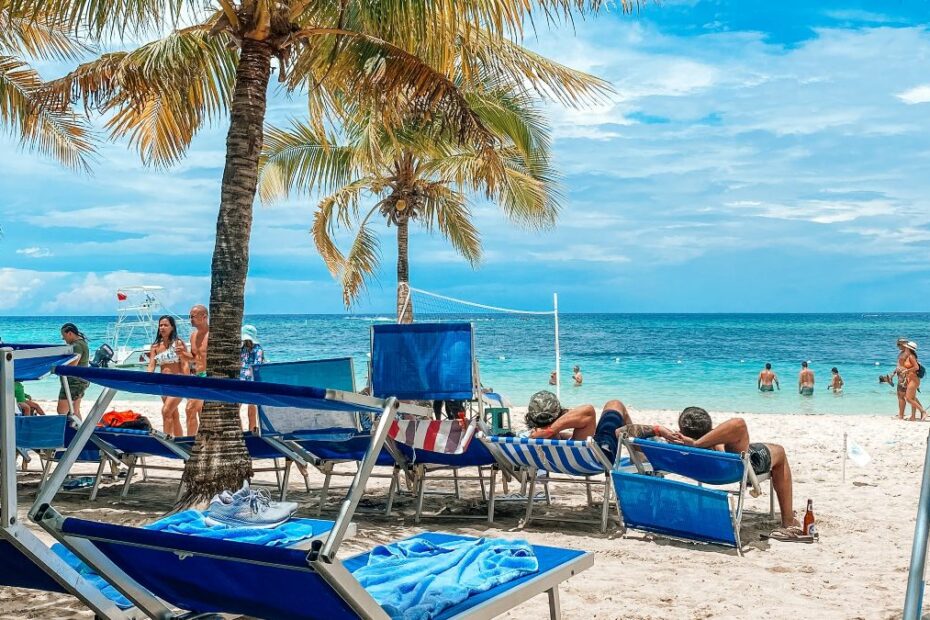
Unveiling Hidden Central American Gems: Discovering the Best Places to Visit in Honduras for the First-Time Traveler
- by John Dupuis
- May 16, 2023
- Honduras , Travel
Explore the best places to visit in Honduras for first-time travelers, where ancient Mayan ruins meet pristine rainforests and crystal-clear Caribbean waters. Uncover hidden gems, dive into adventure, and create lifelong memories. This article contains some affiliate links, where we make a small commission if you purchase anything after clicking, at no extra cost to you.
Central America, a vibrant region comprising seven distinct countries, may appear small in size, leading many to assume that the countries are homogeneous. However, each Central American country possesses its own unique attractions. In my opinion, Honduras stands out as a remarkable destination with an abundance of captivating experiences.
Because I live and work in Honduras , you could say I’m biased. And I probably am. But Honduras is special and offers much to see and do that you won’t find elsewhere.
One of Honduras’s greatest assets as a travel destination is its people. Nicknamed ‘ Catrachos ‘ , Hondurans are renowned for their friendliness and hospitality. You’ll receive a warm welcome from most people, complete with genuine smiles, curiosity, and respect.
Tourism, after all, holds the key to opportunity for Honduras. By traveling to Honduras, you can help create a brighter future for the country and its people!
So where are the best places to visit in Honduras as a first-time traveler to the country?
For first-timers, the ideal travel itinerary lies along the corridor between Copán Ruinas and the Bay Islands.This is where you’ll find the best places to visit in Honduras.
Copán is home to the most artistically impressive and most studied Mayan site in Central America. The extensive knowledge we have about Copán and its ancient inhabitants makes it a paradise for history and archaeology enthusiasts. Here, you can delve into the past at the unique museums that provide insights into pre-Columbian life.
Copán offers much more, however, than just its archaeological park. Picture a colonial town adorned with cobblestone streets and red-tile roofs, where upscale boutique hotels and budget-friendly hostels coexist. Chic coffee shops and gourmet restaurants offer a wide variety of culinary delights . Life is good in Copán Ruinas, and you’ll experience the charm of Central America at its finest.
The area around Copán is also prime coffee-growing territory. It’s easy to get out of town to a coffee farm and learn about the harvesting and processing of your favorite morning pick-me-up. Many of these farms have their own shops in town, where you can sample and buy your favorite coffee blends.
Another highlight of Copán is the Macaw Mountain Bird Park , home to numerous beautiful tropical birds and parrots native to Central America. These birds were either former pets or rescued from illegal trafficking. Macaw Mountain plays a crucial role in reintroducing birds into the archaeological park.
View this post on Instagram A post shared by Central America Living (@centralamericaliving)
Onwards from Copán Ruinas to La Ceiba
After exploring Copán Ruinas, continue your journey towards the Bay Islands. This archipelago, once under British rule, proudly preserves its heritage and English-speaking culture.
The easiest route from Copán Ruinas to the Bay Islands involves driving to La Ceiba, a small city on the Caribbean coast.To reach the Bay Islands from La Ceiba, you can choose between air and ferry services. The modern water jet catamaran ferry offers a fast and comfortable journey of fewer than two hours, with two daily departures.
But before getting onto a boat or a plane, I recommend spending at least a couple of nights in the La Ceiba area to visit the Pico Bonito National Park. Most travelers stay in the Cangrejal River Valley , approximately 10 km south of La Ceiba. This area has several hotels and lodges (including my own La Villa de Soledad ), granting you an up-close-and-personal rainforest experience. The Rio Cangrejal also offers some of the best white-water rafting in the world.
From the Cangrejal River Valley, any lodge will be happy to arrange your transfers to the La Ceiba ferry terminal or airport for onward travel to the Bay Islands.
View this post on Instagram A post shared by La Villa de Soledad B&B (@lavilladesoledadbb)
The Bay Islands of Honduras
For many visitors, the main allure of the Bay Islands lies in their spectacular diving and snorkeling opportunities along the Meso-American Barrier Reef. The archipelago comprises six islands and numerous small cays, but only Utila, Roatán, and Guanaja have permanent communities and well-developed tourism services.
Each island offers a unique experience, and it’s worth exploring all three to fully appreciate their distinct charms. Traveling between Utila and Roatán is convenient, thanks to the Utila Dream Ferry . Traveling from Roatán to Guanaja can be less reliable, often requiring a journey back to La Ceiba.
View this post on Instagram A post shared by Utila Dream (@utiladreamferry)
Utila is famous for its dive shops and attracts backpackers with its affordable scuba certification courses. It’s also a popular destination for encountering whale sharks , the largest fish species in the world. There’s a lively nightlife/bar scene on Utila that appeals to younger crowds, although the island also offers a relaxed ambiance that can be enjoyed by all, including those seeking tranquility.
View this post on Instagram A post shared by 🌴🌴🇭🇳El GRINGACHO ❤ 🌊UTILA ✌🏻😎 (@utiladronefotos)
Roatán generally attracts a more well-heeled traveler than Utila and serves as a prominent port of call for cruise ships. While the midweek period can witness a higher influx of tourists due to cruise arrivals, the island’s elongated shape allows you to escape the crowds if you wish. West End, with its small and eclectic beachfront community, and the resort-oriented West Bay Beach are the most popular areas on the island.
Roatán is the only Bay Island to feature a golf course and resort communities that rival other Caribbean destinations. Real estate opportunities on Roatán are competitive due to its popularity. The island also has its own international airport, facilitating direct flights from various U.S. gateways.
On a personal note, I highly recommend exploring the East End of Roatán. This part of the island retains its authenticity and allows you to escape the crowds brought by cruise ships. Experience the charm of small and intimate properties, relish the exquisite beaches, and immerse yourself in the captivating old island communities. Even if you choose to stay in West End, I urge you to plan a day trip to the East End to discover the genuine essence of Roatán.
Further east from Roatán are four more islands. Helene, though technically a separate island due to a natural canal, is an extension of Roatán. It remains relatively undeveloped and lacks tourist facilities. Morat, a small island with a saltwater lagoon, offers minimal attractions and is uninhabited. Next to Morat is Barbareta, a private island with pristine beaches. Pigeon Cays, located along the south shore of Morat, present an idyllic setting reminiscent of Robinson Crusoe, perfect for a day trip.
View this post on Instagram A post shared by Devin Lake (@rng_grey_c7)
Finally, on the eastern edge of the Bay Islands archipelago, lies the island of Guanaja. It was here that Christopher Columbus landed during his final voyage in 1502. Guanaja stands out for its untouched nature and rugged terrain, making it the most mountainous among the Bay Islands. With no roads on the island, boat transportation is the primary means of getting around.
Resorts on Guanaja are relatively small and isolated, offering self-contained experiences that include diving and meals bundled with accommodations. Due to its more remote location, Guanaja tends to be more expensive to visit. You can reach Guanaja from La Ceiba only by air, although there’s also a ferry service from Trujillo.
That wraps up my overview of the best places to visit in Honduras for first-time travelers
Honduras, with its Central American and Caribbean characteristics, offers many reasons to visit, and I’ve missed out a few here, including the Cayos Cochinos, the islands of the Gulf of Fonseca on the little-visited Pacific side, and the pine-clad mountainous interior. But all that and more can be the focus of your next visit! For now, I invite you to explore the enchanting destinations I have described and embark on an unforgettable journey through Honduras.

John Dupuis
John Dupuis was born and raised in Mexico City but has been living in Honduras since 1992. An avid travel entrepreneur, he's always looking to promote his adoptive country. He founded the Honduras Tips travel guide, which became the “travel bible for Honduras”. Since moving on from Honduras Tips, Dupuis has built a bed and breakfast called La Villa de Soledad in the Cangrejal River Valley, just outside of La Ceiba. He manages his B&B with his Honduran wife, Soledad. He enjoys writing about travel in Honduras and runs Hondurastravel.com.
Related Posts

Seeking Safe Harbor? A Guide to the Best Marinas in Costa Rica
- by Justin DeBoom
- June 9, 2024
- Costa Rica , Travel
Costa Rica is a popular destination for boaters and anglers from all over the world. In this article, Justin DeBoom provides an overview of the best marinas in Costa Rica, north to south down the Pacific coast.
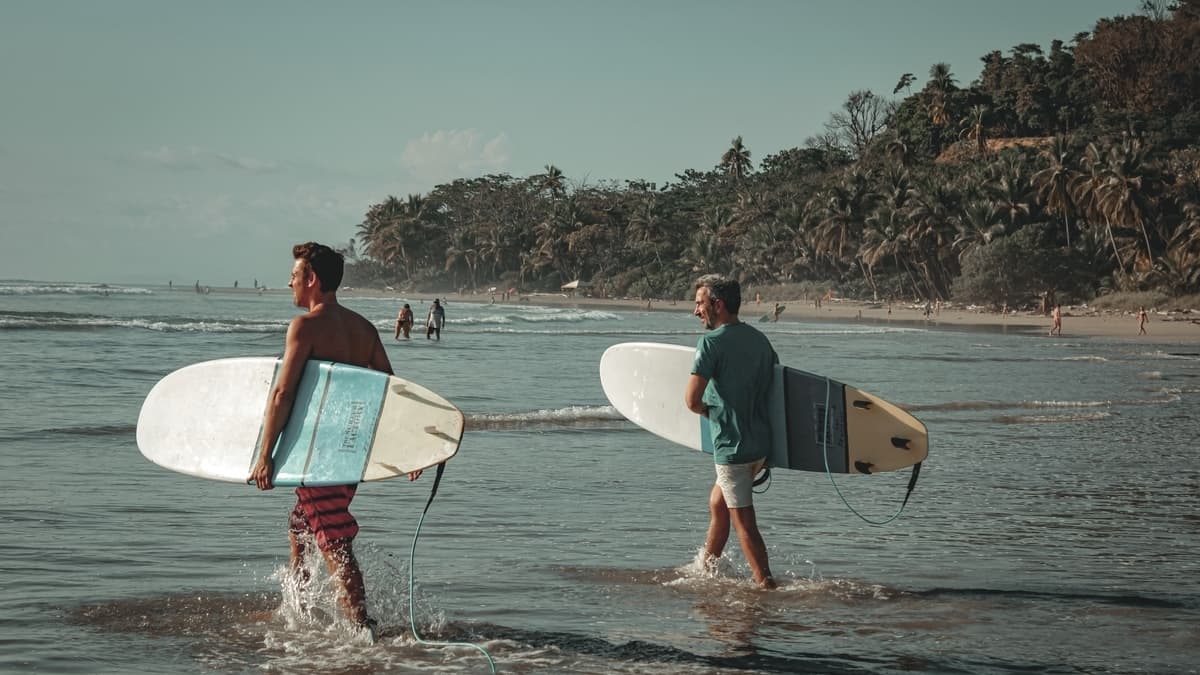
Best Surfing in Central America: Top Surf Towns and Destinations
- by James Dyde
- June 7, 2024
Find the best surf communities in Central America, from Guatemala’s hidden gems to Costa Rica’s surf towns. Explore top spots for world-class waves.

Beyond Restaurants: Where To Find the Best Food in Costa Rica
- by Adriana H. Font
- June 5, 2024
- Costa Rica , Eating , Travel
Looking for the best food in Costa Rica? Here are our favorite festivals, ferias, and foodie tours for a culinary experience to savor.
Scroll to Top
Winter is here! Check out the winter wonderlands at these 5 amazing winter destinations in Montana
- Travel Destinations
- Central & South America
Honduras Travel Guide – Best Places To Visit In Honduras + Tips
Published: September 8, 2023
Modified: December 27, 2023
by Jenny Chang
- Plan Your Trip
- Travel Guide
Introduction
Welcome to the vibrant and enchanting land of Honduras, a hidden gem in Central America. Nestled between the Caribbean Sea and the Pacific Ocean, this beautiful country is filled with rich history, awe-inspiring natural wonders, and warm-hearted people. With its diverse landscapes, from pristine white sandy beaches to lush rainforests and majestic mountains, Honduras offers a plethora of experiences for every type of traveler.
With a history dating back to the Mayan civilization, Honduras is steeped in ancient ruins and archaeological treasures. The famous Copán Ruinas is a must-visit destination, where you can explore intricate Mayan sculptures and pyramids, providing a fascinating glimpse into the country’s past. But it’s not just the historical sites that make Honduras a captivating travel destination. The pristine island of Roatán is a tropical paradise, with crystal-clear waters teeming with vibrant coral reefs, making it a haven for snorkeling and scuba diving enthusiasts. For those seeking adventure, the inland regions offer exhilarating activities such as zip-lining through the lush canopy, exploring underground caves, and whitewater rafting.
Honduras is also a land of cultural diversity, with indigenous communities preserving their traditions and crafts. In the capital city of Tegucigalpa, you can immerse yourself in the lively markets, sampling local delicacies and purchasing unique handmade crafts. The coastal town of La Ceiba celebrates its annual carnival, which is a riot of color and music, showcasing the vibrant culture of the Garífuna people.
Traveling through Honduras also allows you to savor its mouthwatering cuisine. Sample baleadas, a traditional Honduran dish made with tortillas filled with beans, cheese, and various toppings, or indulge in seafood fresh off the Caribbean coast, prepared in the local style. Don’t forget to try the national drink, horchata, a refreshing rice-based beverage infused with cinnamon and vanilla.
While Honduras offers a multitude of travel experiences, it’s important to be aware of certain safety considerations. Like any destination, it’s advisable to take precautions and stay informed about the current situation. Taking a guided tour or traveling in groups can add an extra layer of security.
Whether you’re seeking relaxation on pristine beaches, embarking on thrilling adventures, exploring ancient ruins, or immersing yourself in vibrant culture, Honduras has something for everyone. So pack your bags, embark on an unforgettable journey, and discover the wonders of this Central American treasure.
Overview of Honduras
Situated in the heart of Central America, Honduras is a country known for its breathtaking natural beauty, diverse landscapes, and rich cultural heritage. It shares borders with Guatemala, El Salvador, and Nicaragua, and is surrounded by the Caribbean Sea to the north and the Pacific Ocean to the south.
With a population of over nine million people, Honduras is a melting pot of different ethnicities and cultures. The majority of the population is of Mestizo descent, a mix of Indigenous and European heritage, but there are also indigenous communities, such as the Lenca, Maya Chortí, and Garífuna, each with their own unique customs and traditions.
The country’s terrain is a stunning blend of mountains, valleys, rainforests, and coastal plains. The western region is dominated by the rugged Sierra Madre mountain range, where you can find the ancient Mayan ruins of Copán, a UNESCO World Heritage Site. In the north, you’ll discover coastal areas with picturesque islands like Roatán and Utila, which offer some of the best diving and snorkeling spots in the Caribbean.
Honduras boasts an incredible biodiversity, with an array of wildlife species found in its national parks and protected areas. The Moskitia region in the northeast is a vast expanse of tropical rainforest, home to rare and endangered species such as jaguars, tapirs, and scarlet macaws. It is also where you can embark on unforgettable wildlife adventures, including spotting manatees in the lagoons and exploring ancient archaeological sites hidden within the dense vegetation.
The country’s culture is deeply rooted in its pre-Columbian history and Spanish colonization. The ancient ruins of Copán offer a glimpse into the once-mighty Mayan civilization, with intricately carved stelae and imposing pyramids. The Garífuna people, concentrated in the coastal towns, have preserved their African heritage through dance, music, and cuisine, making it a vibrant cultural experience.
Honduras is also known for its delicious cuisine, which blends indigenous flavors with Spanish and Caribbean influences. Typical dishes include plátanos fritos (fried plantains), tamales, and the famous baleadas – a tortilla filled with beans, cheese, and your choice of meat or vegetables. And of course, no meal is complete without a cup of Honduran coffee, known worldwide for its exceptional quality.
With its natural wonders, rich culture, and warm hospitality, Honduras offers a truly immersive experience for travelers seeking adventure, cultural discovery, and relaxation. Whether you’re exploring ancient ruins, diving into crystal-clear waters, or simply enjoying the warmth of the sun on a palm-fringed beach, Honduras is sure to leave you with unforgettable memories.
Roatán
Located in the sparkling waters of the Caribbean Sea, Roatán is the largest of the Bay Islands of Honduras and a paradise for beach lovers and water enthusiasts. This tropical island is renowned for its pristine white sandy beaches, crystal-clear turquoise waters, and vibrant coral reefs, making it a sought-after destination for snorkeling and scuba diving.
Roatán is blessed with a diverse marine ecosystem, teeming with colorful fish, sea turtles, and vibrant coral formations. The Mesoamerican Barrier Reef, the second-largest barrier reef system in the world, stretches along the coast of Roatán, providing endless opportunities for underwater exploration. Whether you’re a beginner or an experienced diver, there are numerous dive sites waiting to be explored, offering stunning underwater landscapes and encounters with marine life.
For those who prefer to stay above the water’s surface, the beaches of Roatán offer a tranquil escape. From West Bay Beach, known for its powdery white sand and calm waters, to the secluded paradise of Little French Key, there is a beach for every taste. Spend your days basking in the sun, swimming in the warm Caribbean waters, or simply relaxing under the shade of a palm tree.
Aside from its natural beauty, Roatán also has a vibrant cultural scene. The island is home to a mix of international expatriates and Garífuna communities, adding a unique flavor to the local culture. Visit the Garífuna Village of Punta Gorda to experience traditional music, dance, and culinary delights. Engage with the friendly locals, who are known for their warm hospitality and willingness to share their island’s treasures.
When you’re ready to take a break from the beach, explore the lush interior of Roatán. Take a hike through the Gumbalimba Park, a nature reserve where you can encounter monkeys, tropical birds, and lush botanical gardens. Visit the Carambola Botanical Gardens and Nature Reserve to immerse yourself in the beauty of exotic flowers and plants while learning about their medicinal and cultural significance.
No visit to Roatán would be complete without indulging in the island’s culinary delights. Fresh seafood is a staple here, with dishes like conch ceviche, coconut shrimp, and grilled red snapper gracing the menus of beachfront restaurants. Pair your meal with a refreshing cocktail made with local rum to fully savor the flavors of the Caribbean.
Roatán truly has it all – pristine beaches, vibrant underwater ecosystems, cultural experiences, and delicious cuisine. Whether you’re seeking relaxation, adventure, or a combination of both, this tropical paradise will captivate you with its natural beauty and warm island vibes.

Tegucigalpa
Tegucigalpa, the capital city of Honduras, is a bustling metropolis and the cultural, political, and economic center of the country. Nestled in the central highlands, this vibrant city offers a mix of colonial charm, modern architecture, and a rich cultural heritage.
Start your exploration of Tegucigalpa in the historic center, where you’ll find narrow streets lined with colonial-era buildings and colorful murals adorning the walls. The Cathedral of Saint Michael the Archangel is a prominent landmark, with its stunning architecture and religious artworks. Visit the National Art Gallery to admire a diverse collection of Honduran art, showcasing the talent and creativity of local artists.
For a glimpse into the city’s past, head to the National Museum of Anthropology and History, which houses a vast collection of artifacts from the Mayan civilization and showcases the country’s cultural heritage. The museum provides valuable insights into Honduras’ pre-Columbian history and its diverse indigenous communities.
As you explore Tegucigalpa, you’ll discover a vibrant market scene that reflects the city’s rich cultural diversity. The Mercado Guamilito is a must-visit, where you can immerse yourself in the hustle and bustle of a traditional market. From fresh produce and handicrafts to local delicacies and traditional clothing, the market offers a fascinating glimpse into everyday life in Honduras.
When you’re ready to escape the urban environment, head to La Tigra National Park, located just a short distance from Tegucigalpa. This tropical cloud forest is a nature lover’s paradise, with hiking trails that wind through lush vegetation, stunning waterfalls, and an array of wildlife. Take in the breathtaking views from the Mirador El Picacho, a viewpoint perched high on a hill overlooking the city.
Tegucigalpa is also known for its lively nightlife and culinary scene. The city offers a variety of restaurants, from traditional Honduran eateries serving local dishes like sopa de caracol (conch soup) and carne asada (grilled beef) to international cuisine options. After dinner, you can explore the vibrant bar and club scene, where you can dance the night away to the lively beats of Latin music.
While Tegucigalpa offers much to explore and experience, it’s important to note that some areas of the city can be congested and safety precautions should be taken. It’s advisable to travel with a local guide, especially if you’re unfamiliar with the area, to ensure a safe and enjoyable visit.
Tegucigalpa is a city of contrasts, where modernity meets tradition, and history blends with contemporary culture. Whether you’re exploring its colonial architecture, immersing yourself in its vibrant markets, or savoring the flavors of Honduran cuisine, Tegucigalpa offers a diverse array of experiences for every traveler.
Copán Ruinas
Located in western Honduras, Copán Ruinas is a captivating archaeological site that takes you on a journey back in time to the glory days of the ancient Mayan civilization. This UNESCO World Heritage Site is renowned for its well-preserved ruins, intricate sculptures, and impressive hieroglyphic stairway.
As you explore Copán Ruinas, you’ll be awestruck by the grandeur of the ancient Mayan city. The imposing pyramids, such as the Temple of the Inscriptions, rise majestically against the backdrop of the lush Honduran countryside. Marvel at the impressive stelae, intricately carved stone pillars that depict the history and mythology of the Mayan people. Be sure to visit the Great Plaza, the heart of the site, which features the iconic Hieroglyphic Stairway, a masterpiece of ancient Mayan artistry.
One of the highlights of visiting Copán Ruinas is the opportunity to witness the intricate beauty of the Mayan sculptures. The site is known for its extraordinary collection of hieroglyphic inscriptions, which have provided valuable insights into Mayan history and culture. Admire the detailed carvings on the stelae, altars, and ball court, which depict kings, gods, and important events in the lives of the Mayan rulers.
Aside from exploring the ruins, you can also visit the Copán Sculpture Museum, which houses a vast collection of artifacts unearthed at the site. Here, you can further immerse yourself in the rich history of the Mayan civilization by examining the intricately crafted ceramics, jade carvings, and other archaeological treasures.
After a day of exploration, take a stroll through the charming town of Copán Ruinas. The cobblestone streets are lined with colorful adobe buildings, boutique shops, and quaint cafes. Sample traditional Honduran cuisine at one of the local restaurants, or indulge in a cup of delicious Honduran coffee. Don’t miss the chance to interact with the friendly locals and learn about their proud Mayan heritage.
For those seeking an even more immersive experience, consider visiting the nearby Macaw Mountain Bird Park and Nature Reserve. This sanctuary is home to a variety of colorful native birds, including scarlet macaws, toucans, and parrots. Take a guided tour to learn more about these magnificent creatures and their importance to the Mayan culture.
Visiting Copán Ruinas is like stepping back in time to a civilization that flourished centuries ago. Whether you’re intrigued by the archaeology, captivated by the art, or simply yearning for a deeper understanding of the Mayan world, this archaeological site offers an unforgettable glimpse into the magnificence of the ancient Mayan civilization.
The small Caribbean island of Utila, nestled in the Bay Islands of Honduras, is a paradise for divers and nature enthusiasts. Known for its laid-back atmosphere and stunning underwater landscapes, Utila offers a unique blend of natural beauty and adventure.
Utila is renowned for its exceptional diving opportunities, making it a haven for both beginners and experienced divers. The crystal-clear waters surrounding the island are home to diverse marine life, including colorful coral reefs, tropical fish, sea turtles, and even whale sharks. Dive sites such as the famous Blackish Point and the Halliburton Wreck provide incredible underwater experiences with their vibrant corals, underwater caves, and underwater tunnels.
For those who prefer snorkeling, the shallow reefs close to the shore offer an abundance of marine life and colorful coral formations. You can grab a snorkel and explore the vibrant coral gardens just a few meters from the beach.
Beyond its underwater wonders, Utila is also a place of natural beauty and adventure on land. The island is surrounded by mangroves, mangrove forests, and lush vegetation, providing a habitat for diverse species of birds and other wildlife. Take a kayak or paddleboard tour through the mangroves, immersing yourself in the tranquility of nature and spotting unique bird species.
A visit to Utila wouldn’t be complete without exploring its charming town center. The town of Utila offers a laid-back Caribbean vibe with its colorful wooden houses, vibrant local bars, and friendly locals. Stroll along the main street, filled with shops, restaurants, and dive centers. Sample delicious seafood dishes made from locally caught fish and fresh ingredients.
To truly appreciate the natural beauty of Utila, head to the highest point on the island, Pumpkin Hill. Take a hike up the hill, surrounded by tropical vegetation, and be rewarded with panoramic views of the turquoise Caribbean Sea and the surrounding islands.
Utila also offers opportunities for those seeking relaxation and rejuvenation. The island is dotted with beautiful beaches, where you can unwind and soak up the sun. Enjoy a peaceful day on the white sandy shores, with the gentle sound of the waves lapping against the shore and the refreshing sea breeze caressing your skin.
Whether you’re an avid diver, a nature lover, or simply seeking an idyllic island getaway, Utila has something to offer. From its captivating underwater world to its natural beauty and lively Caribbean atmosphere, Utila is a hidden gem waiting to be discovered.
Nestled on the northern coast of Honduras, La Ceiba is a vibrant city known for its natural beauty, lively culture, and adventurous spirit. With its stunning beaches, lush rainforests, and exciting outdoor activities, La Ceiba attracts both nature enthusiasts and thrill-seekers.
La Ceiba is often referred to as the “Gateway to the Bay Islands” due to its proximity to the stunning islands of Roatán, Utila, and Guanaja. From the city’s bustling port, you can catch a ferry or hop on a quick flight to explore these Caribbean paradises, renowned for their crystal-clear waters and world-class diving and snorkeling sites.
But La Ceiba has its own treasures to offer. The city is home to the Pico Bonito National Park, a biodiverse region filled with dense rainforests, cascading waterfalls, and an array of plant and animal species. Embark on a guided hike through the park’s trails, go birdwatching to catch a glimpse of elusive species like the keel-billed toucan, or zip-line through the treetops for an adrenaline rush.
A visit to La Ceiba is not complete without experiencing the excitement of the Cangrejal River. This scenic waterway offers thrilling whitewater rafting opportunities, allowing you to navigate through exhilarating rapids while surrounded by the stunning landscape of the Pico Bonito mountain range. Whether you’re a seasoned rafter or a first-time adventurer, the Cangrejal River promises an unforgettable experience.
La Ceiba is also renowned for its vibrant cultural scene, particularly during the annual Feria de San Isidro, a week-long carnival celebration. Join the locals as they fill the streets with music, dance, colorful parades, and traditional Garífuna and Afro-Caribbean cultural performances. The atmosphere is infectious, and the experience provides a unique insight into the local culture and traditions.
When you’re ready to relax and unwind, head to the city’s beautiful beaches. From the tranquil shores of Playa de las Palmas to the vibrant atmosphere of Playa La Ceiba, there is no shortage of places to soak up the sun, take a dip in the warm Caribbean waters, or indulge in beachfront dining.
La Ceiba is also known for its lively nightlife and delicious cuisine. The city offers a range of restaurants and bars where you can sample local delicacies, such as fried fish, baleadas, and coconut-infused dishes. In the evening, dance the night away to the rhythms of Latin music in one of the city’s vibrant nightclubs.
Whether you’re seeking adventure, natural beauty, cultural immersion, or simply a relaxing beach getaway, La Ceiba offers a perfect blend of experiences. Immerse yourself in the vibrant culture, explore the stunning natural surroundings, and create unforgettable memories in this lively and captivating city.
Tucked away in the western highlands of Honduras, the colonial town of Gracias is a hidden gem that offers a delightful blend of history, natural beauty, and cultural charm. With its cobblestone streets, colorful colonial architecture, and stunning mountain vistas, Gracias is a destination that will transport you back in time and captivate your senses.
Gracias is best known for its rich colonial heritage, which is evident in the well-preserved historic center. Take a leisurely stroll through the town’s narrow streets, lined with charming Spanish-style buildings adorned with ornate balconies and vibrant facades. Marvel at the striking yellow and white facade of the Iglesia de la Merced, an iconic landmark that dominates the main square.
The town’s most famous attraction is Fortaleza de San Cristóbal, a 16th-century fortress perched on a hill overlooking the town. This ancient stronghold played a significant role in the region’s colonial history, serving as a defense against pirate attacks. Climb to the top of the fortress for panoramic views of Gracias and the surrounding mountains.
Gracias is also a gateway to the diverse natural wonders of western Honduras. Just outside the town, you’ll find the magnificent Celaque National Park, home to the country’s highest peak, Cerro Las Minas. Embark on a hiking expedition to conquer this challenging but rewarding summit, surrounded by lush cloud forests, cascading waterfalls, and diverse wildlife.
For a more leisurely outdoor experience, visit the nearby hot springs of Gracias. These thermal waters are believed to have healing properties, and you can relax in the warm natural pools while enjoying the peaceful surrounding landscapes.
Gracias is a place where traditional culture and indigenous heritage blend harmoniously. Visit the Iglesia de San Sebastián, a beautiful church that showcases a fusion of European and indigenous influences in its architecture and religious artifacts. Immerse yourself in the local culture by attending one of the traditional festivals, where you can witness colorful parades, lively music, and traditional dances performed in vibrant traditional attire.
Indulge in the flavors of Gracias by sampling the local cuisine. Savor delicious traditional dishes such as baleadas, corn tortillas filled with beans, cheese, and meat, or try the famous Honduran tamales made with seasoned meat and wrapped in banana leaves. Wash it all down with a cup of exquisite Honduran coffee, known for its rich flavor and aroma.
Gracias is a destination that offers tranquility, beauty, and a glimpse into Honduras’ colonial past. Whether you’re exploring the historic streets, venturing into the natural wonders of the region, or immersing yourself in the local culture, Gracias promises an authentic and enriching experience that will leave a lasting impression.
Located in the heart of Honduras, Lake Yojoa is the largest natural lake in the country and a tranquil oasis surrounded by lush landscapes and picturesque mountains. This serene destination offers visitors a chance to immerse themselves in nature, explore scenic surroundings, and discover the rich biodiversity that thrives in and around the lake.
For nature enthusiasts, Lake Yojoa is a haven of natural beauty. The lake is nestled between the Santa Barbara and Cerro Azul Meambar National Parks, creating a stunning backdrop of rolling hills, dense forests, and cascading waterfalls. Take a peaceful boat ride on the lake, surrounded by the tranquility of the water and the breathtaking views of the surrounding mountains.
The lake is a paradise for birdwatchers, with over 375 species of birds recorded in the area. As you stroll along the lake’s shores or explore the nearby nature reserves, you’ll have the opportunity to spot a wide variety of colorful and exotic bird species, including toucans, herons, parrots, and kingfishers.
When it comes to exploring the area, there is no shortage of outdoor activities to enjoy. Hike through the national parks to discover hidden waterfalls, explore winding trails that lead to panoramic viewpoints, or go on a guided nature walk to learn about the unique flora and fauna of the region.
For those looking for an adrenaline rush, Lake Yojoa offers opportunities for fishing, kayaking, and even zip-lining through the surrounding forests. Cast your line into the lake’s pristine waters and try your luck at catching local fish species such as tilapia and bass, or paddle along the calm waters of the lake, enjoying the tranquil atmosphere.
As you explore the area, be sure to visit the charming nearby villages that add to the unique character of Lake Yojoa. In the village of Pena Blanca, sample the local specialty dish called “tapado,” a seafood soup made with coconut milk, fresh fish, and shrimp. In the town of Los Naranjos, visit the Finca Santa Isabel, a coffee plantation that offers tours where you can learn about the process of coffee production and sample freshly brewed coffee.
Whether you’re seeking a peaceful retreat, a nature-filled adventure, or a cultural experience, Lake Yojoa has it all. With its stunning natural beauty, abundant wildlife, and warm hospitality, this hidden gem in the heart of Honduras is waiting to be explored and admired.
Olancho, located in eastern Honduras, is a region known for its vast open landscapes, rugged terrain, and rich cultural heritage. This expansive area is a destination for adventurers, nature lovers, and those seeking a glimpse into rural Honduran life.
One of the main highlights of Olancho is its breathtaking natural beauty. The region is home to the Sierra de Agalta National Park, a haven for outdoor enthusiasts. Embark on a hiking expedition through the park’s dense cloud forests, where you’ll encounter spectacular waterfalls, diverse plant life, and an abundance of wildlife. Keep an eye out for elusive species, such as the endangered big-eyed tree frogs and the colorful resplendent quetzal.
Olancho is also a paradise for birdwatchers, with over 400 species of birds documented in the region. Grab your binoculars and venture into the diverse ecosystems that include wetlands, mountains, and forests to spot magnificent species such as the great green macaw, the ornate hawk-eagle, and the keel-billed motmot.
For a taste of local culture, visit the town of Juticalpa, the bustling capital of the Olancho department. Explore the colonial-style architecture of the central plaza and admire the beautiful Cathedral of Santa María de la Inmaculada Concepción. Immerse yourself in the vibrant atmosphere of the local markets, where you can find fresh produce, handmade crafts, and traditional foods unique to the region.
Olancho is also renowned for its cowboy culture and agriculture. The vast plains and fertile valleys make it an ideal region for cattle ranching and agricultural activities. Witness traditional cowboy rodeos known as “corridas de toros,” where skilled horsemen showcase their equestrian abilities and compete in various events, providing a glimpse into the proud cowboy heritage of the region.
As you explore Olancho, venture off the beaten path to discover hidden gems such as the Guayape Lagoon. Located near the town of Catacamas, this tranquil lagoon is surrounded by lush vegetation and offers opportunities for boating, fishing, and birdwatching.
To truly experience the local way of life, consider staying in one of the small rural communities scattered throughout the region. Engage with the friendly locals, learn about their traditional farming practices, and savor authentic cuisine prepared with locally sourced ingredients.
Olancho may be off the typical tourist trail, but its untamed landscapes, cultural richness, and warm hospitality make it a destination worth exploring. Whether you’re drawn to its natural wonders, intrigued by its cowboy culture, or simply seeking an immersive rural experience, Olancho offers a unique and unforgettable journey through the heart of Honduras.
Tips for Traveling in Honduras
Traveling to Honduras can be an enriching and rewarding experience, but it’s important to be well-prepared and informed before your trip. Here are some essential tips to make your journey smoother and more enjoyable:
- Stay informed on Safety: While Honduras has much to offer, it’s important to stay informed about local safety conditions, especially in certain areas. Research the current situation and follow travel advisories from your government or embassy. It’s also recommended to take precautions such as avoiding walking alone at night and keeping your belongings secure.
- Learn basic Spanish: While English is spoken in tourist areas, knowledge of basic Spanish phrases will greatly enhance your experience and make it easier to communicate with locals. Learning simple greetings, common phrases, and numbers can go a long way in building connections and navigating daily interactions.
- Dress appropriately: Honduras has a warm climate, so pack lightweight and breathable clothing. However, it’s important to respect local customs and dress modestly, especially when visiting religious sites or rural areas. Carry a light jacket or sweater for cooler evenings or higher-altitude regions.
- Carry cash: Although credit cards are widely accepted in major cities, it’s advisable to carry cash for smaller establishments, markets, and transportation. Currency exchange is available at banks and authorized exchange offices, but check the current exchange rates beforehand.
- Be cautious with water and food: To prevent water-borne illnesses, drink bottled water and avoid consuming raw or undercooked food. Stick to reputable restaurants and street food stalls with good hygiene practices. Also, be mindful of washing fruits and vegetables with purified water before consuming them.
- Stay hydrated and protect from the sun: Honduras’s tropical climate can be hot and humid, so drink plenty of water and use sunscreen to protect your skin from the sun’s rays. It’s also advisable to wear a hat, sunglasses, and lightweight clothing to stay cool and comfortable.
- Respect cultural norms: Honduras has a rich cultural heritage, and it’s important to show respect for local customs and traditions. Dress modestly when visiting religious sites, ask for permission before taking photographs of people, and be mindful of local etiquette and customs.
- Use reliable transportation: When moving around the country, use registered taxis or book transportation through trusted providers. It’s also advisable to arrange transportation in advance or use reputable ride-sharing services to ensure your safety and security.
- Take insect precautions: Honduras is home to mosquitos and other biting insects, so protect yourself by wearing insect repellent and covering exposed skin, especially during dawn and dusk when mosquitos are most active. Consider bringing a mosquito net for added protection, particularly if you’re staying in more rural or remote areas.
- Travel insurance: Lastly, it’s highly recommended to obtain comprehensive travel insurance that covers medical expenses, trip cancellations, and any unforeseen incidents. Ensure that your insurance covers any activities or adventures you plan to partake in.
By keeping these tips in mind, you can have a safe and memorable trip to Honduras, exploring its natural wonders, embracing its vibrant culture, and creating lifelong memories.
Honduras, with its breathtaking natural beauty, rich history, vibrant culture, and warm hospitality, offers a myriad of experiences for any traveler. From the stunning Caribbean beaches of Roatán and Utila to the ancient Mayan ruins of Copán Ruinas, the vibrant capital city of Tegucigalpa to the tranquil lakeside retreat of Lake Yojoa, there is something for everyone in this captivating Central American country.
As you explore Honduras, take the time to dive into the crystal-clear waters teeming with vibrant marine life, hike through lush rainforests, immerse yourself in the fascinating ancient Mayan civilization, and sample the mouthwatering cuisine. Engage with the friendly locals, learn about their traditions and customs, and be mesmerized by the cultural diversity that shapes the country.
While traveling in Honduras, it’s important to stay informed about safety conditions, respect local customs, and take necessary precautions. Learning some basic Spanish phrases will enhance your interactions and show respect to the local community.
Whether you’re seeking adventure, relaxation, cultural immersion, or a combination of it all, Honduras has it all. From the vibrant cities to the unspoiled natural beauty, every corner of the country offers a unique and unforgettable experience.
So pack your bags, open your heart to new experiences, and embark on a journey that will leave you with beautiful memories and a deep appreciation for the wonders of Honduras.

- Privacy Overview
- Strictly Necessary Cookies
This website uses cookies so that we can provide you with the best user experience possible. Cookie information is stored in your browser and performs functions such as recognising you when you return to our website and helping our team to understand which sections of the website you find most interesting and useful.
Strictly Necessary Cookie should be enabled at all times so that we can save your preferences for cookie settings.
If you disable this cookie, we will not be able to save your preferences. This means that every time you visit this website you will need to enable or disable cookies again.
Travel Guide Honduras
Book your individual trip , stress-free with local travel experts
Select Month
- roughguides.com
- Central America & the Caribbean
- Travel guide
- Travel Advice
- Accommodation
Plan your tailor-made trip with a local expert
Book securely with money-back guarantee
Travel stress-free with local assistance and 24/7 support
All too often, Honduras receives short shrift on travellers’ Central American itineraries: most visitors either race to see the Maya ruins at Copán or the palm-fringed beaches of the Bay Islands, and skip the rest of the country. And while these are two beautiful, worthy sights, there’s much more to Honduras – from the wetlands of La Mosquitia to the subtropical shore of the Golfo de Fonseca, this is a land of inspiring, often untouched natural beauty – and a longer visit will pay ample rewards.
Where to go in Honduras
Crime and personal safety, the football war.
The country’s development, however, has been held up by political instability and the (largely unchecked) violent activities of international drug cartels, which use the country as a staging post. Security in Honduras is a serious issue.
The capital, Tegucigalpa, is somewhat underwhelming, but home to the best facilities and services in the country, while 100km south of the city lies the volcanic Isla El Tigre, a little-visited but worthwhile getaway. An essential detour on the way north to the city of San Pedro Sula is the Lago de Yojoa region, which offers birdwatching, caves and a 43m waterfall. To the west, colonial towns like Santa Rosa de Copán and Gracias offer fantastic restaurants, hot springs and access to indigenous villages, while the sparsely populated region of Olancho – Honduras’s “Wild East” – and the Sierra de Agalta national park has the most extensive stretch of virgin cloudforest in Central America. On the Caribbean coast, Tela and Trujillo are good-sized towns with great beaches, while La Ceiba, larger and with thriving nightlife, is the departure point for the Bay Islands, home to world-class diving and a rich cultural mix.
Gradually, Honduras is waking up to its potential as an ecotourism destination – its network of national parks and preserves is extensive – as well as the likely benefits of an increased tourist infrastructure for the country’s struggling economy (it’s the second-poorest country in Central America, with more than half the population living below the poverty line). The pick of Honduras’s natural attractions is the biosphere reserve of the Río Plátano in La Mosquitia. Encompassing one of the finest remaining stretches of virgin tropical rainforest in Central America, the region is largely uninhabited and a trip here really does get you off the beaten track.
Top image © Diego Grandi/Shutterstock
Discover more places in Honduras

- Olancho Travel Guide
- Southern Honduras Travel Guide
- Tegucigalpa and around Travel Guide
- The western highlands Travel Guide
The security situation in Honduras has deteriorated dramatically in recent years, largely thanks to the activities of violent drug gangs (“maras”). San Pedro Sula has been dubbed the most violent city in the world, thanks to a horrifically high murder rate, and Tegucigalpa is not far behind. Street crime is a real concern throughout the country; as well as numerous cases of pickpocketing and robberies, some tourists have been killed (sometimes as a result of resisting a mugging). That said, the vast majority of travellers who visit Honduras do so safely, and you can reduce the likelihood of being a victim of crime by using common sense and caution. Leave your valuables at home (or in the safe of your hotel). Don’t walk around cities or bigger towns unless you’re very sure of your surroundings; see also our warning about bus travel . After dark take a taxi, even for short distances. Steer well clear of rough neighbourhoods (local advice on where not to go is invaluable): for example, the Comayagüela district in Tegucigalpa, particularly around the market, and the streets south of the old railway line in San Pedro Sula are both considered very dangerous. Going around in groups is safer than exploring on your own.
The Bay Islands are considered safer than the mainland, and rural areas are generally safer than urban areas, though far from crime-free; taking the usual precautions and seeking advice from locals are vital. Hiking alone or walking on isolated stretches of beach (or indeed any stretch of beach at night) is inadvisable.
If you are the victim of a crime the police are unlikely to be of much help, but any incidents of theft should be reported for insurance purposes (ask for a denuncia ).
The websites of the British Foreign Office (fco.gov.uk) and the US Department of State ( state.gov ) have up-to-date security information and advice on Honduras; check both before travelling.
Population 7.7 million
Languages Spanish, English in the Bay Islands
Currency Honduras lempira (L)
Capital Tegucigalpa (population: 1.8 million)
International phone code 504
Time zone GMT –6hr
In one of the more bizarre conflicts in modern Latin American history, on July 14, 1969 , war broke out on the Honduras–El Salvador border. Ostensibly caused by a disputed result in a soccer match between the two countries, the conflict also stemmed from tensions generated by a steady rise in illegal migration of campesinos from El Salvador into Honduras in search of land.
In April 1969 the Honduran government had given settlers 30 days to return to El Salvador, and then begun forced expulsions – the result was the break-out of sporadic violence. In June, the two countries began a series of qualifying matches for the 1970 World Cup. The first game, held in Tegucigalpa, was won by Honduras, with a score of 1–0. At the second game (won 3–0 by El Salvador), held in San Salvador, spectators booed the Honduran national anthem and attacked visiting Honduran fans. The third, deciding, match was then pre-empted by the El Salvadoran army bombing targets in Honduras, and advancing up to 40km into Honduran territory.
After three days, around 2000 deaths and a complete breakdown of diplomatic relations, the Organization of American States (OAS) negotiated a ceasefire, establishing a 3km-wide demilitarized zone along the border. Tensions and minor skirmishes continued, however, until 1980, when a US-brokered peace treaty was signed. Only in 1992 did both sides finally accept an International Court of Justice ruling demarcating the border in its current location.
Travel advice for Honduras
From travel safety to visa requirements, discover the best tips for traveling to Honduras
- Getting around Honduras: Transportation Tips
- Culture and Etiquette in Honduras
- Eating and drinking in Honduras
- How to get to Honduras
- Sports and Outdoor activities in Honduras
- Travel Tips Honduras for planning and on the go
- Best time to visit Honduras
Find even more inspiration here

Planning your own trip? Prepare for your trip
Use Rough Guides' trusted partners for great rates

written by Andy Turner
updated 26.04.2021
Ready to travel and discover Honduras?
Get support from our local experts for stress-free planning & worry-free travels.
- Where to stay
- Travel advice
- Central America
- The 10 Most Beautiful Spots...
The Most Beautiful Spots in Honduras

Whether you are interested in the ancient Mayan ruins at Copán , hiking through the Pico Bonito National Park or freediving in the Bay Islands, these are Culture Trip’s pick of the best things to do in Honduras .
While Honduras’ crime stats are frequently published all over the media, those that venture to Central America’s second largest country will be pleasantly surprised. Friendly locals, diverse wildlife and pristine scuba diving in Utila await, plus there are far fewer touts swarming around tourist attractions in Honduras.
1. Copán ruins

The Copán ruins are an ancient Mayan site, discovered in 1570 by Diego García de Palacio. This area was deeply important as a political, civil and religious center of the Copan Valley. The city was occupied by the Maya for around 2,000 years, and it was abandoned in the 10th century. It’s now a Unesco World Heritage site, and you can wander at will through the vast area and learn about the history of the ancient civilization. Explore the Maya citadel, where you’ll see portrait-style stone monuments called stelae , overlapping step-pyramids, and many ruined buildings.
2. Pico Bonito National Park
Park, Natural Feature

Pico Bonito National Park is located in the Nobre de Dios mountain range, bordered in by pineapple plantations, cattle farms and the Rio Santiago and Cangrejal rivers. Inside the park is a mountain peak that reaches up to 2,435m (7,988ft) above sea level. Pico Bonito’s plant and wildlife vary from tropical forests in its valleys to high-elevation cloud forests on the peaks. A popular destination within the park is The Lodge at Pico Bonito, a privately owned ecolodge that is surrounded by lush wildlife and forestry. Pico Bonito is regarded as one of the best parks for outdoor activities in Honduras, and there are tours and other outdoor adventures such as kayaking or whitewater rafting.
Natural Feature

4. Jeannette Kawas National Park

This park is named after the environmental activist Jeannette Kawas who was murdered in 1995 after fighting to get this land protected status as a national park. It’s bursting with wildlife, from howler and white-faced monkeys on land to manatees and marine turtles in the sea, plus more than 100 species of birds in the air. The surroundings are just as varied, with lagoons, coral reefs, tropical rainforests, swamps and wetlands, making it a key tourist attraction in Honduras. Boat trips along the Río Ulúa are available to give travelers a chance to see the wildlife close up. Extreme adventurers might want to rent their own boat or hike solo, but more relaxed travelers can stick to an organized tour or ramble along the beautiful sandy beaches.

Become a Culture Tripper!
Sign up to our newsletter to save up to $1,665 on our unique trips..
See privacy policy .

Roatán is a long, thin Bay Island that has become a popular Honduras tourist attraction in recent years. Diving and snorkeling among the abundant coral reefs attract most visitors, while West Bay is a popular place for travelers to stay – hotels range from budget options to more exclusive pricey stays. Although its beaches are the main draw, Roatán also has pine-forested mountainous areas, and the east side of the island is still relatively remote and unexplored.
6. Lake Yojoa

Lake Yojoa, located in a cavity formed by volcanoes long ago, is the largest lake in Honduras, with a surface area of 79sq km (30sq mi). It is one of Honduras’ major tourist attractions. The lake is conveniently located along a highway that travels between Tegucigalpa and San Pedro Sula, two of the country’s largest cities. Sadly, the lush landscape is threatened by deforestation, cattle ranching and development. From here, you can hike to a remote waterfall and visit nearby coffee plantations. Keep your eyes peeled for rare birds (nearly 500 species have seen around the shoreline).
7. Comayagua
Architectural Landmark

The former capital of Honduras, Comayagua is a high elevation city found along the highway between Tegucigalpa and San Pedro Sula, and famous for its Spanish colonial architecture. The city was an important place for politics and religion until it lost its title as the capital in 1880. Wander through the small city to view the stunning architecture; the cathedral has the oldest clock in the Americas, and the 16th-century neoclassical city hall is also impressive. During Easter, it is a great place to watch the traditional Catholic celebrations.
8. Río Plátano Biosphere Reserve

This Unesco World Heritage site is one of the best places to see the plants and animals of Central America’s tropical rainforest. Along with thick rainforests, open savannahs and mountainous regions, Río Plátano is home to more than 2,000 indigenous people and many important archeological sites. The best way to explore is on foot – book a guided hiking tour along the mountain trails and you might spot harpy eagles, colorful macaws, sloths and maybe even a jaguar hiding in the undergrowth. River rafting tours are also available for adrenaline seekers.
9. The Mosquitia (or Moskitia)

The Mosquitia biosphere reserve is one of the country’s last fully undeveloped areas. This area of swampy mangroves, untouched rainforests, and wild coastlines makes up almost a fifth of the entire country, and yet it only has two real roads and a modest population of indigenous peoples. You’ll find incredible wildlife, fantastic views and a thriving local culture. Far from your regular Honduras tourist attraction, a stay in Mosquitia is extremely basic – with no electricity or toilets – but it is an eye-opening experience for those with an adventurous spirit.
10. Cusuco National Park
Natural Feature, Park

This national park is another well-conserved area of Honduras, located behind the city of San Pedro Sula. It’s no easy task getting into the park, because many roads can be inaccessible, but you can get the most out of your trip by hiring a local guide to help you navigate the forest as well as find tropical birds and other wildlife. More than 260 species of bird have been spotted in the park. The best time to see them is early morning; if you visit between April and June, you’re more likely to catch sight of parrots, toucans, and quetzals.
Culture Trips launched in 2011 with a simple yet passionate mission: to inspire people to go beyond their boundaries and experience what makes a place, its people and its culture special and meaningful. We are proud that, for more than a decade, millions like you have trusted our award-winning recommendations by people who deeply understand what makes places and communities so special.
Our immersive trips , led by Local Insiders, are once-in-a-lifetime experiences and an invitation to travel the world with like-minded explorers. Our Travel Experts are on hand to help you make perfect memories. All our Trips are suitable for both solo travelers, couples and friends who want to explore the world together.
All our travel guides are curated by the Culture Trip team working in tandem with local experts. From unique experiences to essential tips on how to make the most of your future travels, we’ve got you covered.

Places to Stay
The best resorts to book in roatán, honduras.

Food & Drink
The best restaurants in utila, honduras.

Read Javier Abril Espinoza's "In the Garden of Her Eyes Grazed Two Sugar Bunnies"

Bars & Cafes
The best bars in utila, honduras.

Guides & Tips
Utila: 10 reasons why this honduran island is central america's best kept secret.

Restaurants
Honduras' best restaurants, from tegucigalpa to roatan, see & do, top things to see and do in utila, honduras.

10 Things to Know Before Visiting Honduras
The best spanish schools in honduras.

Reconciling Hope and Violence in a Failed State: Federico Rosa Takes Our Questions

Paradise, Interrupted: Honduras in Life and Literature

The Best Hotels to Book in Roatán, Honduras
Culture trip summer sale, save up to $1,665 on our unique small-group trips limited spots..

- Post ID: 655674
- Sponsored? No
- View Payload

Central America Travel Guide
Last Updated: August 30, 2023
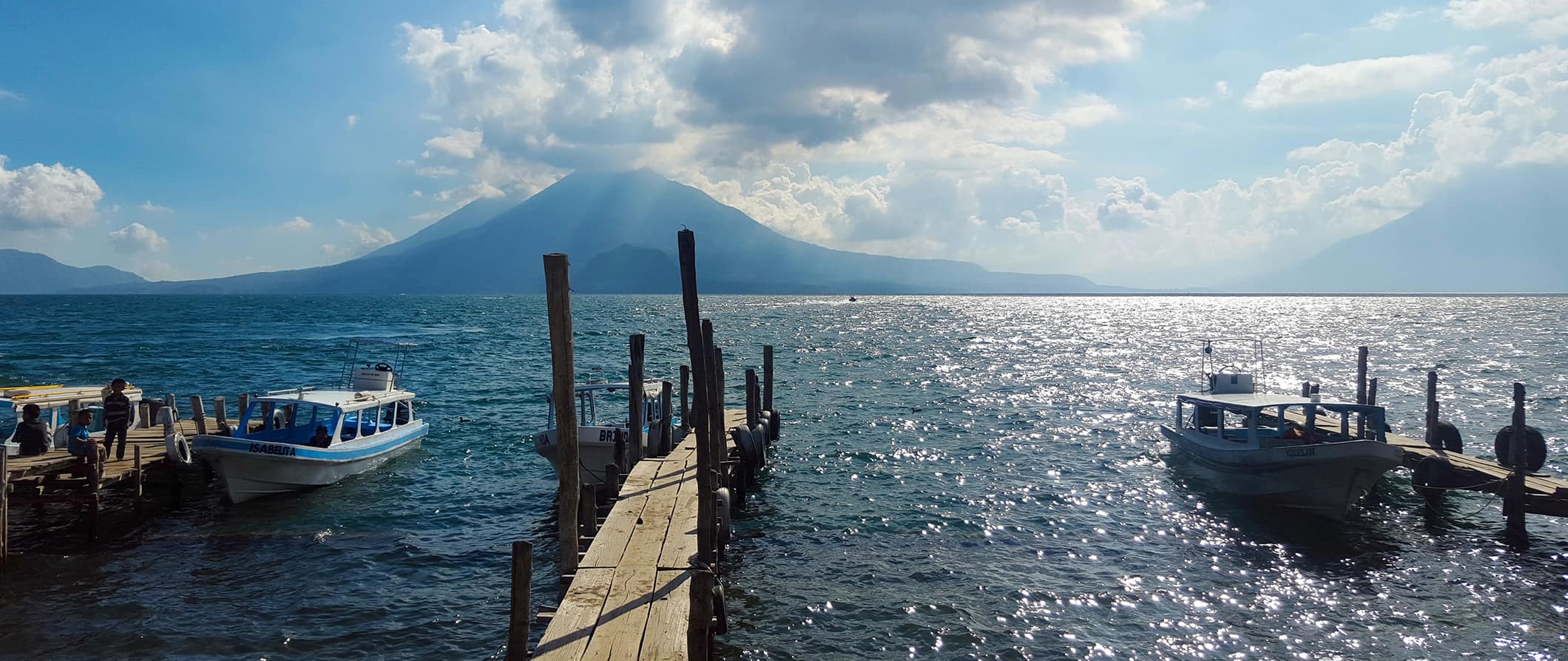
Surrounded by the Pacific and Atlantic Oceans, the slender land bridge of Central America runs from Mexico to South America and is made up of seven countries: Guatemala , Belize , El Salvador , Honduras , Nicaragua , Costa Rica , and Panama .
Political and civil unrest in the 1980s kept most tourists away for decades (people never forget bad news), but now the area is becoming hotspot for travelers, surfers, luxury travelers, and even retirees.
Because Central America is beautiful, filled with history, affordable, and much safer than it used to be.
While there are still regions where you need to be vigilant, people have realized that it’s not the place the media makes it out to be. The region’s rainforests are filled with unexplored Mayan ruins and wildlife, its beaches are great for surfing, its reefs offer world-class diving, there’s a huge variety of flora and fauna here, and the cheap accommodation, food, and transport throughout the region make it a budget traveler’s dream.
I’m glad the collective consciousness is shifting and people are finally recognizing how amazing this area. I began my nomadic life traveling around Central America and whenever I return, I fall in love even more with the friendliness of the people, the tasty food, the weather, the history, and the beauty.
This travel guide to Central America will give you all the tips to help you plan your trip, stay safe, and save money in this underrated region of the world.
Table of Contents
- Things to See and Do
- Typical Costs
- Suggested Budget
- Money-Saving Tips
- Where to Stay
- How to Get Around
- How to Stay Safe
- Best Places to Book Your Trip
- Related Blogs on Central America
Click Here for Country Guides
Top 5 things to see and do in central america.
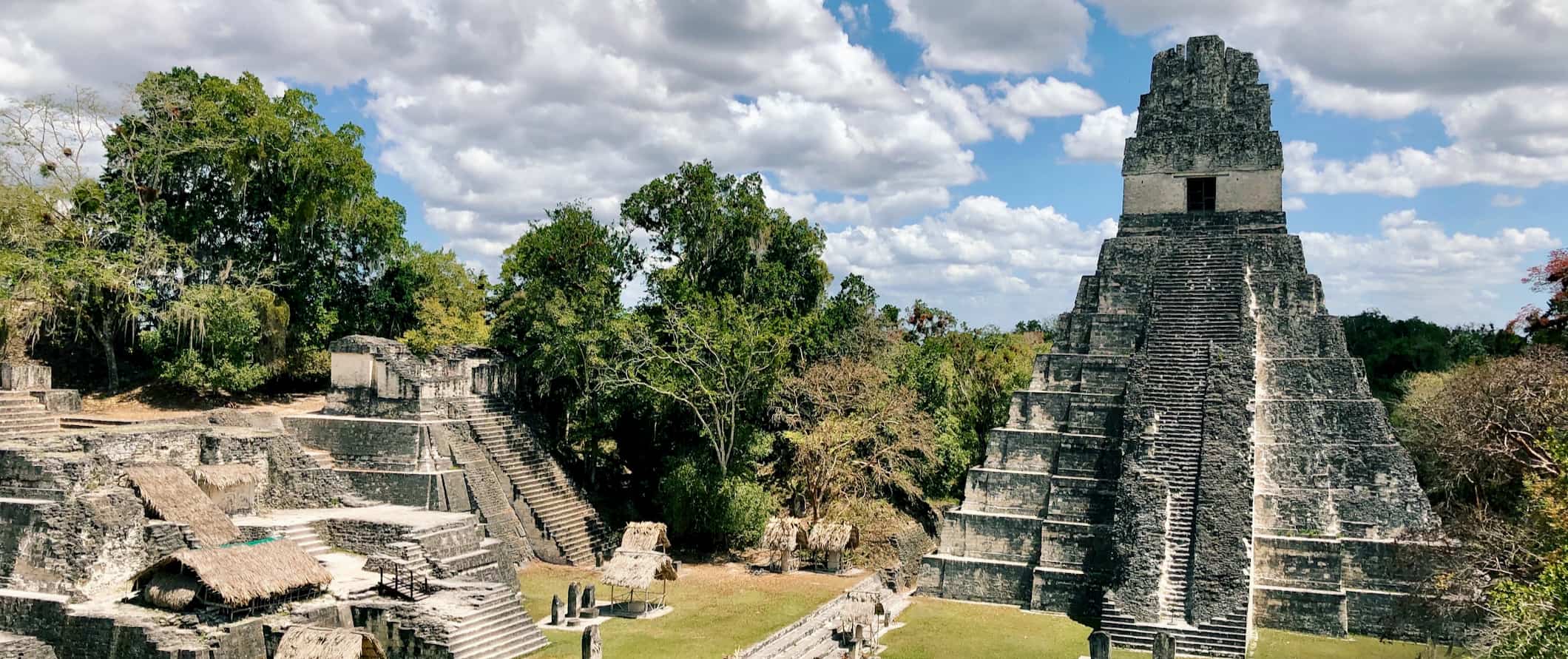
1. Explore the volcanoes
This region is rich in volcanoes — both active and inactive. You can hike, take a horse up, and even roast marshmallows at Pacaya (Guatemala), known for frequently erupting in ash clouds. Poás (Costa Rica) is famous for its green volcano crater lake, Arenal has hiking trails, geothermal springs, a gorgeous rainforest area with waterfalls, ziplining tours and a plethora of wildlife. Masaya in Nicaragua is well known for its spectacular crater lava lake that you can visit at night to truly see the bubbling lava (coined ‘La Boca de Infierno’ (or ‘Mouth of Hell’). For adventure seekers, don’t miss trying some adrenaline-inducing sandboarding down Cerro Negro volcano in Nicaragua.
2. See Mayan ruins
Central America has many ruin sites. Tikal, in Guatemala, is an enormous national park and a UNESCO World Heritage Site with centuries of Mayan history and archeology covered in lush vegetation and rare tropical wildlife. Copán in Honduras dates back to the 5th century and boasts intricate stelae, tunnels, a hieroglyphic stairway, and lush tropical vegetation filled with monkeys, sloths, parrots, and macaws. Meanwhile, Xunantunich is one of Belize’s most impressive and easily accessible Maya sites known for its scenic location in the middle of the jungle. Last but not least, San Andrés archeological site in El Salvador is the largest pre-hispanic ruins site in the country and includes pyramids and ancient plazas. The intricate wall carvings, imposing pyramids, and crumbling columns should not be missed. Prices vary but expect to spend around $20 USD for admission.
3. Relax on Caye Caulker, Belize
This little island is incredibly popular with backpackers. It’s less expensive than some of the larger islands in the country and has a relaxed atmosphere to it. There is something here for everyone and there is way more to do here than just lay out on the exquisite beaches (although this is definitely a place you could chill for a few days). However, it’s also a spectacular place to see the delicate ecosystems of Caye Caulker Forest Reserve, which is filled with rare tropical plants and marine life. Caye Caulker is also a great place to snorkel with nurse sharks, dive the Belize Barrier Reef or the Great Blue Hole, swim with gentle manatees, or just kayak around “The Split” in paradise. July is a great time to go because of their famous lobster festival, offering tasty lobster as well as lively beach parties.
4. See the Panama Canal
First opened in 1914, the Panama Canal is an 80-kilometer (50-mile) marvel of human labor and engineering. 13,000-14,000 ships cross between the Pacific Ocean and the Caribbean every single year thanks to the canal (nearly a million boats have crossed since its construction). The canal raises ships an impressive 27 meters (85 feet) using a complex lock system, so it takes 8-10 hours for each boat to cross. The Canal relies on three sets of locks: Miraflores and Pedro Miguel Locks on the Pacific side and Gatun Locks on the Caribbean side. The most common place to see the canal is at Miraflores Locks in Panama. Admission is $20 USD.
5. Trek through the rainforests
Much of Central America is covered in lush and humid rainforests. A popular way to see these is to take a canopy tour, where you’ll be suspended on a zip-line and glide over the tops of the trees. The rainforests are filled with howler monkeys, jaguars, lizards, tropical birds, and so much more. Check out Costa Rica’s Volcán Arenal or La Fortuna Zip lines for breathtaking scenic views. Or Guatemala’s Atitlán canopy tours, where you can zip right over the stunning blue lake below. Honduras’s remote paradise Roatán Island offers incredible zip line views of its perfect crystal coast before sunning on the beach too. Expect to pay $40-65 USD.
Other Things to See and Do in Central America
1. head to antigua.
Considered one of the best-preserved colonial cities, Antigua (in Guatemala ) is a major travel hotspot for backpackers. Wander around the Spanish-style cobbled streets and visit the ruins of San Francisco Church. Don’t miss the opportunity to hike up to the 3,976-meter-high (13,000-foot) summit of one of the most active volcanoes in the world, “Volcan Fuego” (which is nearby). You can also head to Acatenango (another nearby volcano) if you’d rather see a volcano spit smoke and fire. Plus, there are tons of pubs, restaurants, coffee shops, hostels, and even Spanish language schools here if you want a reason to stay longer!
2. Go diving
The shores around Central America are home to many coral reefs. As such, diving is hugely popular. The colors and variety of fish will amaze you, as will the clear visibility. Diving here is cheaper than in the Caribbean and most parts of Mexico . Popular dive countries include Panama, Honduras, and Belize. Expect to pay $50-100 USD for a two-tank dive, or a few hundred dollars for your certification course.
3. Tour coffee plantations
This entire region is known for its coffee, particularly Costa Rica and Panama. Tour the plantations and see how the beans are grown, picked, and ground. You can also buy fresh coffee at heavily discounted prices (it’s a great souvenir). I found the best coffee to be from Monteverde, Costa Rica — and I don’t even like coffee! But I drank it and loved it (it tasted like chocolate!).
4. Visit Chichicastenango
Most people who come to Guatemala visit Chichicastenango , the largest indigenous market in Central America. Stalls sell handicrafts, blankets, pottery, souvenirs, and more. It’s the best place to find local food for cheap and take in the hustle and bustle of local life.
5. Tour the museums
Most cities in Central America are filled with museums, particularly those paying homage to the Mayan civilization. The Pre-Columbian Gold Museum in San José, Costa Rica is fascinating, with over 1,000 different gold objects such as animal figures, and jewelry, as well as a scale model of a Pre-Columbian village. For Mayan artifacts, head to the Copán Archaeology Museum in Honduras ($3 USD).
6. Sail the San Blas Islands
This archipelago in Panama consists of 378 islands and cays to explore. Taking a day, or even a week-long sailing trip throughout them is super fun. There are incredible seascapes to behold, as well as fascinating people to meet and colorful reefs to see up close. There is an abundance of wildlife to check out and the boats make frequent snorkeling and scuba diving stops. These trips are popular with budget travelers and can be organized anywhere in the country. You can do a day trip to three of the islands for $90 USD but expect to spend upwards of $600 USD for a 4-5-day cruise. It’s not super cheap, but it’s worth it!
7. Surf down a volcano in Nicaragua
If you like adrenaline activities, try volcano boarding. Cerro Negro, a young and active volcano in Nicaragua, offers tourists a chance to ride a surfboard down its graveled slopes. You have to hike up to the top yourself (which takes around an hour) so be prepared for a climb and to get dirty! A full-day excursion costs $45-50 USD, with transportation, gear, and drinks included.
8. Dive the Great Blue Hole
This natural wonder in Belize is part of the Lighthouse Reef system. It’s a near-perfect circular hole that stretches 146 meters (480 feet) below the surface. The water here is almost completely motionless, so visibility is clear to about 60 meters (200 feet). The Great Blue Hole is an amazing place to dive or snorkel and is considered one of the best natural dive spots in the world! Tour prices vary, but snorkeling tours cost around $220 USD, and diving tours start at $240 USD. A half-day tour with two dives starts from $130 USD. The trips to the Blue Hole are full-day, 3-tank tours and start from $300 USD.
9. Walk through the Treetops
The Rainmaker Aerial Walkway in Costa Rica was the first aerial walkway to be built in Central America and it’s still considered one of the top aerial walkways in the region. At the highest point on the walkway, you’ll find yourself 20 stories above the ground. Tours start at $75 USD and include two light meals. There is also a night tour that lasts three hours and costs $60 USD.
10. Visit the Macaw Mountain Bird Reserve & Park
Located in Copán Ruinas, Honduras, this enclosure is in a tropical rainforest brimming with an amazing range of birds. You’ll see everything from brilliant Buffon Macaws to vibrant Blue and Gold Macaws to colorful Keel-Billed Toucans. Included in the ticket price is a three-day access pass to the park, a one-hour guided tour, and a 20-minute walk through an adjacent coffee plantation. Admission is $10 USD.
11. Admire the Belize Barrier Reef
This is the second-longest barrier reef in the world. It’s home to a vibrant coral reef and magnificent marine life (including sea turtles, rays, and sharks) and is the country’s most popular tourist attraction. In 1996, the reef was designated as a UNESCO World Heritage Site and it’s now a popular spot for diving, snorkeling, and boat tours. A three-tank dive costs around $115-125 USD.
12. Go to Ometepe Island, Nicaragua
Located on Nicaragua Lake, this is the largest volcanic island in the world that resides inside a freshwater lake. It’s easy to get to and is close to Managua. There are a plethora of restaurants and hotels on the island. Be sure to check out Cascada San Ramon, a waterfall you can access via a beautiful four-hour hike. Also, don’t miss El Pital where you can learn how chocolate is made (tours are $15 USD).
13. Take in the Nicoya Coast, Costa Rica
This is a beautiful peninsula in Costa Rica peppered with quaint little towns and plenty of beaches. It is constantly sunny here, and there’s a lot to see and do. Some of the main attractions include Barra Honda National Park, Isla Tortuga, scuba diving, and driving along the coast. My favorite town in this area is Santa Teresa.
14. Visit La Libertad, El Salvador
For those of you who are big on surfing, this is considered the best place to catch a wave in Central America. While there is the risk of bumping into a swarm of beach-bum types, it doesn’t take away from the amazing waves, the endless seafood barbecue, and cool accommodation. Surfboard rentals start at $15-25 USD.
15. Enjoy Carnival
The biggest carnival in the region is La Ceiba in Honduras. Held every May, the streets fill with bright costumes and dancing, while bars and clubs burst with locals and tourists alike, all vying to soak up the party atmosphere. Different neighborhoods host “Carnavalitos” (little carnivals), competing on who can throw the best party.
16. Visit the Montecristo Cloud Forest
This cloud forest has a diverse swath of flora and fauna including ferns, orchids, mosses, spider monkeys, and anteaters. Hike to the highest point, El Trifinio, where the borders of El Salvador, Honduras, and Guatemala converge. It’s a steep 7-kilometer (4-mile) climb, so bring lots of water. There’s a limit to how many people can visit the park each day so it’s best to arrive bright and early and finish before the park closes at 3pm.
17. Dive the Bay Islands in Honduras
The Bay Islands are one of the best diving spots in Central America. The Roatan, Utila, and Guanaja archipelagos all offer stunning dive sites. Get up close to colorful coral formations or deep dive 600 meters (2,000) feet into the abyss for bluntnose sixgill shark sightings. It’s also super affordable; prices start at $35-40 USD.
Be sure to visit our Central America country travel guides for more detailed information about what to see and do in each destination:
- Belize Travel Guide
- Costa Rica Travel Guide
- El Salvador Travel Guide
- Guatemala Travel Guide
- Honduras Travel Guide
- Nicaragua Travel Guide
- Panama Travel Guide
Central America Travel Costs
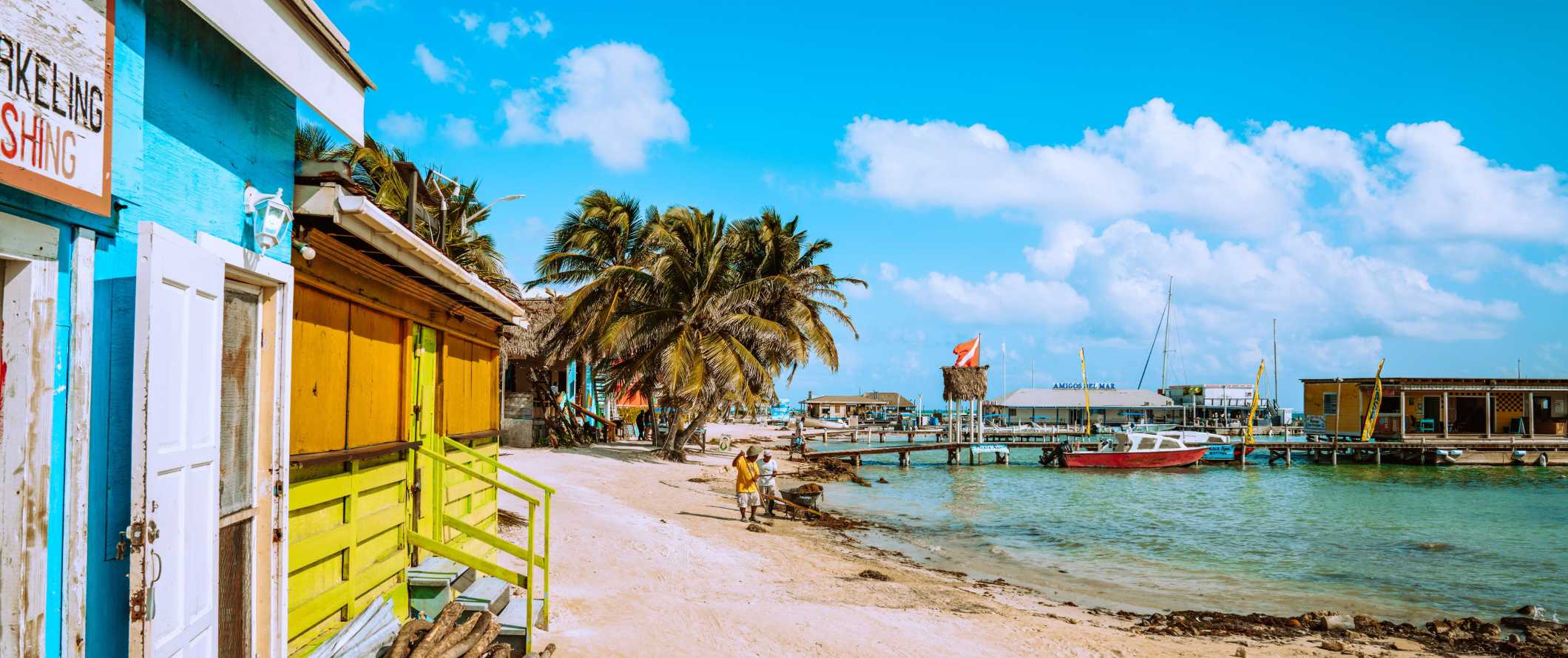
Accommodation – Hostel dorms with 6-8 beds cost $8-20 USD per night while private hostel rooms cost $15-30 USD for a single or double bed with private bathroom (in Belize, Costa Rica or Panama, you will pay on the higher end of that range).
Family-owned guesthouses or hotels are the next most affordable accommodation. These rooms average $25-40 USD per night for a private room with an ensuite bathroom. Many include breakfast, not to mention the added bonus of meeting a local.
In cheaper countries like Honduras, a private room can cost $15 USD per night while in a more expensive destination like Panama City, you can expect to pay on the higher end, about $40-50 USD per night.
Airbnb is also an option around Central America, with private rooms starting at around $30 USD per night. For an entire home or apartment expect to pay at least $70 USD per night (though prices are often double that).
Camping can be done easily at some hostels and in certain national parks. Many hostels have spaces where you can pitch a tent or string up a hammock for under $10 USD per night. National parks require camping fees that vary from country to country. See country guides for specifics on where to stay.
Generally, I’d avoid wild camping in this region (even where it is legal it is not advised due to crime, the heat, and wildlife).
Food – While the cuisine for each country in Central America varies, there is some overlap. Expect to find dishes centered around rice, beans, tortillas, meat, and seafood. Generally, you’ll find a mix of Spanish, Caribbean, and traditional Mesoamerican influences here. Fresh fruit is also huge, including favorites like bananas, plantain, mangoes, papaya, and more.
The cheapest food option is to eat at the roadside restaurants that dot the region. Buying your own groceries and cooking is also super affordable, though not all hostels have kitchen facilities.
At small restaurants serving regional cuisine, expect to pay around $5 USD for a meal. If you want really cheap food, you can find empanadas (fried pastries filled with meat, cheese, or potatoes) for under a dollar.
If you plan on cooking your own meals, head down to the local market and pick up fruit, vegetables, rice, and some meat or seafood for $20-40 USD per week depending on your diet.
The local markets have tons of fresh fruit for incredibly cheap, so fill up on that when you can. A typical restaurant meal per main dish and a drink is about $10 USD, however, western food costs about three times as much as local dishes — so skip it!
See each destination’s guide for more info and prices.
Backpacking Central America Suggested Budgets
On a backpacker budget of $30-55 USD per day, you can stay in a hostel dorm, eat some local street food, cook most of your meals, visit a few attractions (like museums and national parks), do some free walking tours, and take local transportation to get around. If you plan on drinking, you’ll need to add a few extra dollars to your daily budget.
On a mid-range budget of $75-150 USD per day, you can stay in a private hostel or Airbnb, eat out more, enjoy a few drinks, visit some historical sites and do some tours, and take coach buses and the occasional taxi to get around.
On a “luxury” budget of $180-290 USD per day, you can stay in a hotel, drink as much as you’d like, eat out for all your meals (including at Western restaurants), take private tours, rent a car for day trips, go diving, and even take the occasional flight. This is just the ground floor for luxury though. The sky is the limit!
Note that if you visit Costa Rica and Panama (the region’s two most expensive countries), you’ll spend on the higher end of these ranges (and above).
You can use the chart below to get some idea of how much you need to budget daily. Keep in mind these are daily averages – some days you’ll spend more, some days you’ll spend less (you might spend less every day). We just want to give you a general idea of how to make your budget. Prices are in USD.
Central America Travel Guide: Money-Saving Tips
While our country guides have more specific ways to save (every country in the region is very different), here are five general rules for saving money in Central America:
- Visit the markets – Although eating out is cheap in Central America, it makes sense to shop at the markets for your food to take on day trips or to prepare at your hostel. Fruit is super cheap!
- Hitchhike – Hitchhiking is one of the most popular ways to get around the region and used extensively by locals. You’ll find people regularly willing to pick up people and give them a lift. Just be sure to use common sense as some regions should not be traveled by hitchhiking.
- Eat on the side of the road – The local eateries at the side of the road will be the cheapest food you can eat, costing just a couple of dollars per meal.
- Avoid flying – Bus rides are longer, but if you are trying to see this region on a budget you shouldn’t fly. Flights are 5-10 times more expensive than the bus! An hour-long flight can cost hundreds of dollars. Avoid flying as much as possible!
Where to Stay in Central America
Each country guide has lots of suggested places to stay but here are some of my top top places to stay in the region:
- The Red Hut Inn (Belize City)
- Sophie’s Guest Rooms (Caye Caulker)
- Dirty McNasty (Caye Caulker)
- D’s Hostel (San Ignacio)
- Maya Papaya (Antigua)
- La Iguana Perdida (Santa Cruz, Lake Atitlan)
- Casa de Grethel (Flores)
- Hostal Los Lagos (Guatemala City)
El Salvador
- Hostal Cumbres del Volcan Flor Blanca (San Salvador)
- Hostel Casa Verde (Santa Ana)
- Roatan Backpackers Hostel (Roatan)
- Palmira Hostel (Tegucigalpa)
- Iguana Azul (Copan Ruinas)
- De Boca en Boca (Granada)
- Bigfoot Hostel & Volcano Boarding (Leon)
- Managua Backpackers Inn (Managua)
- Hostel Life is Good (Ometepe Island)
- Rocking J’s (Puerto Viejo)
- Costa Rica Backpackers (San Jose)
- Pura Natura Lodge Manuel Antonio (Manuel Antonio)
- Camino Verde B&B (Monteverde)
- Hostal Casa Areka (Panama City)
- Magnolia Inn Casco Viejo (Panama City)
- El Machio (Panama City)
- Bambuda Castle (Boquete)
- Bambuda Lodge (Bocas del Toro)
How to Get Around Central America
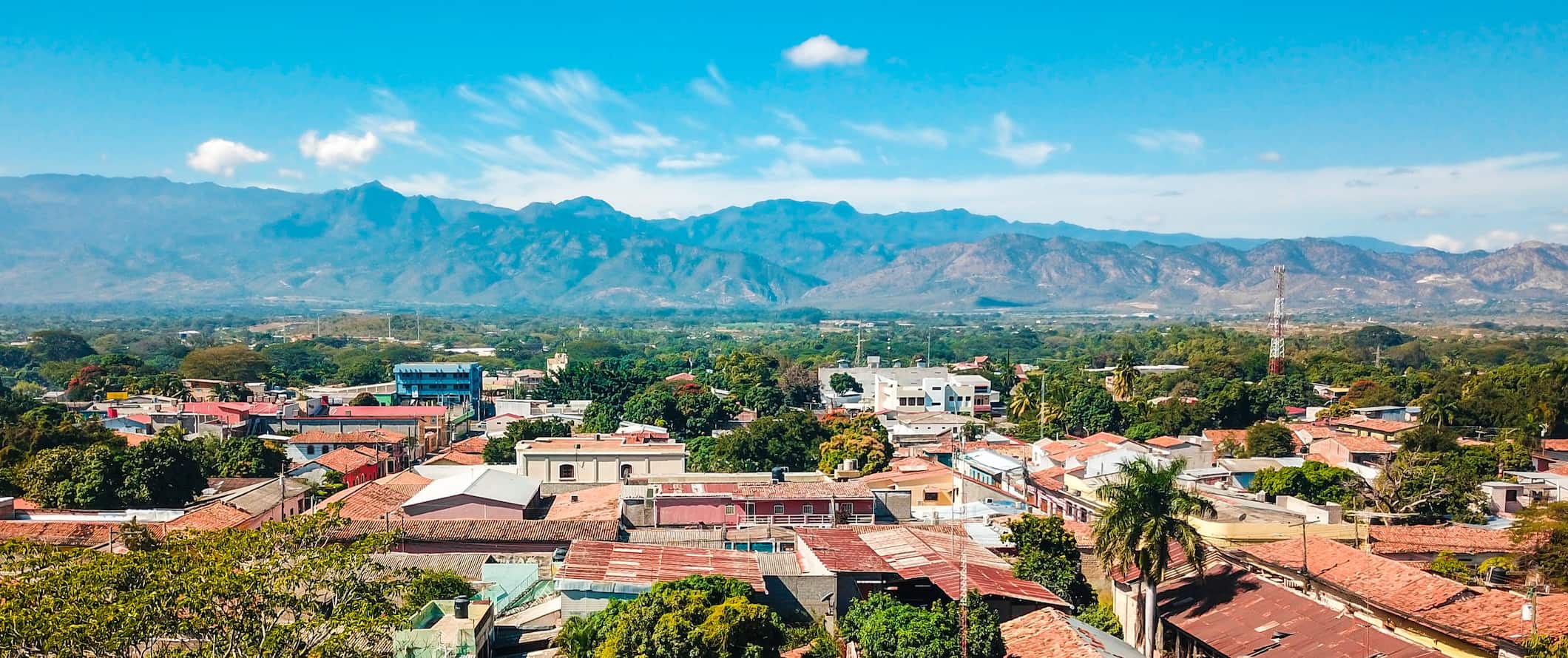
Public transportation – Public buses are the most common (and cheapest) way to get around, with fares costing less than a dollar. These buses are often referred to as “chicken buses” because of the number of chickens and rice that is transported on them. They stop just about everywhere to let people hop on and off, and you’ll be crammed in tight with locals. They’re slow, but cheap.
Taxi – Taxis are common and affordable, but not all of them have meters. Be sure to check before you get into the taxi and if there’s no meter, negotiate a fare upfront.
On the higher end, taxi fares start at about $2 USD in Panama City and then they charge $2 USD per kilometer. In San Jose, Costa Rica, rates start at around $1 USD and then are $1.11 USD per kilometer.
Always ask your hotel/hostel staff how much your ride should be so you know in advance. When in doubt, have them call a taxi for you as well so you know you won’t get ripped off.
Bus – Longer bus rides and overnight buses between countries usually cost between $10-30 USD. They’re not always overly comfortable, but they usually have air-conditioning and some night buses have reclining seats.
Shuttle buses are a popular way to get travelers around the backpacking trail. All you need to do is show up at a travel agency (they’re everywhere) and negotiate a price and route. Make sure you’re clear about where the bus is picking you up — it’s not always a bus station. In some cases, you can just show up and pay the driver onboard.
Larger international buses also run between the larger cities and tend to have their own bus terminals. Some services include Tica Bus, Central Line, and Expreso Panama.
On Tica Bus, for example, you can get from Panama all the way to Guatemala. From Panama to Costa Rica is about $55 USD, and the price increases the further you go. These buses are more comfortable, but the smaller minibusses arranged through an agency tend to be cheaper.
Train – Trains are non-existent in this region. Stick to buses.
Flying – Flying between cities and countries is expensive and routes are limited. A flight from Guatemala City to Belize City can cost upwards of $240 USD while a one-way flight from Belize to Panama is over $375 USD! I would avoid this method of travel unless you are very pressed for time and have lots of money to burn.
Car rental – Roads and driving conditions vary widely here. Overall, you’ll want to be an experienced driver here if you are going to rent a car. Rentals cost around $15-35 USD per day for a multi-day rental. For the best car rental prices, use Discover Cars .
When to Go to Central America
The weather in Central America varies drastically depending on where you are thanks to its many distinct microclimates from coast to coast (and with the altitude in the mountainous areas). The dry season is from December to April, which is generally considered the best time to visit. This is also when most people visit so you can expect more crowds and inflated prices.
The rainy season is from April to December, with hurricane season being at its peak in September and October (especially on the Caribbean side). Having said that, the rainy season isn’t a bad time to visit. Mostly you’ll find periods of heavy rainfall, but plenty of nice weather otherwise. Humidity can be high, and mosquitos and tropical storms can be a nuisance.
In the mountains, temperatures can drop as low as 10°C (50°F). In the hottest places, it’ll soar into the high 30s°C (80s°F). Refer to our country-specific guides to get a better breakdown of temperatures and climates!
How to Stay Safe in Central America
While Central America is generally safe for traveling and backpacking, there’s no denying that certain precautions should be taken. There are certain parts of Honduras, El Salvador, and Guatemala that are currently best to avoid completely and theft and pick-pocketing is common in most cities around the region.
Additionally, there are lots of places you don’t want to go out at night (especially in big cities).
You can find the current situation for each country in their destination guide but here are some general rules for staying safe in Central America:
- Avoid isolated areas, especially at night and in big cities.
- Avoid night buses, where robberies are common, unless your hotel/hostel staff say otherwise.
- Avoid taking drugs here. Penalties are stiff.
- Be aware of your surroundings at all times.
- Keep your personal belongings on you while using public transit (especially chicken buses).
- Take taxis at night in foreign cities (ideally with other travelers).
- Don’t wear flashy items or start flashing your phone around (especially at night).
Overall, violent attacks against tourists are rare. Petty theft is common here and you must be extremely vigilant to make sure you don’t get robbed — especially when on public transportation or in large crowds.
Don’t carry lots of cash on you and avoid flashing expensive gear. When you go out, only take as much money as you need.
Keep an eye out for common scams against tourists , such as fake ATMs, taxis that don’t use a meter, and questionable tour operators.
For more in-depth coverage of how to stay safe in Central America, check out this post we wrote that answers some frequently asked questions and concerns.
Solo female travelers should generally feel safe here, however, the standard precautions apply (never leave your drink unattended at the bar, never walk home alone intoxicated, etc.).
The most important piece of advice I can offer is to purchase good travel insurance. Travel insurance will protect you against illness, injury, theft, and cancellations. It’s comprehensive protection in case anything goes wrong. I never go on a trip without it as I’ve had to use it many times in the past.
Central America Travel Guide: The Best Booking Resources
These are my favorite companies to use when I travel. They consistently have the best deals, offer world-class customer service and great value, and overall, are better than their competitors. They are the companies I use the most and are always the starting point in my search for travel deals.
- Skyscanner – Skyscanner is my favorite flight search engine. They search small websites and budget airlines that larger search sites tend to miss. They are hands down the number one place to start.
- Hostelworld – This is the best hostel accommodation site out there with the largest inventory, best search interface, and widest availability.
- Booking.com – The best all around booking site that constantly provides the cheapest and lowest rates. They have the widest selection of budget accommodation. In all my tests, they’ve always had the cheapest rates out of all the booking websites.
- Get Your Guide – Get Your Guide is a huge online marketplace for tours and excursions. They have tons of tour options available in cities all around the world, including everything from cooking classes, walking tours, street art lessons, and more!
- SafetyWing – Safety Wing offers convenient and affordable plans tailored to digital nomads and long-term travelers. They have cheap monthly plans, great customer service, and an easy-to-use claims process that makes it perfect for those on the road.
- LifeStraw – My go-to company for reusable water bottles with built-in filters so you can ensure your drinking water is always clean and safe.
- Unbound Merino – They make lightweight, durable, easy-to-clean travel clothing.
- Top Travel Credit Cards – Points are the best way to cut down travel expenses. Here’s my favorite point earning credit cards so you can get free travel!
Central America Travel Guide: Related Articles
Want more info? Check out all the articles I’ve written on Central America travel and continue planning your trip:

Do You Need Travel Insurance for Costa Rica?

The Best Tour Companies in Costa Rica
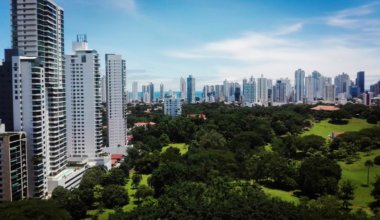
The 6 Best Hostels in Panama City, Panama
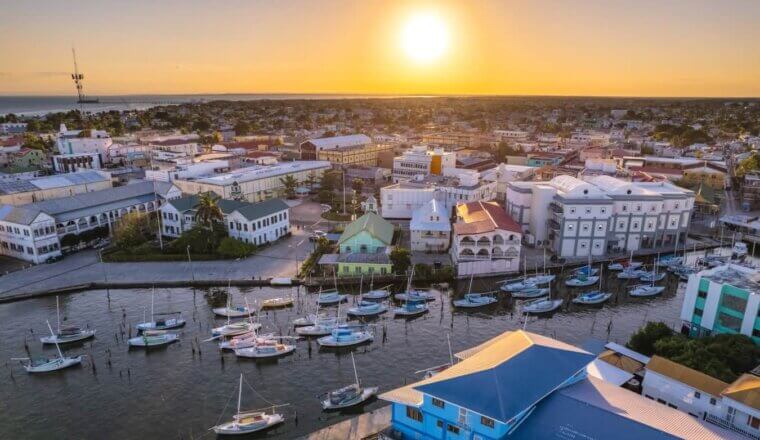
Is Belize Safe to Visit?

Is Central America Safe to Visit?
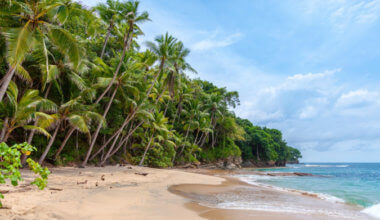
How to Get Around Central America on a Budget
Get your free travel starter kit.
Enter your email and get planning cheatsheets including a step by step checklist, packing list, tips cheat sheet, and more so you can plan like a pro!

- Where To Stay
- Transportation
- Booking Resources
- Related Blogs
The 14 best Places to visit in Central America: ruins, reefs, and romantic beaches
May 3, 2022 • 9 min read
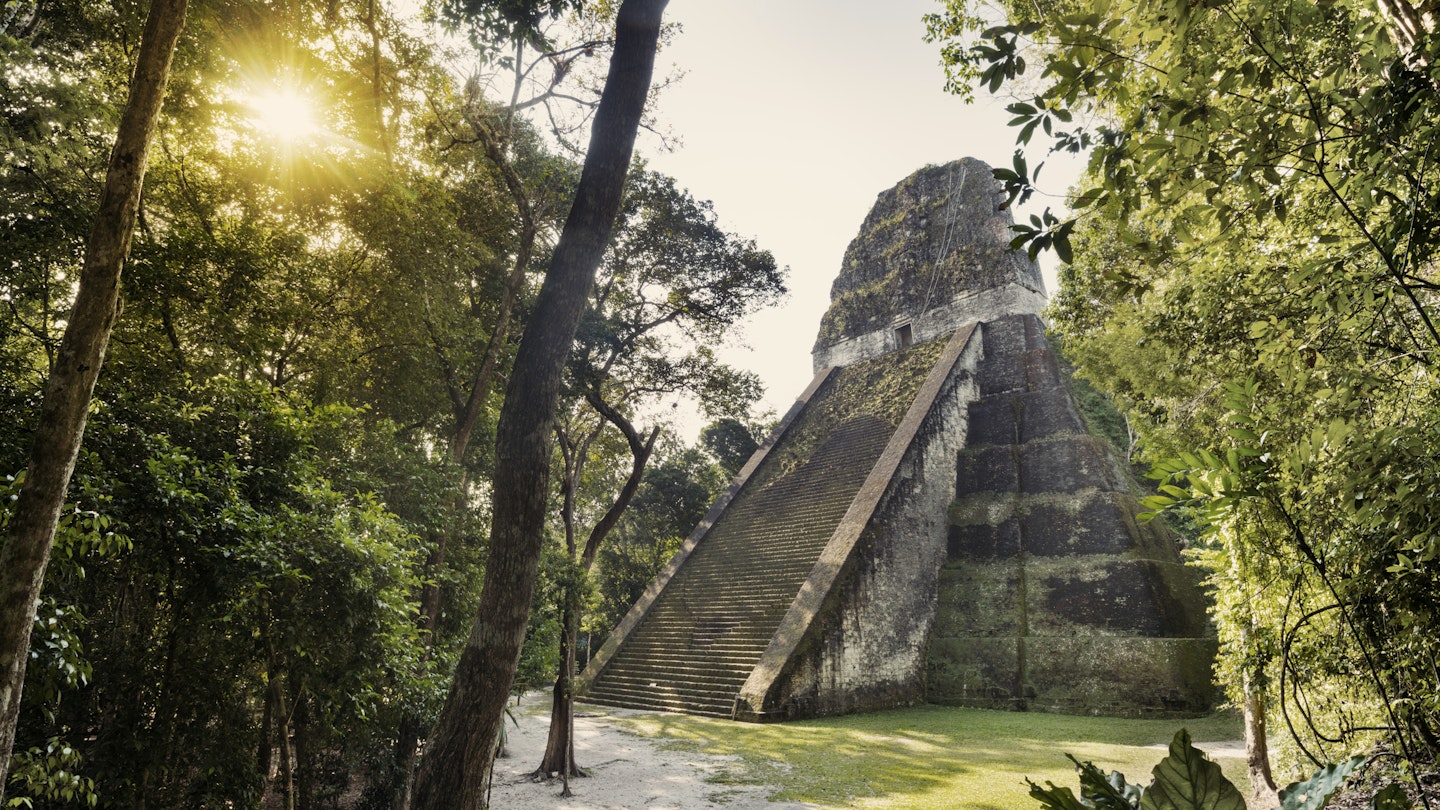
Tikal is a thrilling Mayan site in the middle of the Guatemalan jungle © Justin Foulkes / Lonely Planet © ©Justin Foulkes/Lonely Planet
If you’ve ever dreamed of hiking a volcano, exploring ancient ruins and snorkeling across a coral reef all in one trip, then Central America is the place for you.
Its seven countries offer some of the world’s most sought-after destinations. History buffs will have a hard time choosing between Maya ruins and colonial cities. Nature lovers can stalk monkeys and sloths on treks through the jungle. Or watch newly hatched turtles scramble for the sea. Surfers and beach bums will be satisfied, too – there are endless seaside dream destinations.
Whatever you choose to do, the results won’t disappoint. (You could even do the lot.) Short regional flights and an extensive bus network make it easy to visit several countries in one trip. To narrow it down, here are the 14 best places to visit in Central America. Be warned, though: wherever it is you go, you run the risk of never wishing to leave.
1. Splash about on Ambergris Caye in Belize
Dubbed La Isla Bonita (The Beautiful Island), Belize ’s most popular vacation island offers sun-drenched days, ritzy resorts and an imaginative culinary scene. The bustling city center, San Pedro, boasts some can’t-miss nightlife, too. But travelers flock here mainly because of the island’s bathtub-warm waters and flourishing undersea environment.
Whether you aim to dive off an island dock and backstroke in the surf, kayak through a mangrove lagoon, or snorkel over brightly colored reefs alongside nurse sharks and small stingrays, Ambergris Caye has you covered.
2. Marvel at Guatemala’s spectacular Lago de Atitlán
Ringed by lush hillsides and towering volcanoes, Central America’s deepest lake is an escape to simpler times. The aquamarine waters of this endorheic crater basin lure travelers from all over the globe. It’s also home to several diverse communities that proudly display their traditional Guatemalan ways of living.
Most travelers come here for long-distance kayaking and volcano climbing. Lively San Pedro La Laguna is great for throwing it down, too. But Lago de Atitlán also attracts those wanting to learn Spanish, practice yoga or stay with a local family. Whatever you do, take some time to relax and reflect as the gentle waters of this glorious lake lap against the shore.
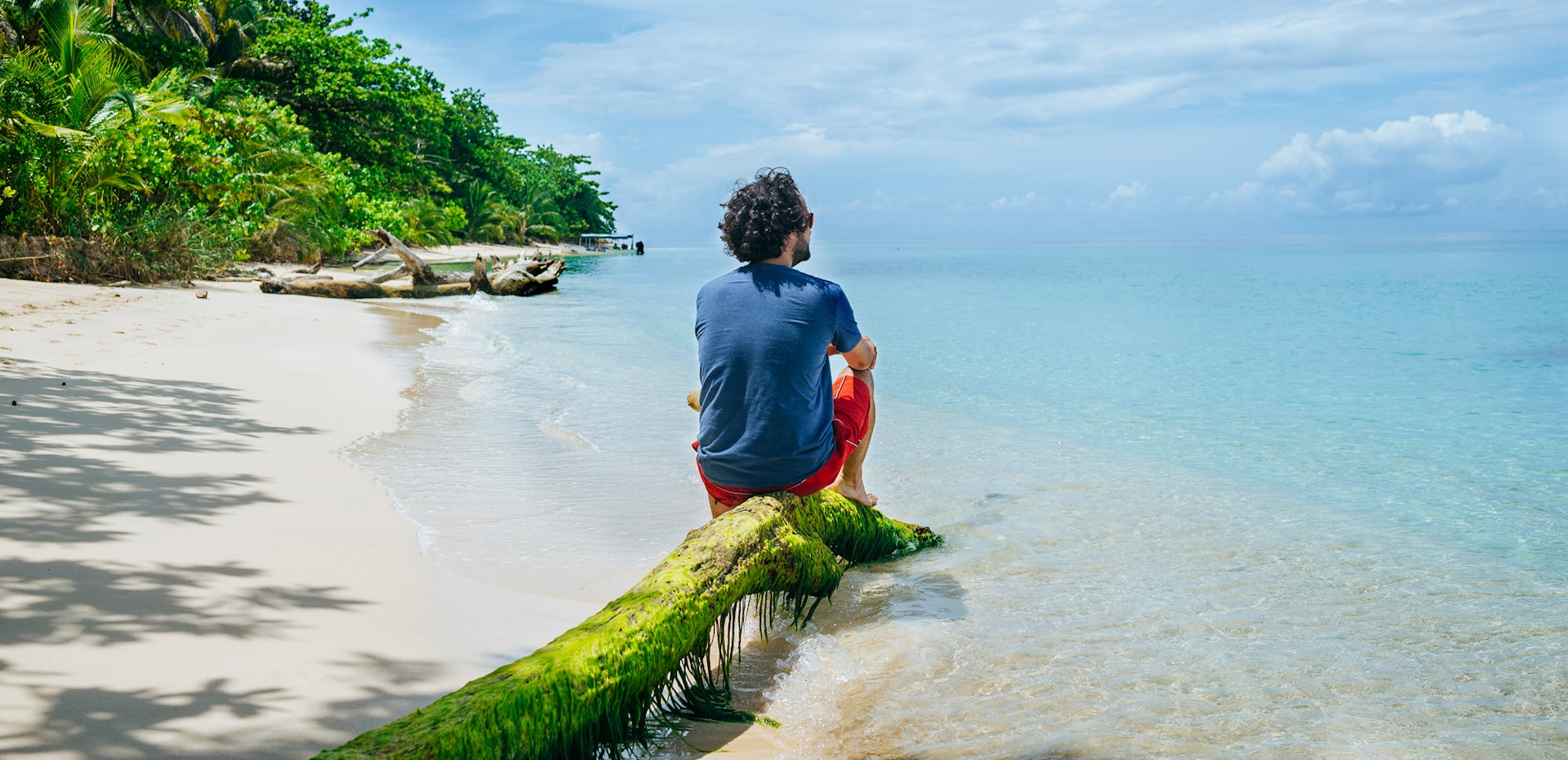
3. Get a taste of island life at Bocas del Toro in Panama
Dotted with Caribbean-style clapboard houses and awash with dockside restaurants and hotels, this stunning archipelago is Panama's hottest ticket. Its swaying coco palms and translucent blue water attract throngs of international travelers – some who’ve stayed forever, forming a sizable expat community.
During the day, you can pedal a beach cruiser around, snorkel among giant sea stars, surf reef breaks, tour chocolate farms and feast on delicious Caribbean fare. In the evenings, Latin rhythms and clinking glasses fill the air on Islas Colón .
4. Discover the forest-covered Mayan city of Tikal in Guatemala
If you strolled this ground 1200 years ago, you’d be walking through a thriving Mayan metropolis. Today, Guatemala ’s most significant archaeological site is all haunting ruins and twisting jungle – interrupted only by the occasional cacophony of bird squawks and howling monkeys.
Tikal once rivaled Rome for size, population and political clout, but a millennium of dense overgrowth has since reclaimed the remains of this once-mighty empire. The sprawling park merits multi-day explorations: either base yourself in laid-back, lakeside Flores or stay on the site to see the sun rise over these majestic, ancient temples.
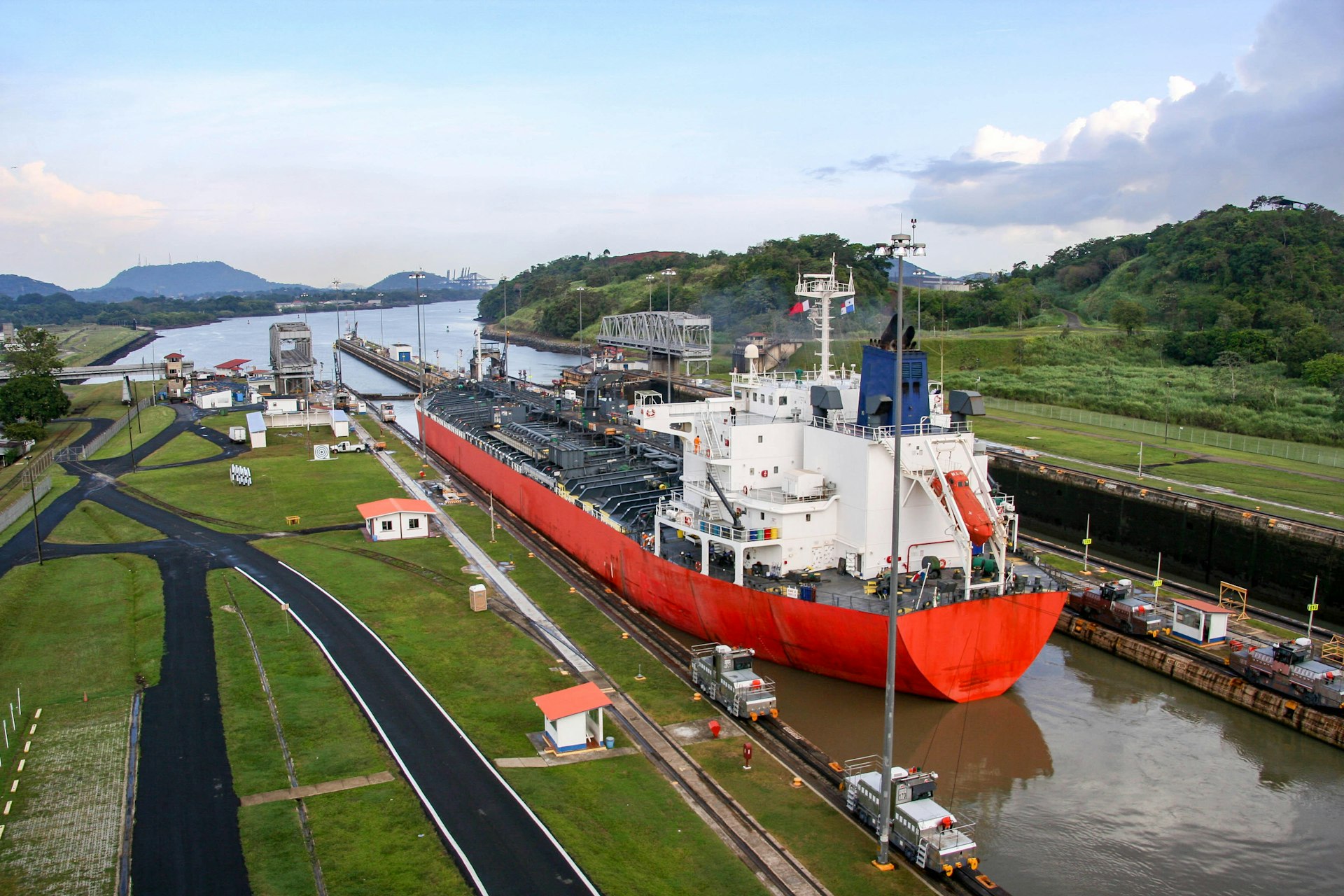
5. Get under the skin of Panama City
The glistening steel-and-glass skyline of Central America’s most hustling, bustling capital city is only its tiara. The heart and soul of the city lie in its older districts, such as Casco Viejo . This area brims with restored colonial buildings, many of which are now boutique hotels, swanky restaurants, and countless rooftop bars.
Seek out the crumbling 16th-century ruins of Panamá Viejo – part of the original city – as well as the rollicking nightlife of Calle Uruguay. The city's casinos also add another level of excitement. Visitors can drive west to see the ingenious lock system of the world-famous Panama Canal . The rainforest and beach are only a coconut toss away too.
6. Drive Ruta de las Flores, El Salvador’s best road trip
For a glimpse into the soul of El Salvador, cruise the 20 miles between Sonsonate and Ahuachapan in a car. The local villages, artisanal shops, fragrant coffee plantations and colorful wildflower meadows are essentially the entire (admittedly small) country writ small.
Stop at any of the five main settlements over a weekend, and you’ll find them abuzz with food extravaganzas and merrymaking. Leave ample opportunity to shop for crafts and gulp the coffee, regardless of when you go. Don’t be afraid to veer off the main route either: at Los Chorros de Calera, you can hike among the cliffs and dive into waterfall-fed swimming holes.
7. Fall in love at romantic Manuel Antonio in Costa Rica
Manuel Antonio is for lovers. Dozens of exquisite hotels perch on cliffs overlooking the cerulean Pacific on the Pacific coast of Costa Rica . Beyond the lavish accommodations, the area’s romantic dining establishments, picturesque beaches and invigorating spa treatments define this welcoming destination.
As a bonus, wildlife encounters are all but guaranteed. Squirrel monkeys swing by at breakfast while iguanas bask with guests by the pool, and true nature lovers can also spy on sloths at the nearby Parque Nacional Manuel Antonio . Thrill-seeking honeymooners will also be satisfied, as all the requisite Costa Rica adventures – zip-lining, white-water rafting, kayaking and more – are just beyond your doorstep.
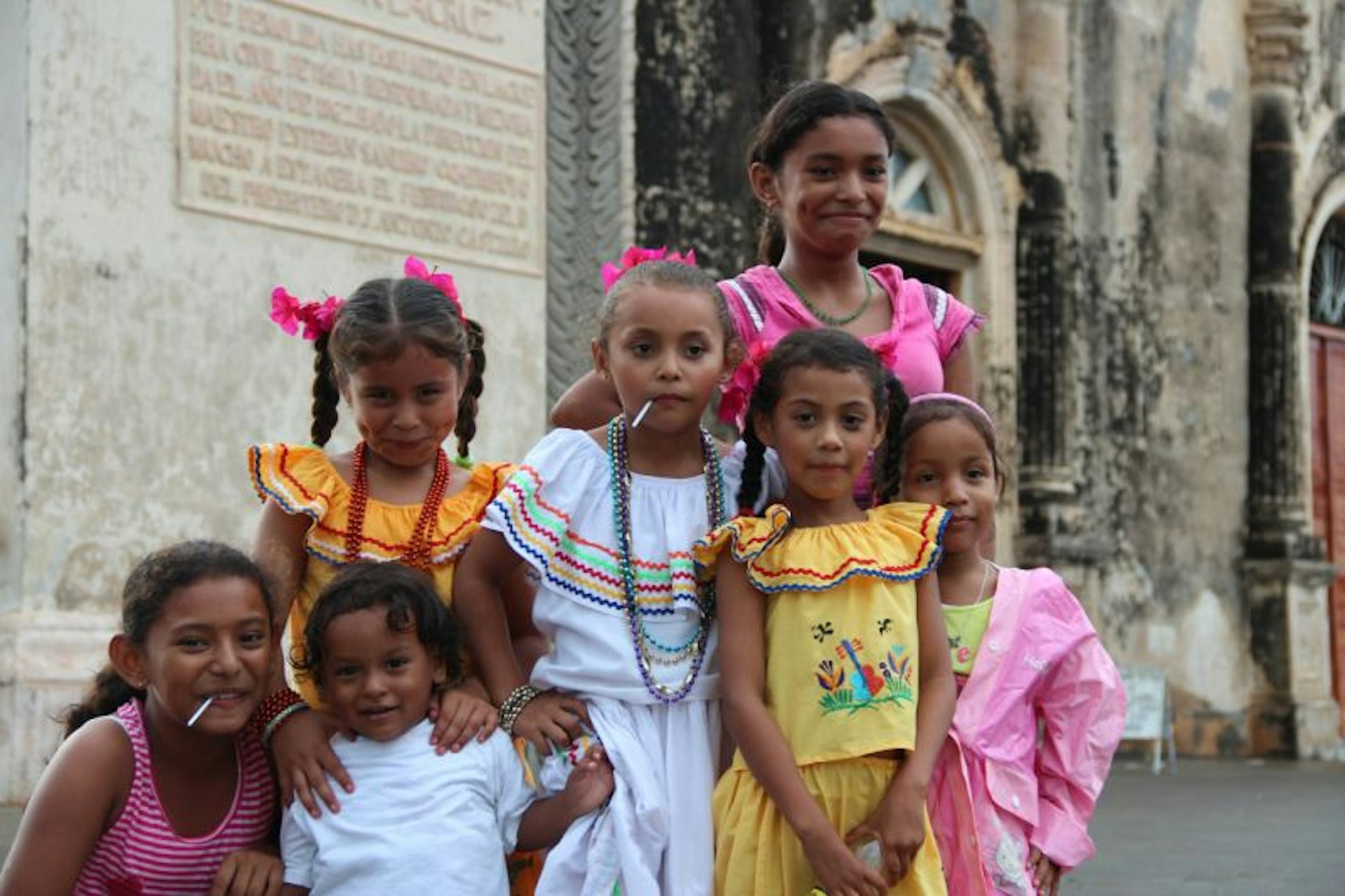
8. Wander in awe around Granada, Nicaragua’s oldest city
Granada is one of the oldest colonial cities in the region, and no trip across Central America is complete without exploring well-preserved architecture. Upon arrival, hop in a horse-drawn carriage and ride around town as you admire the ubiquitous hand-painted tiles and colonial homes.
In Parque Central, the mustard-yellow Catedral de Granada presides over the square, where food vendors and handicraft artisans hawk their goods. Over by the lake, get into a boat or kayak for a tour of Las Isletas – a bunch of volcanic islands just off the city’s shore – where you’ll find fancy vacation homes and an old Spanish fortress.
9. Chill on the beaches of Costa Rica’s Southern Caribbean Coast
The pace on Costa Rica’s Caribbean shoreline is decidedly sloth-like. And that’s exactly why travelers can’t get enough of it. They come here to slow down, sip on fresh coconuts, lounge on graham-cracker-colored beaches and bathe in the toasty blue-green water.
For those who insist on more active experiences, there are plenty of jungle hikes, cacao farm tours and snorkeling excursions to sign up for. Wild, all-night parties are always an option, too. Just remember to fuel up first on the spectacular local cuisine: think whole fried snapper with a side of coconut rice and fried plantains, washed down with agua de sapo (unrefined sugar, limes, and ginger known as “toad juice”).
10. Party the night away at Playa El Tunco in El Salvador
Named for a distinctive pig-shaped rock ( tunco means pig), this black-sand paradise is famous for its beach breaks and even more famous for its hard-partying surfer crowd. Weekend mayhem tops the agendas of locals and tourists alike, with everybody nursing their hangovers the next day with thin-crust pizza from Tunco Veloz .
Those seeking a more laid-back experience need only travel a few minutes in either direction to arrive at tranquil, secluded beaches. In the windswept wilderness of Barrio Santiago, turtles hatch along the shore.
11. Joining the backpacking crowd on Utila in Honduras
If you’ve got big travel dreams but a little budget, Utila is just the spot, particularly if you’re looking to don some flippers. The dreamy turquoise waters off this palm-dotted Caribbean island in Honduras are replete with surreal coral formations and curious fish, and diver certification courses here are some of the world’s least expensive.
All year round, snorkelers and divers can shimmy around near whale sharks on the island's northern tip. Then, when the adventures are over, some tasty seafood and a lively bar scene await.
12. Chow down on Caribbean food on Nicaragua’s Corn Islands
If you like it spicy, head for Central America’s Caribbean – in particular, these two remote islands off the eastern coast of Nicaragua. This is the region’s epicenter of spiny lobster, and plenty of locals make a living off ensnaring it. After you’ve had your fill of the coveted crustacean, bite down on whole fried snapper, a heaping plate of rice and beans, and the famous rondon , a local soup with fish, shellfish, tubers, heart of palm, plantains, peppers and piles of spices.
On Great Corn – the larger and busier of the two islands – restaurants serve this stew year-round. The ingredients must simmer all day in a spicy coconut broth, though, so you’ll need to give 24 hours' notice for your order.
13. Admire the ancient Mayan sculptures of Copán in Honduras
Of all the Maya ruins scattered around Central America, Copán has the most impressive chiseled stone sculptures. Human-sized carvings are scattered across this Unesco World Heritage site, which is tucked into a scenic river valley that as many as 20,000 people once called home.
A day spent peering around these temples and the surrounding sites offers a deep dive into the region’s past. Don’t miss the revered hieroglyphic stairway, which describes the history of the ancient city’s rulers in the longest inscription of Maya text known to man. The neighboring town of Copán Ruinas has boutique hotels; you can also stay in the nearby pine-forested hills at Hacienda San Lucas.
14. Dive Blue Hole Natural Monument in Belize
Just as climbers have Mt Everest, scuba divers have Belize’s Blue Hole National Monument . They dive more than 100ft into this massive submarine sinkhole, cruising past oversized stalactites and sometimes encountering large, powerful reef sharks as they stare down into the 430ft abyss.
On the nearby islands of Ambergris Caye and Caye Caulker , you’ll find environmentally friendly and highly experienced tour operators. But travelers seeking a more adventurous experience should consider a stay on Long Caye, a small and secluded island just minutes from the country’s most coveted underwater attractions.
You might also like: 15 things you absolutely must do in Central America 8 of the best places to surf in Central America for beginners to pros Central America's most thrilling volcano adventures
Explore related stories

Jun 4, 2024 • 7 min read
Costa Rica and Panama offer a wealth of wildlife, untamed nature, and stunning beaches. So how do you choose which to visit? We can help you decide.

May 22, 2024 • 8 min read

May 21, 2024 • 5 min read

May 19, 2024 • 6 min read
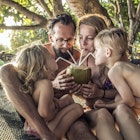
May 8, 2024 • 5 min read
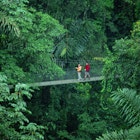
Apr 2, 2024 • 21 min read

Mar 20, 2024 • 8 min read

Mar 10, 2024 • 8 min read
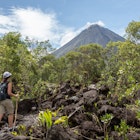
Mar 3, 2024 • 7 min read

Mar 2, 2024 • 7 min read

IMAGES
VIDEO
COMMENTS
11. Cataratas Pulhapanzak. 251. Waterfalls. One of the most beautiful tourist attractions and interesting Honduras, and one of the best natural landscapes in Central America.1. Waterfall tour2. Tour to waterfall and caves. Extreme adrenaline…. See ways to experience (3)
11. Venture deep into the Rio Platano Biosphere Reserve. Expect to see spider monkeys and more in this remote region of Honduras. Wildlife fanatics, adventure junkies and anyone with a desire to get seriously off the beaten track needs to visit the Reserva de la Biosfera de Río Plátano ( Google Map ).
A diamond in the rough, Honduras, Central America's second-largest country, dazzles visitors with its natural beauty and diverse wildlife. ... Discover a world of wonder in this diverse country, with our list of the top attractions and places to visit in Honduras. On This Page: 1. Roatán, Bay Islands; 2. Copán Ruins Archeological Site; 3 ...
10. Lake Yojoa region. Best place for bird-watching and hiking. Lago Yojoa, Honduras' largest lake, is another locals' getaway in the middle of the countryside, about four hours from Tegucigalpa. Lakeshore restaurants serve up fried fish with the typical sides of rice, beans, curtido and plantains.
Located in Central America, Honduras is a tropical paradise attracting many tourists every year to its gorgeous islands, lush rainforests and picturesque mountains. ... Although this is one of the best places to visit in Honduras, guides are required for this adventure. The falls are the highlight of a privately run area. The trek to the falls ...
The best places to visit in Comayagua are all downtown and include the Spanish Baroque Cathedral, the first university in Central America, and several churches. Most of these were constructed in the 16th-century but have been repurposed to their original state. In the Comayagua cathedral you will find one of world's oldest still working clock.
For first-timers, the ideal travel itinerary lies along the corridor between Copán Ruinas and the Bay Islands.This is where you'll find the best places to visit in Honduras. Copán is home to the most artistically impressive and most studied Mayan site in Central America. The extensive knowledge we have about Copán and its ancient ...
Central America. White beaches fringed by the world's second-largest barrier reef, jungle-covered mountains cut by raftable white-water rivers and home to an astounding number of bird species, exquisite Maya ruins, colonial, cobblestone villages, fresh seafood grilled on the beachâ ¦Yes, all this is found in Honduras, a country often hurried ...
11. Cataratas Pulhapanzak. 251. Waterfalls. One of the most beautiful tourist attractions and interesting Honduras, and one of the best natural landscapes in Central America.1. Waterfall tour2. Tour to waterfall and caves. Extreme adrenaline…. See ways to experience (3)
See the extraordinary Copan Ruins. 2. Lago de Yojoa for birdwatching and more. 3. See the 500-year-old churches of Gracias. 4. Relax by the crystal clear waters of Roatan Island, Bay Islands. 5. Visiting Gumbalimba Park - one of the best things to do in Honduras with kids.
Parque Nacional Cusuco. Western Honduras. Just 45km from San Pedro Sula, but remarkably difficult to access, Parque Nacional Cusuco is a cloud forest nestled in the impressive Merendón mountain….
6. La Tigra National Park. High up in the misty mountains of Honduras, La Tigra National Park beckons nature lovers with its enchanting allure. As one of the most beautiful places to visit in Honduras, this park is a tapestry of dense forests, cascading waterfalls, and vibrant wildlife.
Overview of Honduras. Situated in the heart of Central America, Honduras is a country known for its breathtaking natural beauty, diverse landscapes, and rich cultural heritage. It shares borders with Guatemala, El Salvador, and Nicaragua, and is surrounded by the Caribbean Sea to the north and the Pacific Ocean to the south.
11. Omoa. Source: Photo by Flickr user Mario A. Torres used under CC BY-SA 2.0. For a truly offbeat experience in Honduras, head to the seemingly end-of-the-road but utterly picturesque Omoa which sits on a curving bay just a little southwest of Puerto Cortés on the Caribbean coastline.
Best Places to Visit in Honduras. 1. Roatan. Roatan is the crown jewel of Honduras' tourist industry. The largest island of the Bay Islands group, Roatan has been the country's premier tourist destination for decades, welcoming cruise ships and resort-goers from around the world.
11. Cataratas Pulhapanzak. 251. Waterfalls. One of the most beautiful tourist attractions and interesting Honduras, and one of the best natural landscapes in Central America.1. Waterfall tour2. Tour to waterfall and caves. Extreme adrenaline…. See ways to experience (3)
Gradually, Honduras is waking up to its potential as an ecotourism destination - its network of national parks and preserves is extensive - as well as the likely benefits of an increased tourist infrastructure for the country's struggling economy (it's the second-poorest country in Central America, with more than half the population living below the poverty line).
Read on to discover 10 of the top things to do when visiting Honduras. 1. Explore the Copan Ruins. Located in the mountains of western Honduras, the town of Copan is a logical first stop if you're visiting Honduras as part of a larger Central America trip and therefore coming by bus from El Salvador or from Antigua, Guatemala.
4. Panama City, Panama. Gualberto Becerra/Shutterstock. As the capital of Panama, Panama City is a bustling city filled with modern skyscrapers, stunning architecture, the renowned Panama Canal shipping and transportation hub, and vibrant culture that makes it one of our favorite places to visit in Central America.
Best Places to Visit in Costa Rica. 4. Puerto Viejo. Riding on a beach in Puerto Viejo! Puerto Viejo is a small town on the Caribbean Coast of Costa Rica. With lush jungle, amazing beaches, a wildlife rescue center, and vibrant nightlife, Puerto Viejo is easily one of the best places to visit in Central America.
Honduras is a place of immense beauty and diversity, but traveling here does require some forethought and on-the-ground know-how. ... The 14 best Places to visit in Central America: ruins, reefs, and romantic beaches. May 3, 2022 • 9 min read. Read more articles. For Explorers Everywhere. Follow us. become a member Join the Lonely Planet ...
5. Roatán. Roatán is a long, thin Bay Island that has become a popular Honduras tourist attraction in recent years. Diving and snorkeling among the abundant coral reefs attract most visitors, while West Bay is a popular place for travelers to stay - hotels range from budget options to more exclusive pricey stays.
Surrounded by the Pacific and Atlantic Oceans, the slender land bridge of Central America runs from Mexico to South America and is made up of seven countries: Guatemala, Belize, El Salvador, Honduras, Nicaragua, Costa Rica, and Panama.. Political and civil unrest in the 1980s kept most tourists away for decades (people never forget bad news), but now the area is becoming hotspot for travelers ...
Explore our selection of Central America's top ten travel destinations, and get ready for a rainbow of sights, sounds, and life-changing experiences. ... Copan Ruinas, Honduras.
2. Marvel at Guatemala's spectacular Lago de Atitlán. Ringed by lush hillsides and towering volcanoes, Central America's deepest lake is an escape to simpler times. The aquamarine waters of this endorheic crater basin lure travelers from all over the globe.
Pristine beaches and jungle adventures await on these tropical Mexican and Caribbean islands. Get your passport ready for your choice of a lounge spot, adventure-ready jungle, or lively beach town.